In the small town of Cherasco, in the province of Cuneo, you can make an appointment to visit a very interesting synagogue on private property. Hardly bigger than a living room, the synagogue features magnificent woodwork and gilding. A plaque at the entrance commemorates the founding of the synagogue in 1797. The baroque tevah in the room’s center is made of polychrome wood. The aron has finely sculpted, gilded swinging doors.
Saluzzo’s small Jewish quarter maintains its former appearance in the area around Via Deportati Ebrei. In one of the courtyards on this street stands a building containing a synagogue on its third floor. Constructed in the eighteenth century and remodeled in 1832, the prayer hall was designed to accommodate more than 300 persons. Notice the beautiful carved door, as well as the gilt wood aron and the tevah dating from the eighteenth century.
The most elegant of the region’s Baroque synagogues is found in the little city of Carmagnola near Turin. The city’s Jewish community was forced to live in a ghetto beginning in 1724.
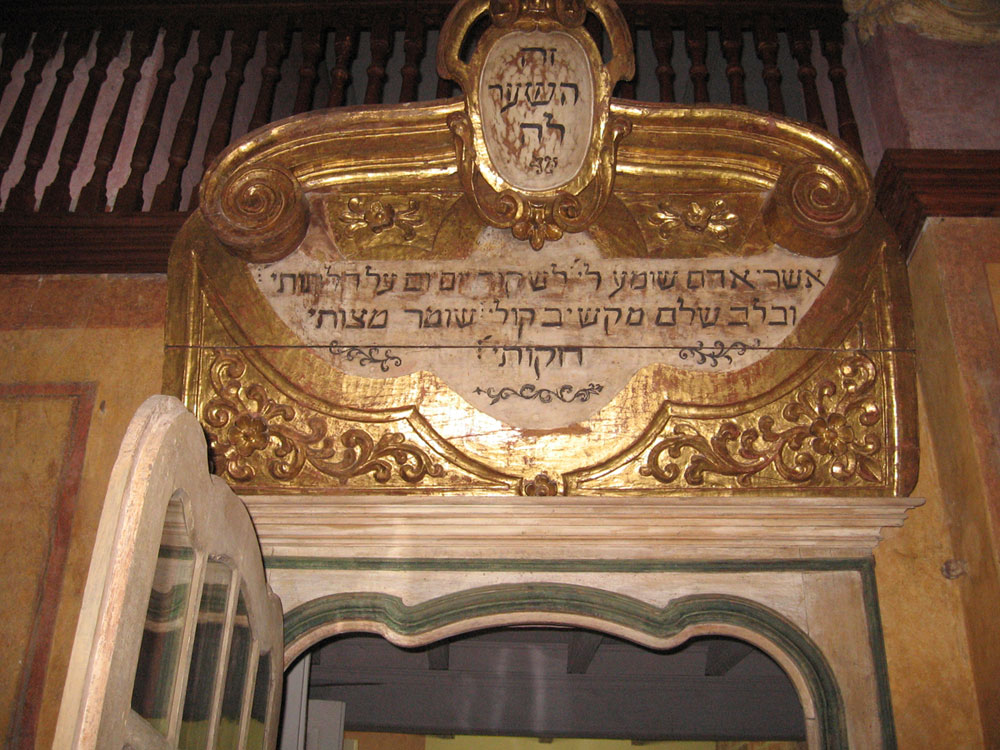
The temple is on the second floor of an eighteenth-century house opposite the former entrance to the ghetto. Passing through a vestibule decorated with frescoes, you will enter a prayer hall almost square in shape (30 ft. x 33 ft.) with a coffered wooden ceiling and lovely ornamental windows.
In the center stands a magnificent Baroque bimah sculpted of gold, black, red, and green polychrome wood with slender columns supporting a large crown. The richly decorated aron is surrounded by two columns and stucco. The walls are paneled midway in sumptuously carved dark wood. These decorations, apparently older than the synagogue itself, are oversized compared to the dimensions of the room. The woodwork dating from the sixteenth and seventeenth centuries is of exceedingly high quality and reminiscent of the furniture in the collections of the royal house of Savoy. “If these are not the same artisans, they belong to the same workshop”, remarked art historian David Cassuto in his study on the Baroque synagogues of Piedmont.

Turin is one of the finest examples of the crossroads of Jewish cultures: Ashkenazim from the north, Provençals following the expulsion, Sephardim following the Inquisition, Italians for 2 millennia…
Turin was first the capital of the Duchy de Savoy, then of the Kingdom of Sardinia. The Jewish presence was recorded by the Bishop Maximus of Turin as early as the fourth century. The only trace of Jewish presence to have been recorded then on only appeared a thousand years later. In 1424, French Jews Elias Alamanni and Amedeo Foa settled in Turin.
The Grand Synagogue deserves a short visit. Opened 16 February 1884 amid great pomp and ceremony, this majestic neo-Moorish building with its four onion-domed towers attests to the elation of Italy’s Jews after their emancipation. Needless to say, it was in such spirit that the Jewish community decided to call for a competition of projects celebrating the integration of Turin’s Jews. Architect Enrico Petiti did not skimp on the decorations for the building mixing various influences.
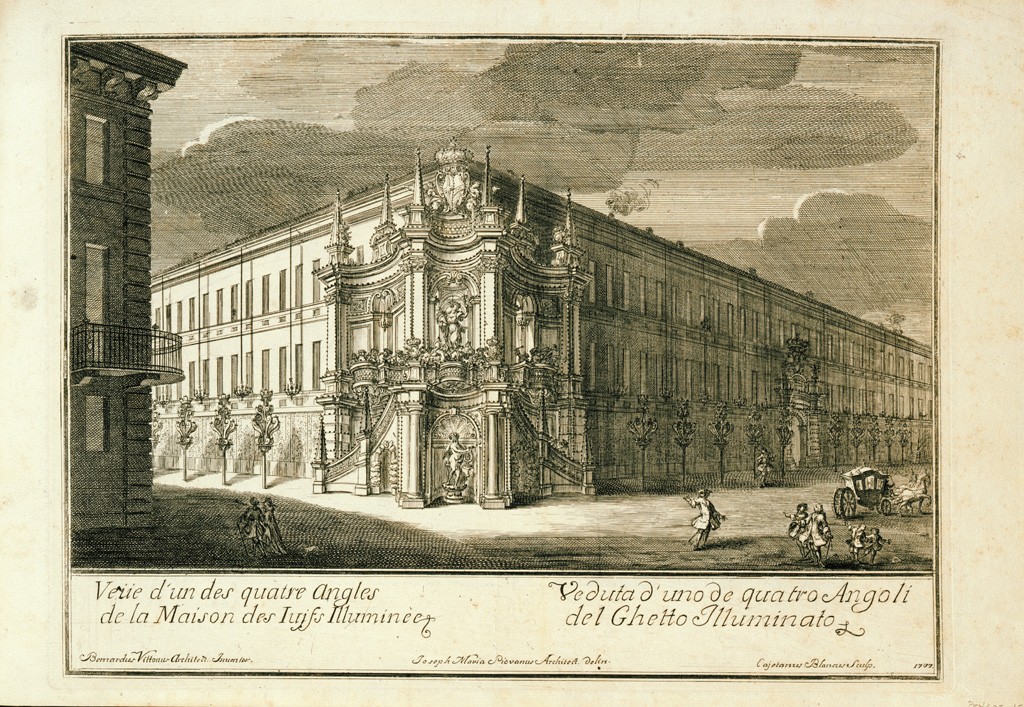
Most of which, sadly, were destroyed when the Grand Temple caught fire in 1942 after an Allied bombing. A significant portion of the archives of the Jewish community of Piedmont was also destroyed. The synagogue was restored between 1945 and 1949. Later, a smaller synagogue was built inside those walls. It serves to welcome common events and rituals. It is usually named Tempio Piccolo (“the small temple”).
Some ten minutes away on foot from the synagogue and the community center, behind the animated Via Roma, one can still see traces of the former ghetto .
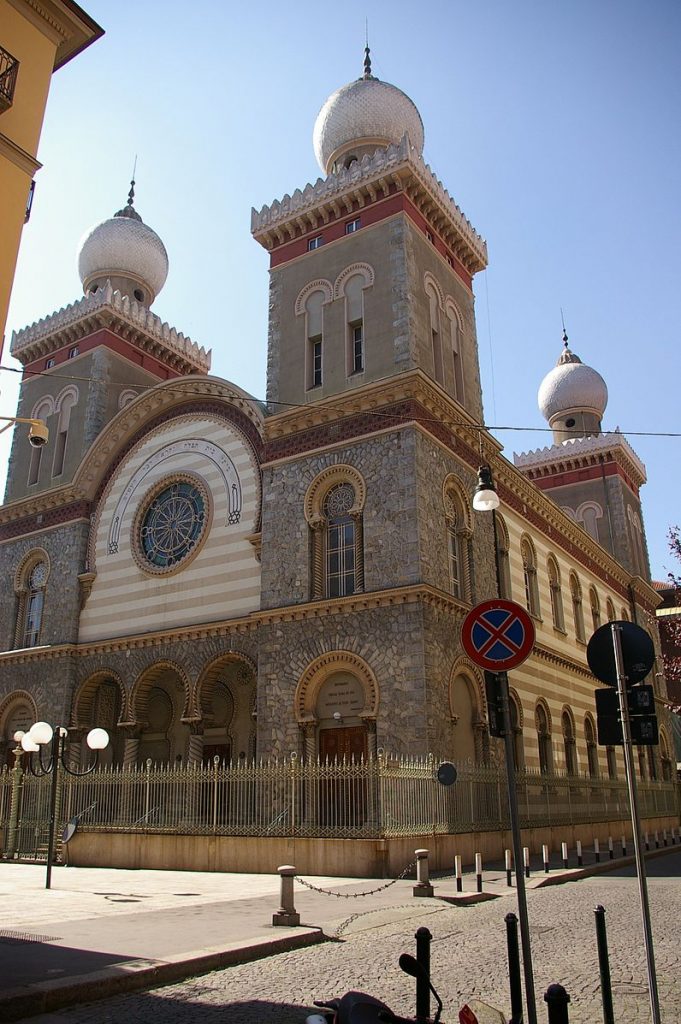
In 1430, Duke Amedeo VIII decided to create a special status for Jews, imposing many restrictions as well as heavy taxes. The ghetto was thus created in 1679, at the request of the Regent, Duchess Marie Jeanne Baptiste of Savoy. Within a year, the Jews where confined to these walls. A neighborhood which was mostly known its charity institution. The ghetto had two synagogues. After 1724, the number of Jews becoming too big, a new part was added to the ghetto.
The emancipation was a direct consequence of the French Revolution of 1789. Following the annexation of the territory to France in 1798, Jews enjoyed a much greater freedom and weren’t obliged anymore to live in the ghetto. The victory of the Austrians and Russians over the French in 1799 forced the Jews to be submitted again to the former restrictions. After the French reconquered the territory in 1800, Jews recovered their freedom.
Following Napoleon’s defeat in 1814, Victor Emmanuel once again denied the freedoms obtained by the Jews. Nevertheless, step by step, such restrictions disappeared and the emancipation was completed in 1848. Jews gradually left the ghetto. In that year, about 3,200 Jews lived in Turin.
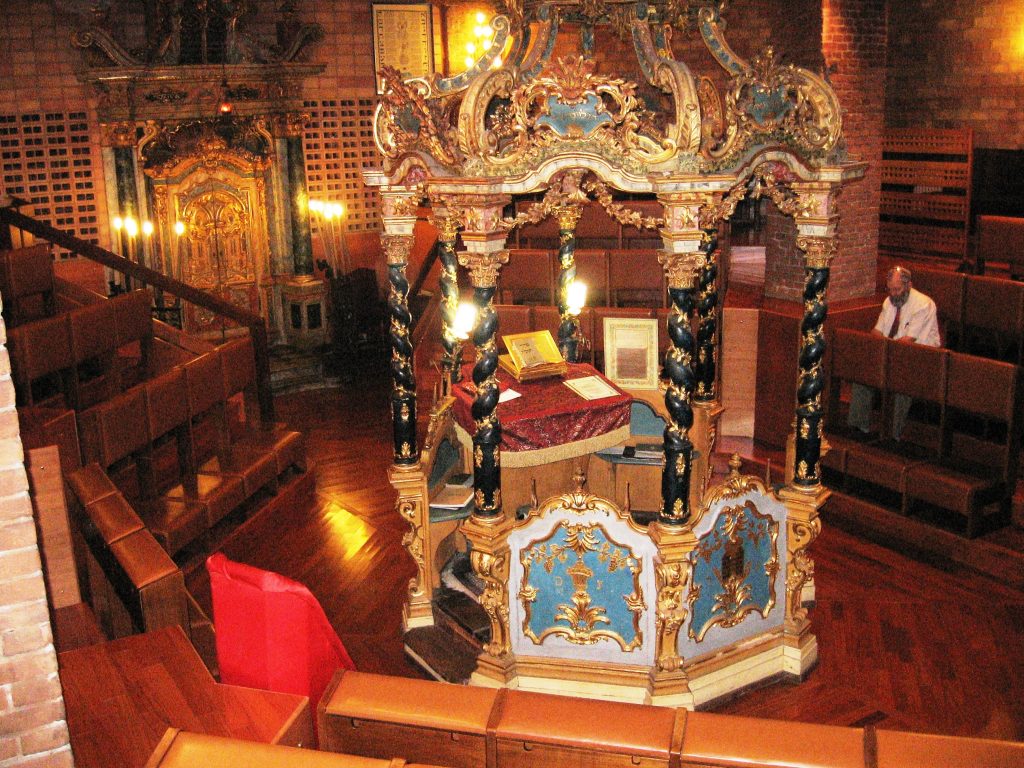
Encouraged by the poet David Levi and the rabbi of Turin Lelio Cantoni, Jews participated in the first War of Independance of Italy. Under Victor Emmanuel II, Jews benefited from a complete emancipation. They gradually integrated the administration, the army and the diplomatic corps. Many Jewish writers and artists participated in the development of the city.
In this emancipation march, it was decided to build a synagogue, before the one known today. A parcel was bought by the Jewish community to build it. Architect Alessandro Antonelli started the construction of the synagogue in 1863. The building was supposed to have the capacity to welcome 1,500 worshippers. But also administrative services, a school and other offices. But the scale of such a project seemed to big for the Jewish community which had to sell the building to the city of Turin in 1878.
The municipality decided to transform the building known today as the Mole Antonelliana into a museum commemorating King Victor Emmanuel II. The construction of the building was finished in 1889 and is 167 meters high. It’s one of the most famous buildings of contemporary Turin.
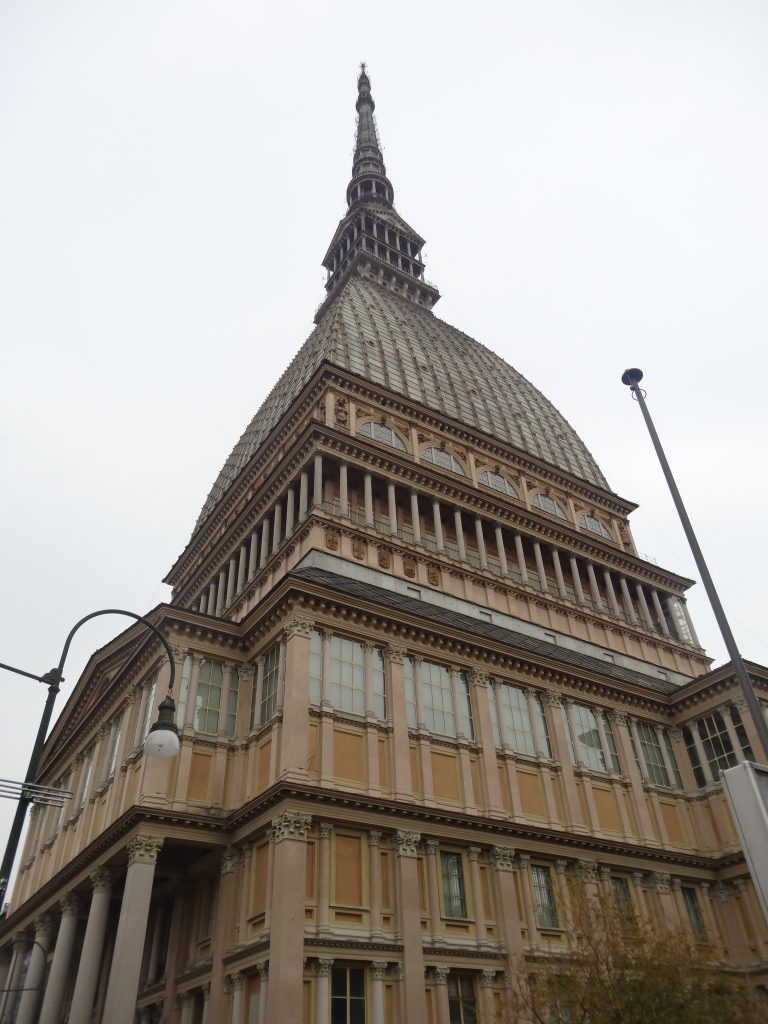
In 1931, 4,040 Jews lived in Turin. The Racial Laws imposed in 1938 had a profound impact on the assimilated Jews of Turin. In 1942, a bomb destroyed the inside of the synagogue. The following year, the Germans started deporting Jews. Among the 246 who were deported to Auschwitz, only 21 came back to Turin, Primo Levi being one of them. Jews were very involved in the local underground fighting units and found help when the civilians seeked hiding places.
The Jewish cemetery changed its location a few times and for different purposes from the 1400s on to the 19th century. In 1867, the Jewish community obtained a section of the Monumental cemetery, where old graves were resettled.
Interview with Baruch Lampronti, representative of the Cultural Heritage Commission of the Jewish Community of Torino and curator of the website visitjewishitaly.it
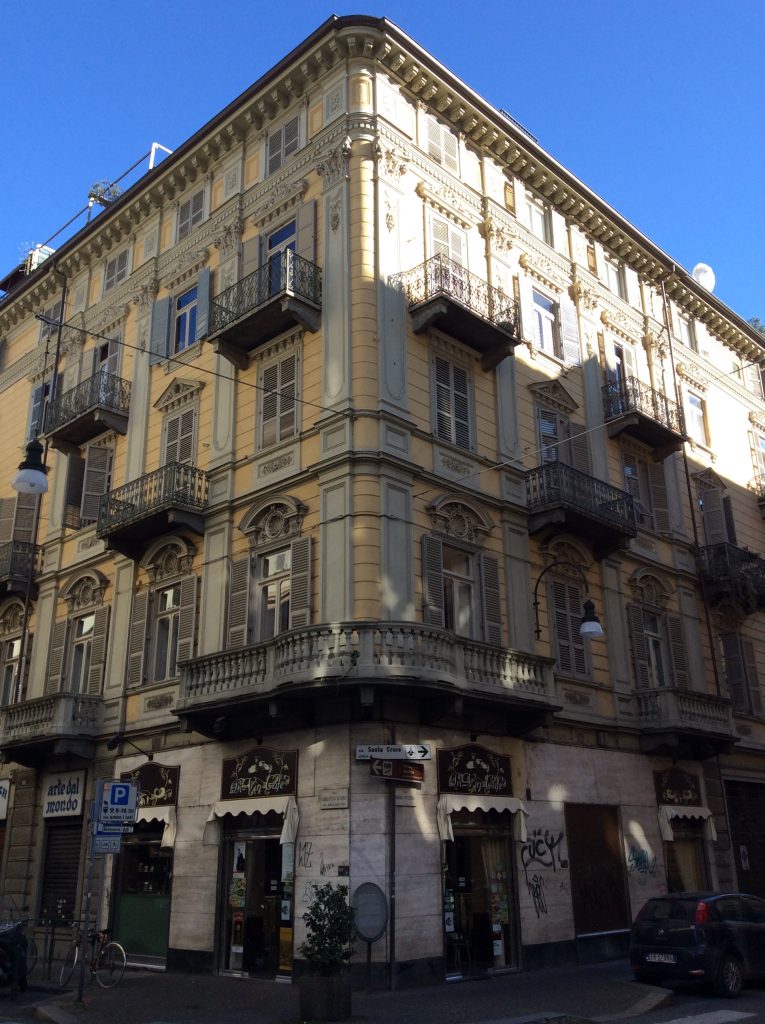
Jguideeurope: How does the Jewish Community maintain its activities during this crisis?
Baruch Lampronti: Any social activity, like the ritual services, meetings, and the rich schedule of cultural activities are sadly suspended. However, as a member of the Community, I appreciate the efforts that the Board of the Community and the Rabbinate are making. On Purim the Meghillah reading has been broadcasted live on Facebook. The offices’ employees are still active working at home. The teachers of the Jewish school started a daily program for the students via zoom.us. The weekly lessons of the rabbis and the Ulpan courses are now carried out via skype (sometimes they even gather more people than usual). The old age home is strictly isolated: it lets in only the staff but they set up a specific skype account to keep the guests in touch with their relatives. The Community is also arranging a small task force of volunteers available to assist people with needs, with daily calls, shopping deliveries (in particular now that Pesach is approaching), and maybe more.
The UCEI – Union of Jewish Communities in Italy is putting as well great effort to make people feel its presence through different ways which include practical services, with a call center of psychologists and social workers, and with a rich schedule of lectures, talks and other shows live broadcasted every day on its Facebook channel.
So, how does the Community maintain its activity? In this moment, I personally think that keeping a sense of family and sympathy despite the distance is one of the most important elements of the Community life to be maintained. Of course, this goes together with the great work that doctors and paramedics are carrying out with dedication and self-sacrifice.
What inspired the unique design of Torino’s synagogue?
The Moorish style was required in the call for the design competition, and it must be traced back to the trend in contemporary synagogue architecture in Europe. This, in turn, was definitely influenced by the taste for the exoticism spreading from the second half of the XIX century, that we can recognize in many other non-Jewish buildings of the eclectic trend. With regard to the design of the synagogues, the choice of inserting oriental references was nevertheless supported by more meaningful arguments. If you find that interesting, I paste below a few lines from a short paper I wrote about the Torino synagogue:
“While the magnitude of the volumes of the Emancipation synagogues and their autonomy from the surrounding buildings can be traced back to a desire of equality and assimilation to the churches’ model, the stylistic language instead expresses a search for individuality from the worship places of the other denominations. Thus, a sort of debate develops around the most appropriate style to express the Jewish identity of the place. “A truly Jewish style – to my knowledge – does not exist” stated in a report the Jewish architect Marco Treves from Vercelli, engaged in the renovation of the synagogue of Pisa (1865) and in the design of the new temples of Vercelli (1878) and Florence (1882). He observed that even the Temple of Jerusalem, according to archaeological evidences, probably did not express a style purely representative of the Jewish people but it followed the main artistic influences of the region. Subsequently, the various conditions, often oppressive, experienced by the Jews in diaspora had precluded the definition of national stylistic traits or of a specific synagogal architecture.
In the composition of the Israelite temples, in Italy as well as in Europe, the designers will often orient themselves towards oriental-style repertoires, that they considered representative of the geographical origin of the Jewish people. References to Assyrian-Babylonian, Egyptian and Byzantine styles emerge; among the most widespread references, theorized by Treves too, we find those from the Moorish style, which hint particularly to the architecture of medieval Spain. The Jews spent there an epoch of great freedom and cultural fervor, and erected their synagogues in line with the local taste of the period (among the best known examples, Santa Maria la Blanca in Toledo, built in 1180 and transformed into a church at the end of the 14th century). In many nineteenth-century’s temples can be found horseshoe arches, onion domes, battlements and turrets of Islamic inspiration, and, among the internal ornament, rich stuccoes with geometric motif and arabesque paintings. The Turin synagogue is part of this trend as well. Designed by Enrico Petiti after the unsuccessful experience that would have given rise to the Mole Antonelliana, it was hit by the bombings of November 1942 and it lost any trace of the original internal decoration.
The taste for exoticism and, more generally, the recomposition of different traditions – being them distant or local, contemporary or ancient – which aim at revealing the identity of the building, make the synagogue of Emancipation an important example of the historicist architecture and the eclecticism.” You can find the entire article in Italian on this page

Are there traces of the former ghetto which can still be seen today?
The ghetto of Torino was made of just one and a half blocks, and they still exist. The entire block, which is the older one (used from 1679-1680) maintains the original volumes, however the interior and the façades have been deeply transformed a few years after the emancipation (1848). The other half block, added sometime after 1724, has been also renovated in the interior, but the facades reveal quite clearly the former identity of the building. This block is at least one floor taller than the surrounding buildings. In order to enlarge the residential surface so as to host more Jewish families, the floor with the greatest height was divided in two lower floors, and as a consequence its Windows are more numerous and very close to one another. The building is now clean and well painted but there have not been relevant structural changes nor ornamental additions.
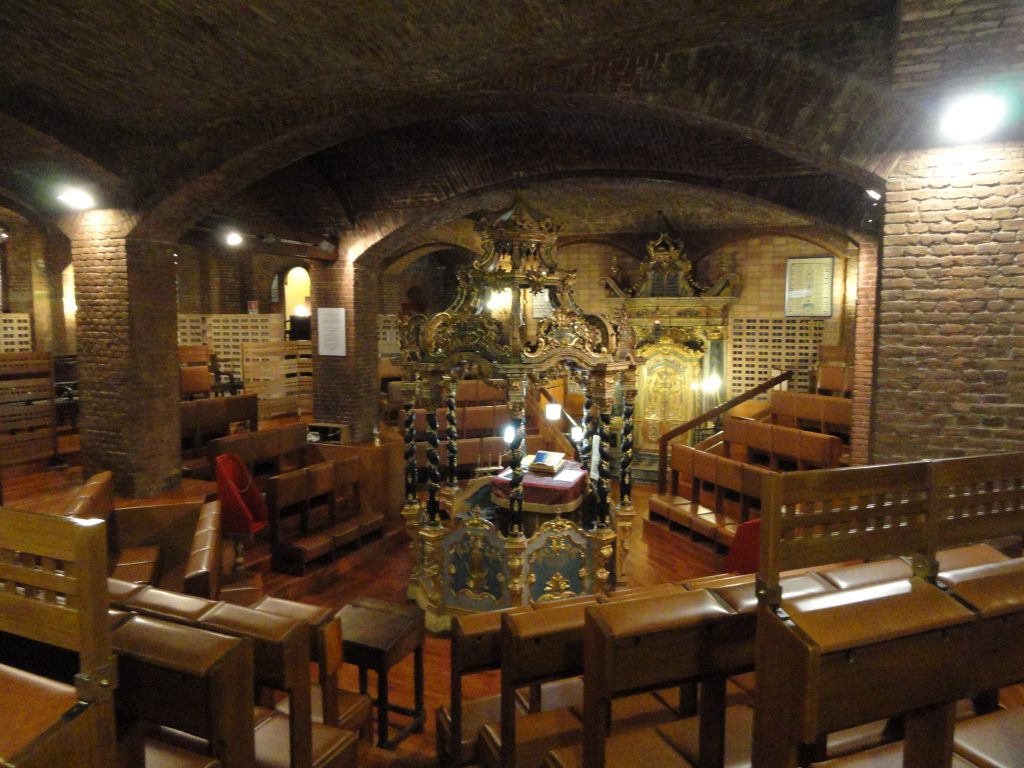
What other places linked to Jewish culture in the city trigger the interest of visits?
In addition to the synagogues and the former ghetto, the most representative sites of the Jewish history of Torino are the Mole Antonelliana and the Jewish sections in the Monumental Cemetery.
Piemonte was also studded with a network of smaller Jewish communities, which shared in many respects a common history. Now these communities are almost entirely extinct (at least in place) but they left a multitude of synagogues, former ghettos and cemeteries. Most of them belong to the Community of Torino that takes care of them and that is the point of reference for visits. More specifically, our jurisdiction includes the synagogues and the cemeteries of Alessandria, Asti, Carmagnola, Cherasco, Cuneo, Mondovi, Saluzzo and in part Ivrea, and the cemeteries of Acqui Terme, Chieri, Fossano and Nizza Monferrato (towns whose synagogues have been dismantled in the past).

Other relevant Jewish sights in the region are:
– the synagogues and the cemeteries of Vercelli and Biella, together with the cemetery of Trino Vercellese, which belong to the Jewish community of Vercelli & Biella
– the synagogue and the cemeteries of Casale Monferrato, with the cemetery of Moncalvo, which belong to the Jewish community of Casale Monferrato.
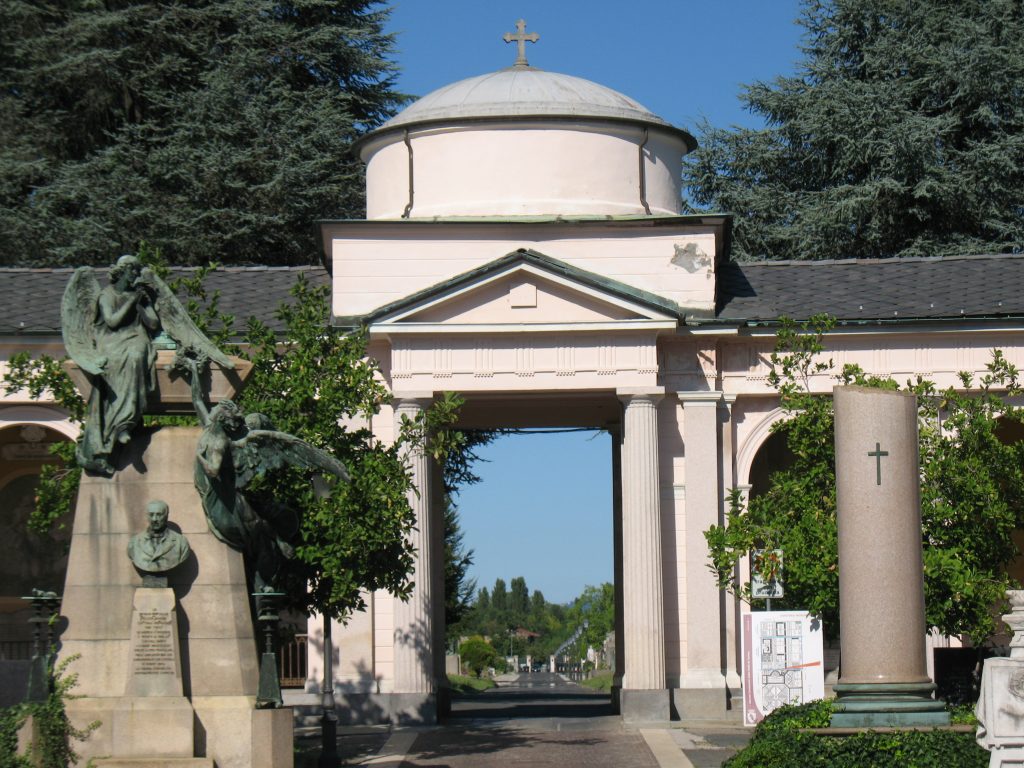
Information and contacts for visits can be obtained on two major sites : the one created by the Jewish Community of Torino: https://torinoebraica.it/turismo/?lang=en and http://www.visitjewishitaly.it/en/ , an informative tool developed by the Foundation for Jewish Cultural Heritage in Italy, which provides descriptions and pictures of many sites of the Jewish Italy, among them the ones above mentioned. We are currently working on some updates so I apologize for any malfunction or missing information.
Modena has the great merit of being known for quite different monuments. Architectural and religious monuments, as in many Italian cities, and gastronomic masterpieces such as its famous vinegar. But there are also contemporary monuments that you can take the time to admire when they’re not speeding past you, the Ferraris and other Lamborghinis and Maseratis built in the region…
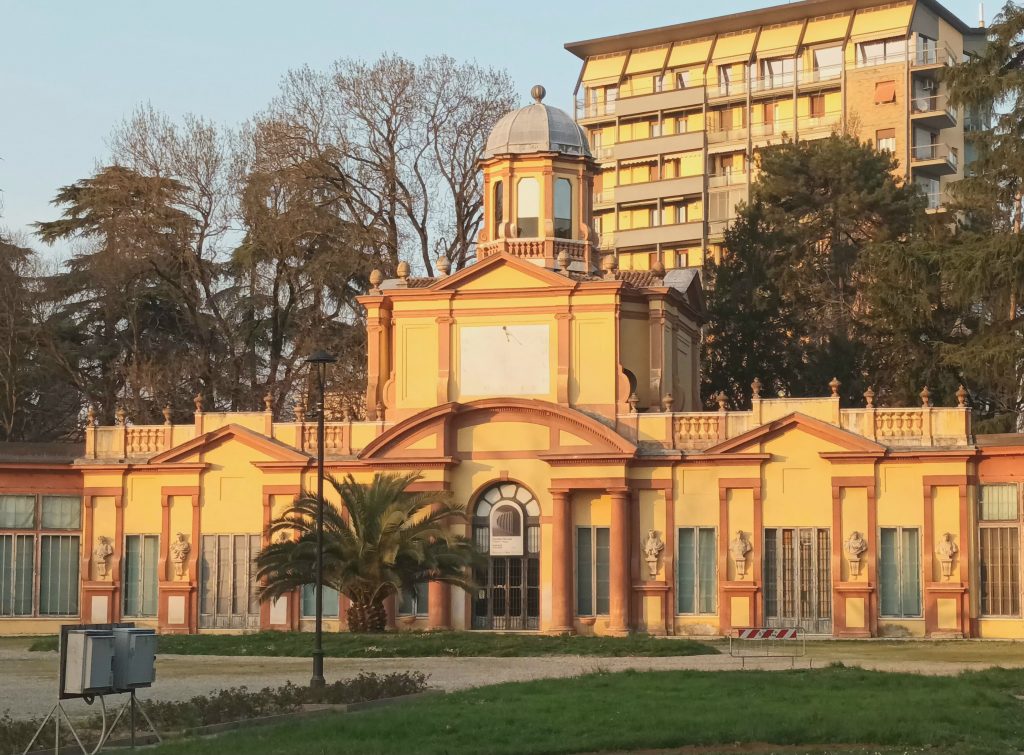
History of the Jews of Modena
The Jewish presence in Modena probably dates back to the 15th century, when they found themselves under the protection of the Dukes of the East. In 1443, they were obliged to wear a distinctive sign. Eight years later, a papal bull authorised them to settle freely.
Following the Spanish Inquisition in 1492, Sephardic Jews migrated to Modena, as well as other Italian cities. A ghetto was established in Modena in 1638. Numerous synagogues and oratories were built at this time. The city was an important centre of Jewish studies, thanks to the influence of numerous scholars.
An ancient document proves the existence of a Jewish cemetery . It was located near the present-day Via della Fosse. It was used until the 17th century. A Jewish plot was set up in the San Cataldo cemetery.
Like in the other Italian territories conquered by Napoleon, the Modena ghetto was abolished in 1796, but reinstated in 1815. It was not until the territories were annexed to the Kingdom of Italy that the Jews became full-fledged Italian citizens in 1860, enjoying the same rights as their compatriots.

As a symbol of this integration, a magnificent synagogue was built in 1869. At the same time, part of the ghetto was razed as part of an urban renewal program. Although the community numbered almost a thousand in the mid-19th century, this figure gradually declined, due in particular to the many departures to Milan.
Just under 500 Jews lived in Modena on the eve of the Second World War. Of these, 70 were deported during the Holocaust. Many Jews took part in the Resistance. Angelo Donati, who fought in the First World War and later became a diplomat, organised the escape of thousands of Jews, while the president of the community, Gino Friedman, managed the protection of many young refugees. Although relatively small, the Jewish community remains very active culturally.
Visit Modena
Getting off at Modena station, you take the Sgarzeria, where the old tobacco factory is located. Continue along Via Francesco Rismondo, with its yellow, orange, clay, pink and red buildings.
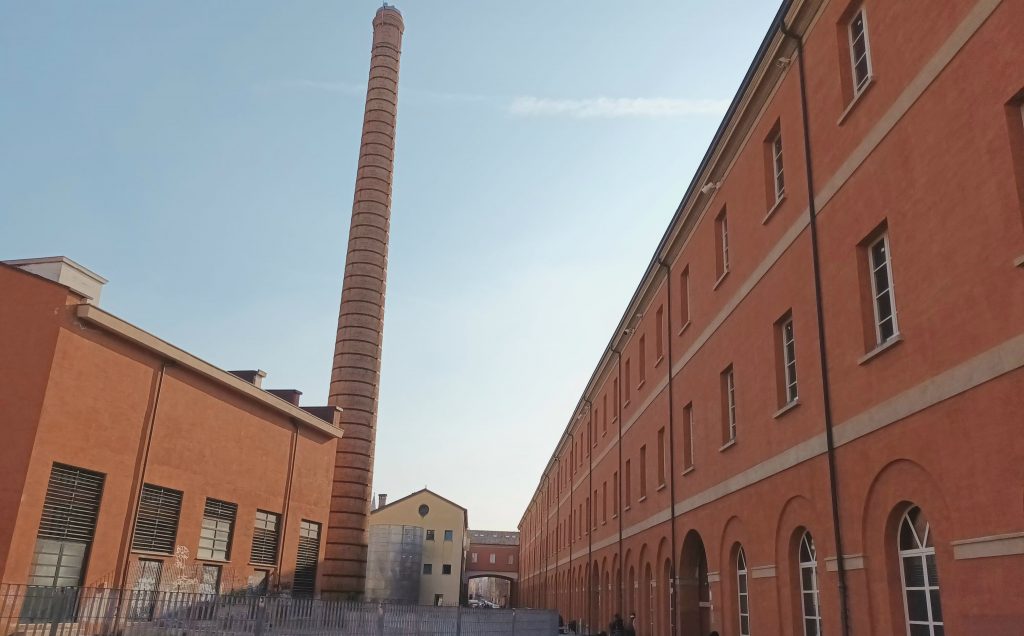
Then Via Emilia Centro and you turn right onto Corso Duomo, a pretty square with many cable cars intertwined like irremovable metal clouds, populated by terraces, arches, kiosks and passers-by twirling around. And there’s a surprising little sculpture of a football player in homage to Pannini, the famous inventor of sticker books.
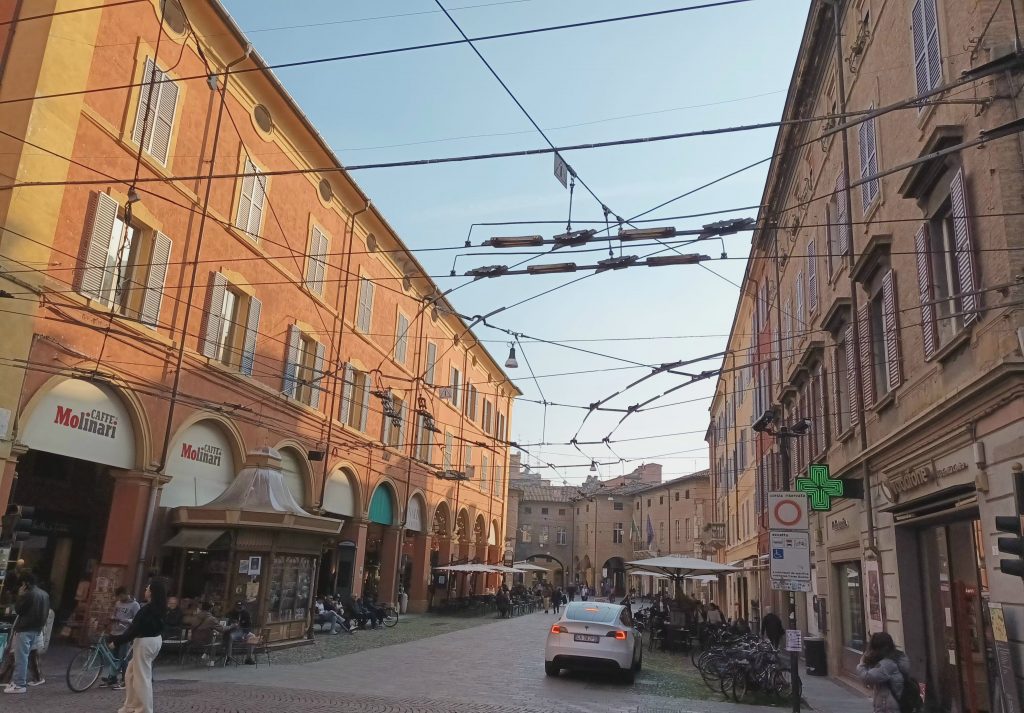
A little further on, past the square with its merry-go-round, you finally arrive at the Palazzo dei Musei, which houses the state archives, a library and the city’s museums, a complex rather like the old building housing this type of venue in Parma.

Take the narrow streets towards the cathedral and you’ll come across the Sala Truffaut, a film club named in tribute to the French director Via degli Adelardi. A pretty square then awaits you at the corner of Via dei Servi and Francesco Selmi.
A hundred yards further up, in Via Luigi Albinelli, you’ll find the town’s historic covered market with its stalls and long tables. Please note that opening times are limited out of season.
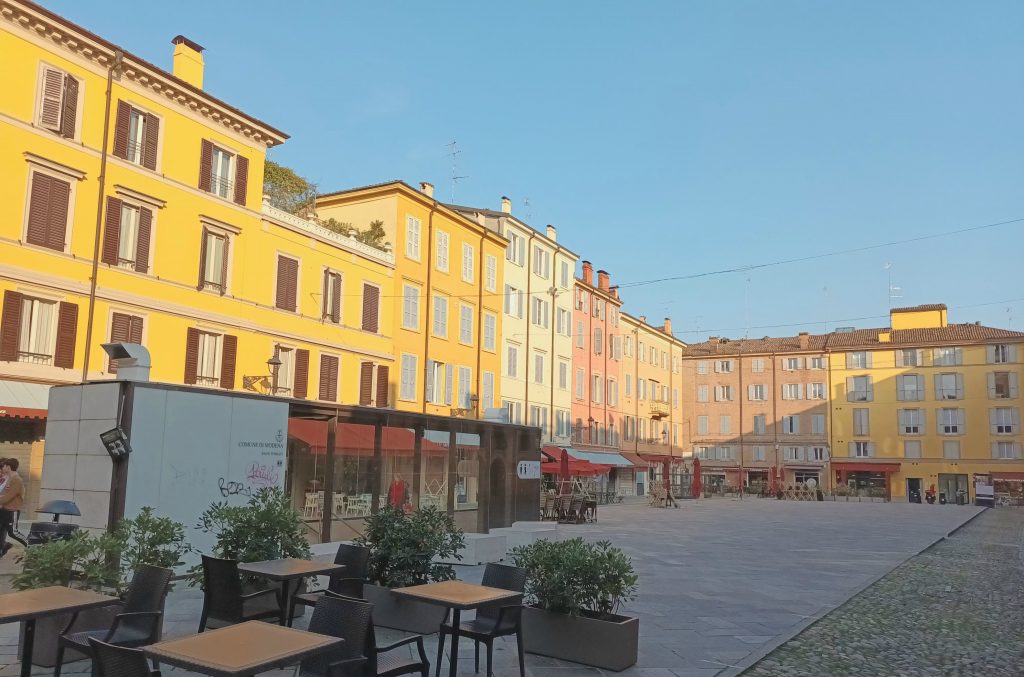
Walk another hundred yards, past the pretty Piazza XX Settembre, to arrive in Piazza Grande. The city centre is home to the cathedral, which faces the Palazzo Comunale. The juxtaposition of temporal and spiritual powers is common in this region of Emilia Romagna. Modena’s cathedral is very different from its neighbour in Parma, which is fairly sober, with its red bricks and murals in the background.
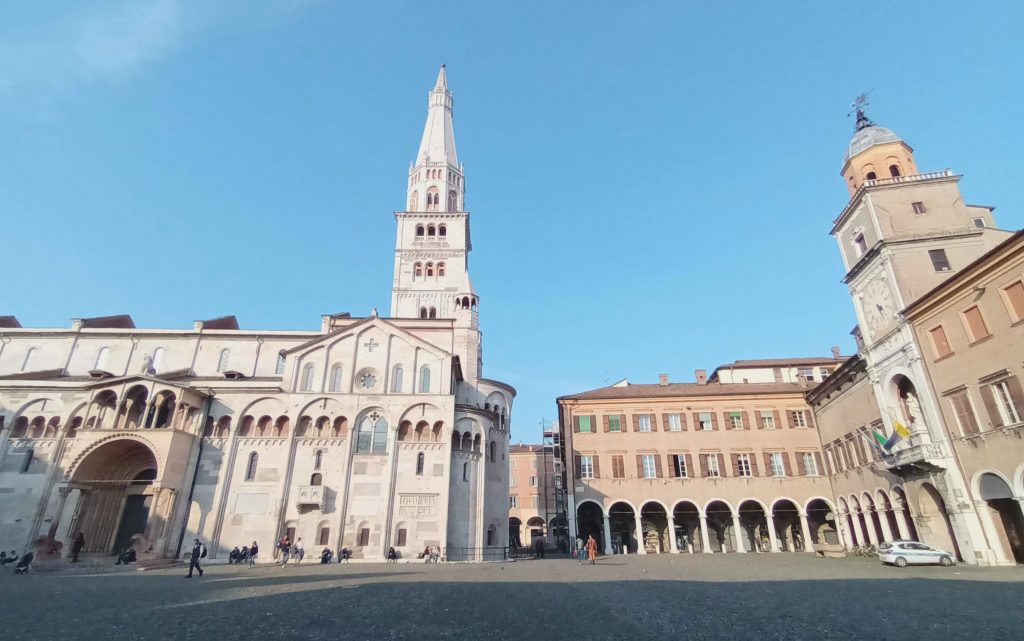
A little higher up, you come to Piazza Mazzini, named in honour of Giuseppe Mazzini, the Italian revolutionary and patriot. A statue pays tribute to him.

Also on display at the entrance to the square is a map of the areas of Modena that were bombed during the Second World War.

At the end of the square is a beautiful orientalist synagogue, built between 1869 and 1873 to a design by Ludovico Maglietta. It has a double façade, one overlooking Piazza Mazzini and the other Via Coltellini. Inside, the circular prayer room is surrounded by a Corinthian colonnade that supports the women’s gallery.
The façade of the synagogue bears the Hebrew words “Baroukh haba beshem Hasehm” and “Ptekhou li Shaaré tsedek”, meaning “Welcome in the name of God” and “May the gates of justice be open to me” respectively. A message of openness and the quest for tikun olam, the repair of the world.
The street to the right of the synagogue is via Biasa, on and around which the ghetto was located.
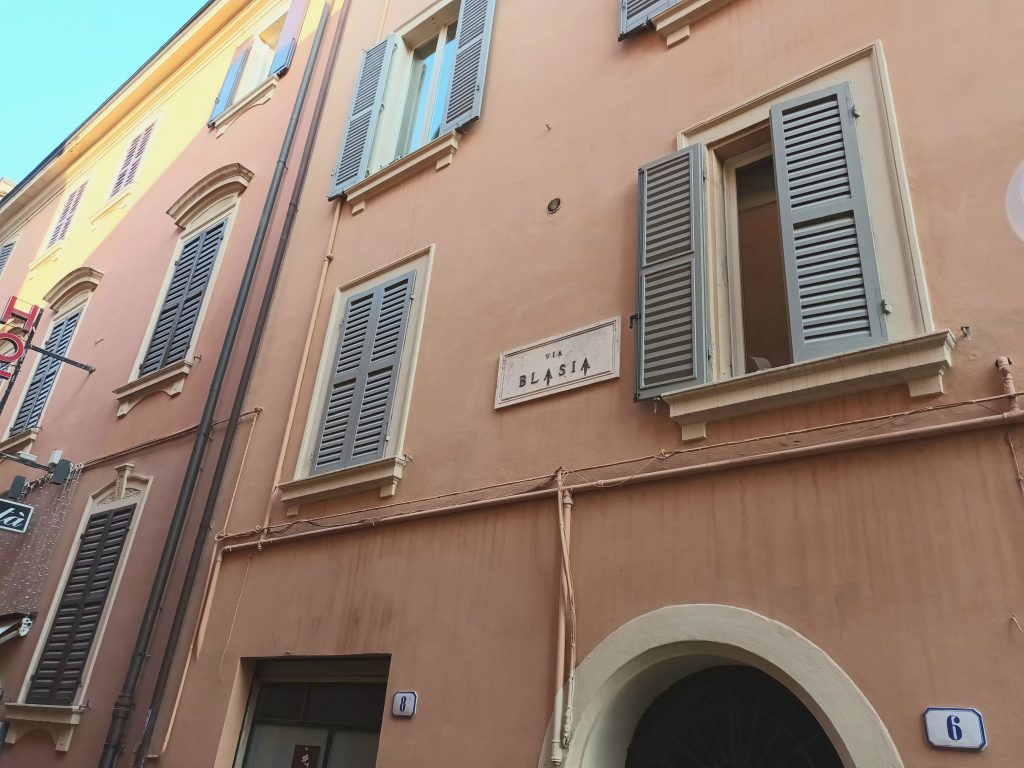
You then come to the impressive Palazzo Ducale building, where Italian army officers are trained, which overlooks Piazza Roma.
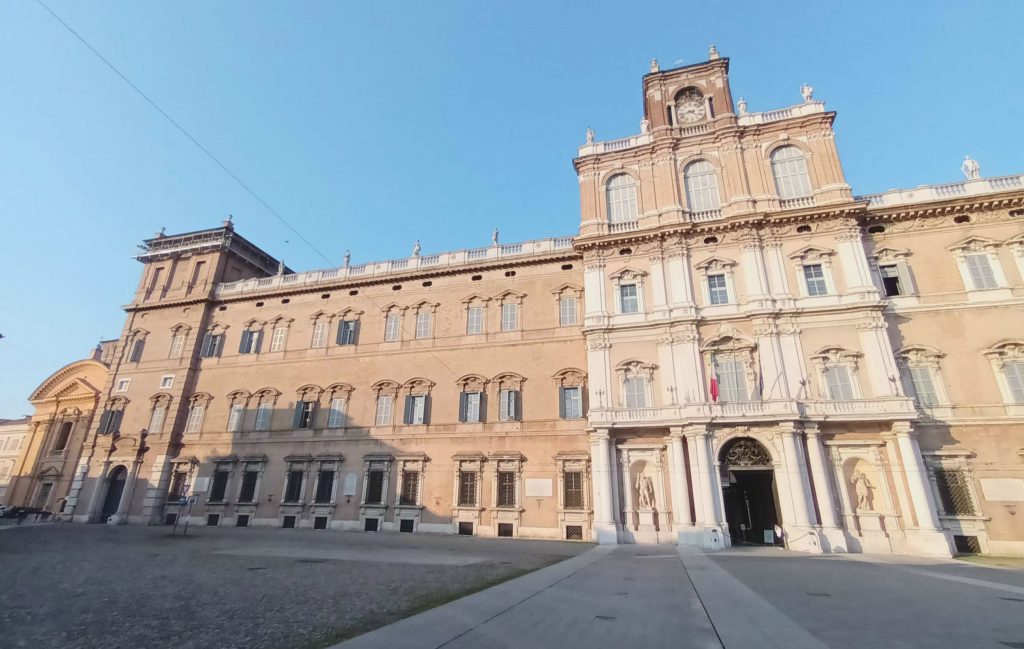
Turning left into Piazza San Domenico, you can see the statue of a woman on the Monument to Liberty.

To the right of the square, a statue of the famous opera singer Luciano Pavarotti stands on Via Carlo Goldoni, inviting you to enter the municipal theatre that bears his name and is located behind him. Next door is the Museo Pannini, less generous and surprising in its presentation than the stickers we used to find in his parcels as children.

In the same Palazzo Santa Margherita complex, there is a library frequented by students who sit in the courtyard, where since 2023 there has been an exhibition showing numerous photos of the streets of Modena in 1973 and the same places photographed in 2023. The perceptible changes include the replacement of bicycles by cars, the addition of security gates and, above all, the many renovated buildings. In the city that is home to the Ferrari museum, this is nothing more than a tribute.

A little further up, the Italian Officers’ Riding School provides a transition before you reach the pretty little Parco Ducalo Estenze, which leads you to the station. And if you have the time, and have completed your visit at 200 miles an hour, you deserve a visit to the Enzo Ferrari Museum, located behind the park to the right of the station.
Ferrara, a sublime city with a medieval centre listed as a World Heritage Site, does not appear to be a vast, museum-like enclosure encircled by a city. On the contrary, its historic centre is delicately interlaced with long, beautiful streets leading to monuments and a gentle way of life that is far from fleeting and to which its inhabitants cling, as did, despite everything, the characters in Vittorio de Sica’s film The Garden of the Finzi Contini (1970)…

History of the Jews of Ferrara
The Jewish presence in Ferrara dates back to at least the 13th century, when the city welcomed Jews from other Italian and European cities. This presence was formalised in 1287 by an ordinance. As long as it remained the capital of the Dukes of Este until 1598, Ferrara was one of the great centres of Italian and European Judaism, with over 2,000 Jews for 30,000 inhabitants during its golden age, between the 15th and 16th centuries. This was also a period in history when many artists and writers also found refuge here.

A synagogue was built in 1481. A synod of the rabbis of Italy was held in Ferrara in 1534. Ashkenazim from Germany and Sephardim welcomed after their expulsion from Spain lived side by side under the protection of the local authorities.

The corso della Giovecca, the main street linking medieval and Renaissance Ferrara, bears witness to this happy past. Prestigious rabbis and doctors lived in the city, which, like Bologna, was a centre of Jewish printing. Abraham Usque published the famous Ferrara Bible here in 1555.
Things came to a head in 1597 when Duke Alfonso d’Este died without a male heir. The Papacy took control of the city, which had been abandoned by the d’Este court, who, like many Jews, left for Modena. The ghetto was established in 1627.
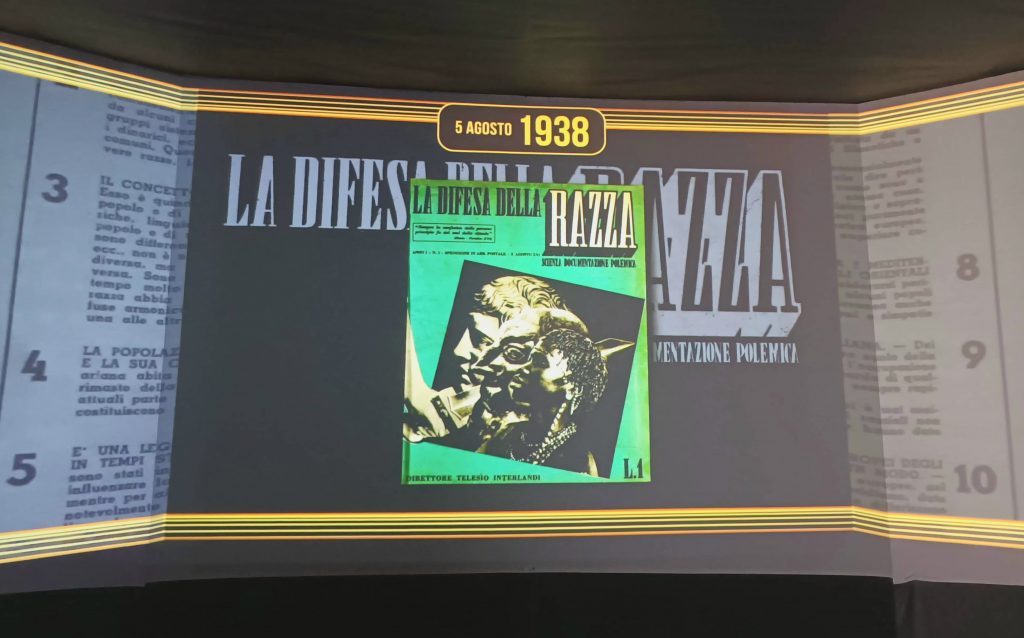
Despite the difficulties, and even after emancipation (1859), the Jews remained fairly numerous in the city, until the racial laws imposed by Mussolini in 1938. This tragedy was admirably recounted by the writer Giorgio Bassani, who devoted most of his books to Jewish Ferrara. Nearly 200 Jews were arrested and deported to the camps from 1943 onwards. The fascists destroyed a synagogue and other community property. Following the Liberation, a small Jewish community was reborn and, since 2017, has been home to the National Museum of Italian Judaism and the Shoah (MEIS) .
Visiting Ferrara
The MEIS can be reached from the station by taking Via Pavia. On the way, you’ll see the city’s football stadium on the left and the Aqueduct on the right, where there is a statue of a man pouring water over children, a city caring for its new generations. This is also the site of the family assistance centre.
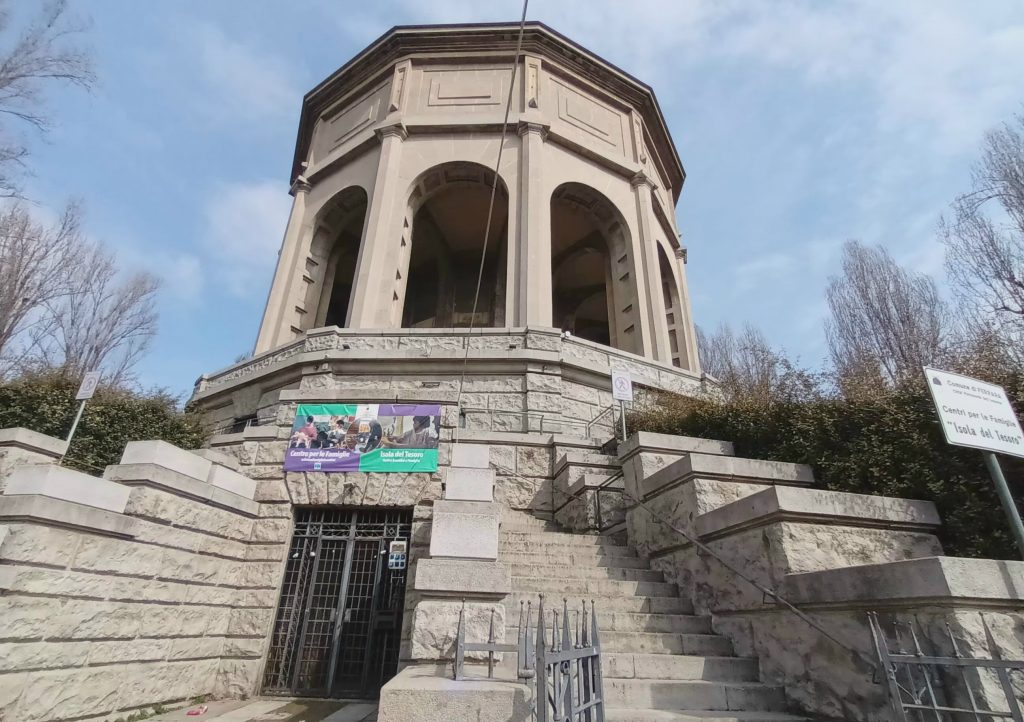
The permanent exhibition is housed in the MEIS interior building, separated by a park, and the temporary exhibition in the building located at the front of the complex. The permanent exhibition is devoted to Italian Judaism from Antiquity to the Renaissance.
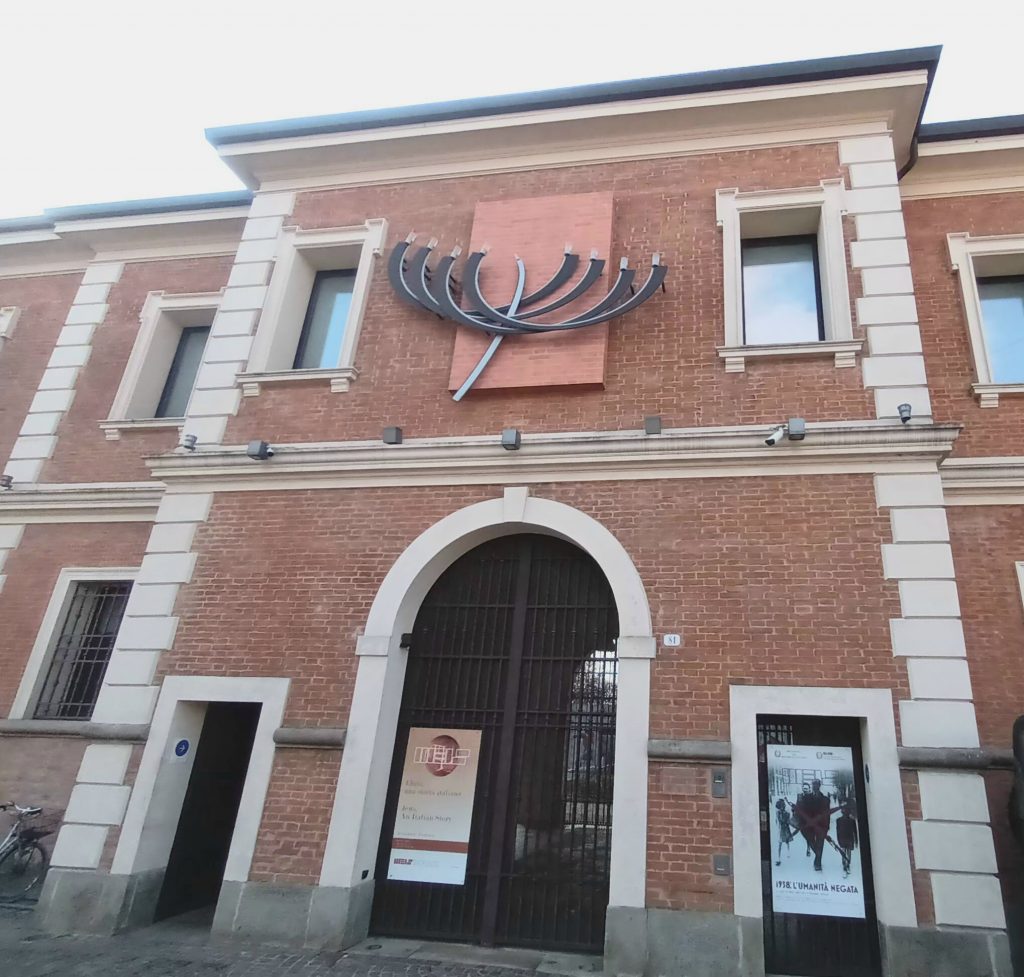
Antiques, panels, reproductions and videos by specialists harmoniously accompany this itinerary. It’s a collection that’s much appreciated by young people in particular. When we revisited the museum in 2024, we witnessed a class of schoolchildren from Ferrara enthusiastically following this itinerary.
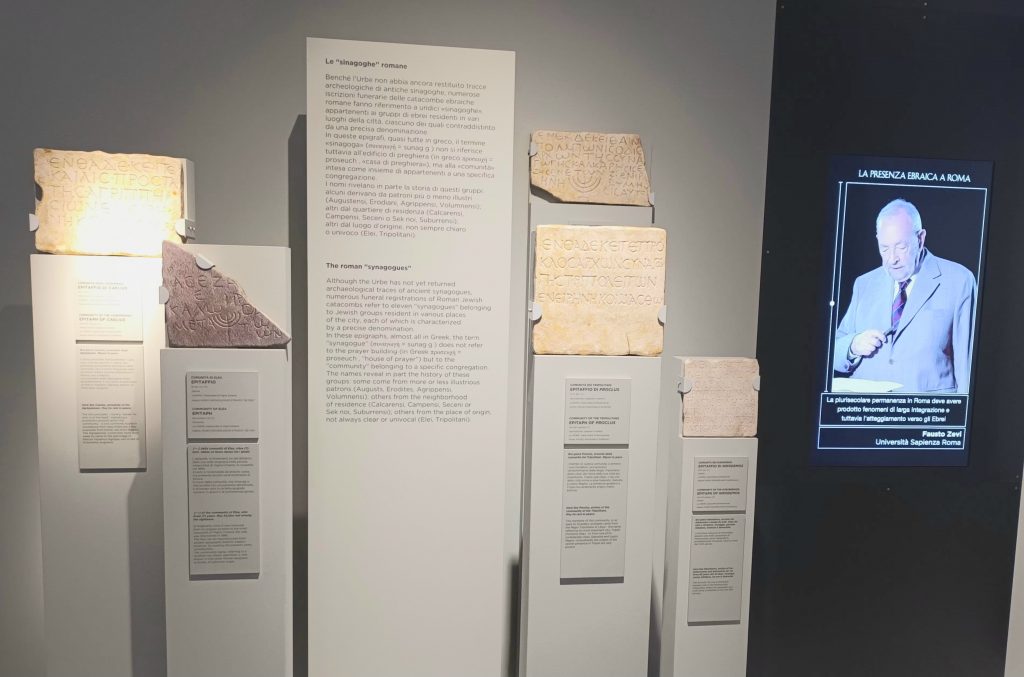
Like the Jewish Museum in Bologna, the tour begins with a general presentation of Judaism. First, we discover the oldest traces, then we come to the Revolt of 70 in Israel against the Romans, with the reproduction of the famous engraving of the Arch of Titus. You will also discover the ancient synagogue of Ostia.

The signs indicate that the Jews have been Roman citizens since 212, thanks to the Edict of Caracalla, like all the other minorities. Seneca and other intellectuals gave them a somewhat lukewarm reception, not understanding the “usefulness” of Jewish customs, particularly the day of rest, which they considered to be idle.
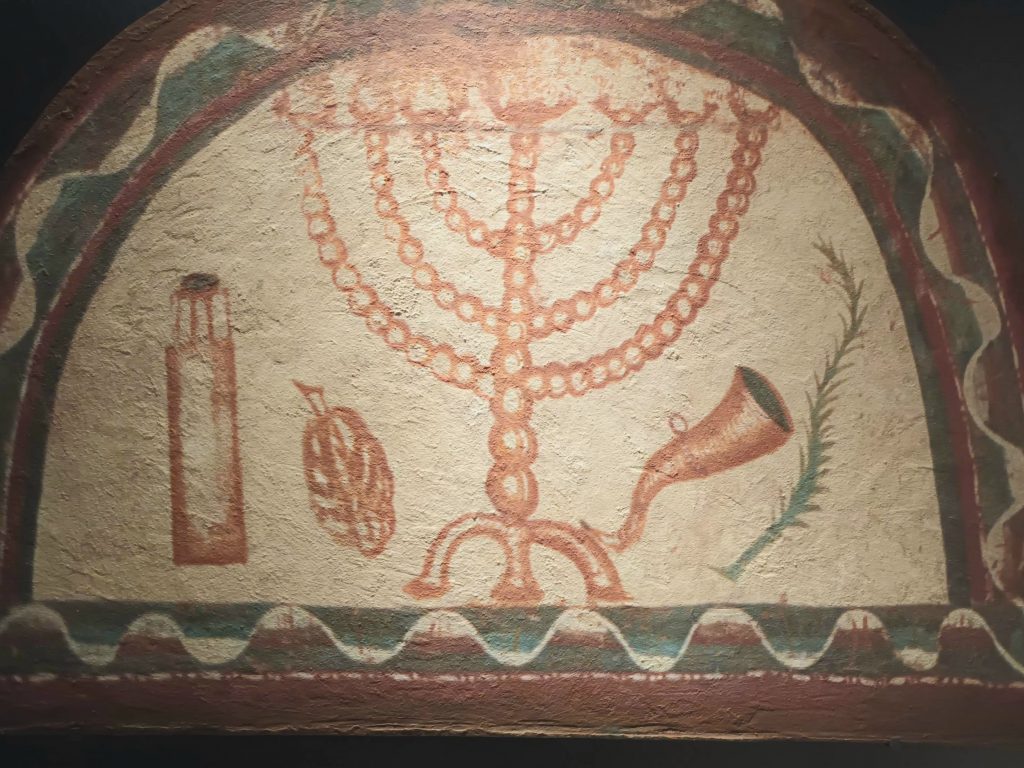
Next, we see the ancient catacombs with a drawing of a menorah dating from the 2nd or 3rd century and found by accident in 1859 in via Antiqua. Then, a mosaic from southern Italy. From 313 onwards, the situation worsened for the Jews, particularly when Constantine promulgated very harsh laws banning Jewish-non-Jewish couples. Nevertheless, the practice of Judaism remained free.
A film is then projected onto the walls of a room, recounting the famous 12th century voyage of Benjamin of Tudela aiming to discover the variety of European Judaism. With images on three walls simultaneously.

Following the decline of Rome and the Inquisition, we discover the migration of Italian Jews to other regions, particularly to the north. From the 14th to the 16th century, the attitude of political and religious leaders varied. During this period, ghettos were established, starting with Venice in 1516. The museum highlights the exceptions of Pisa and Livorno, which never built ghettos to confine Jews. Duke Ferdinand de Medici invited the Jews to settle and work there freely. They were able to enjoy freedom of worship, protected from the Inquisition.
The permanent exhibition therefore stops at this period. Museum officials told us that the MEIS was preparing the continuation of the permanent exhibition, from the Renaissance to the present day.
Leaving the museum, turn right into Via Piangipane, then left into Via Boccacanale di Santo Stefano and second right into the beautiful Via delle Volte where you’ll admire, as its name suggests, a multitude of vaulted elevated passages.

At the end of Via delle Volte, turn left onto Via delle Scienze, where you will find the Biblioteca Ariostea . This library holds many manuscripts, books and engravings on Jewish Ferrara.

Continuing north along this street, take the first turning on the left into Via Giuseppe Mazzini. At number 95, you’ll see Ferrara’s old synagogue . The magnificent scola tedesca is currently only used for major ceremonies. The prayer room is lit by five large windows overlooking the courtyard. The opposite wall is decorated with beautiful medallions and stucco depicting allegorical scenes from Leviticus.
At the top of another staircase and a long gallery is the elegant room of the scola italiana, which is no longer used for worship. On the far wall are three precious aronot in lacquered wood with elaborate carvings. The one in the centre, all gold and ivory, belonged to the scola italiana, while the other two, blue-green, each with two magnificent twisted columns, come from the old scola spagnola in via Vittoria. Furniture from the rabbinical academy has been placed in the vestibule.
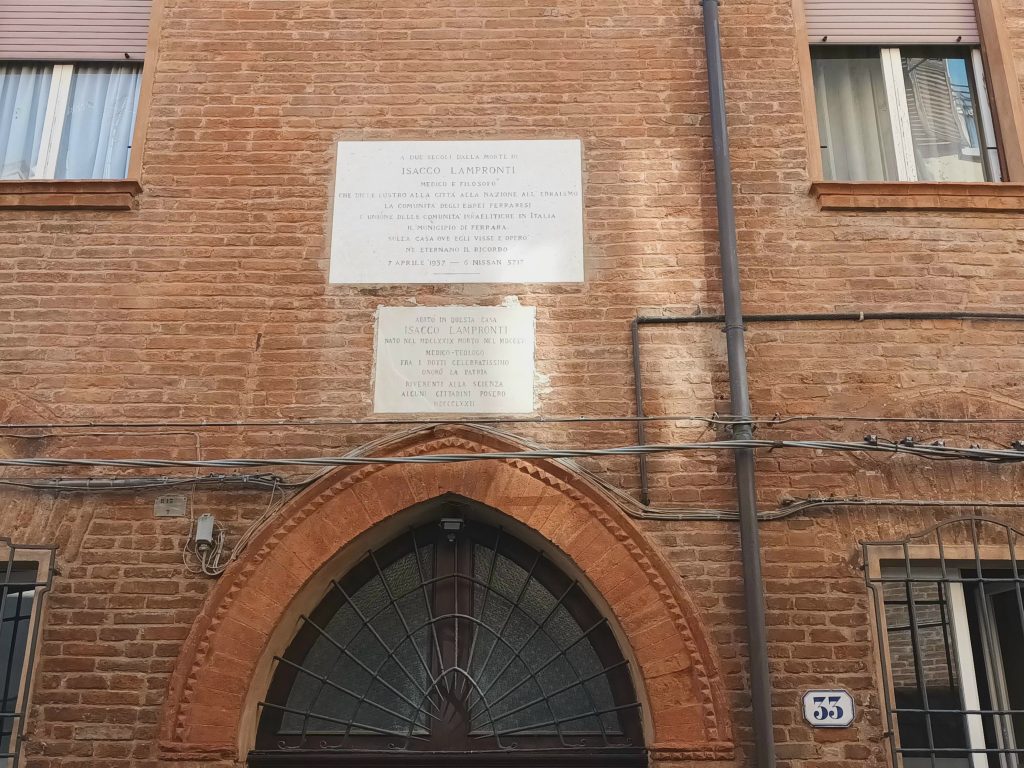
A little further along Via Mazzini, turn left into Via Vignatagliata, one of the main streets of the former Jewish ghetto . At number 33 is the house of Isacco Lampronti, a doctor, philosopher and important representative of the community.
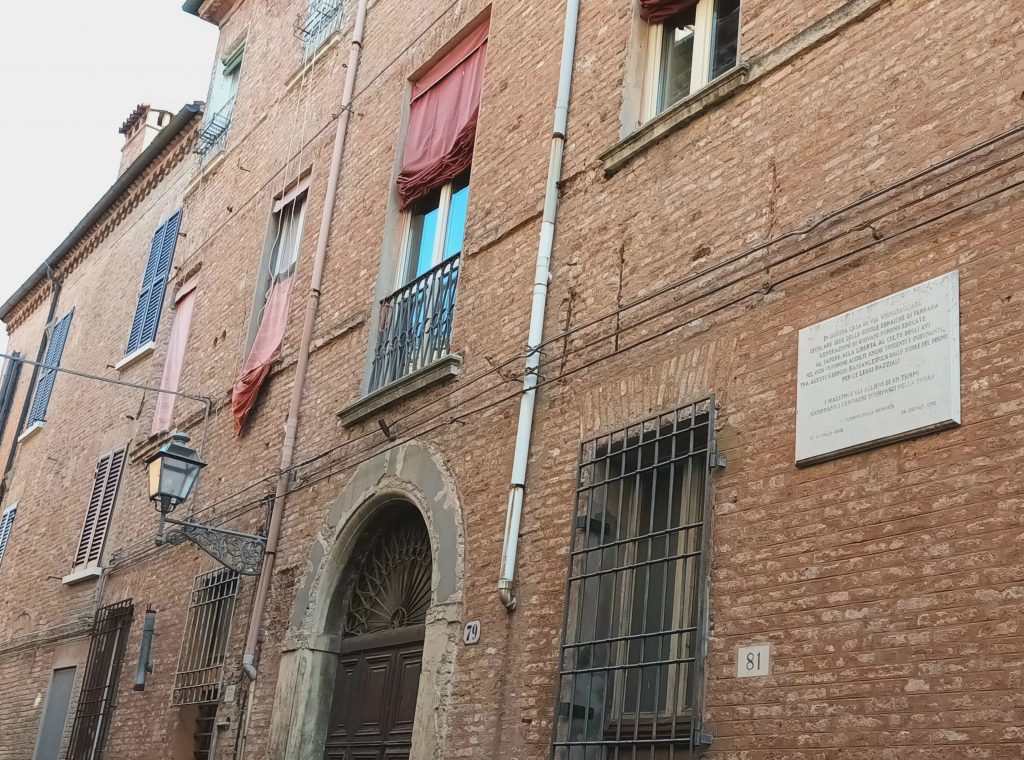
The Jewish school was located at number 81 on the same street, with its many pretty orange houses.
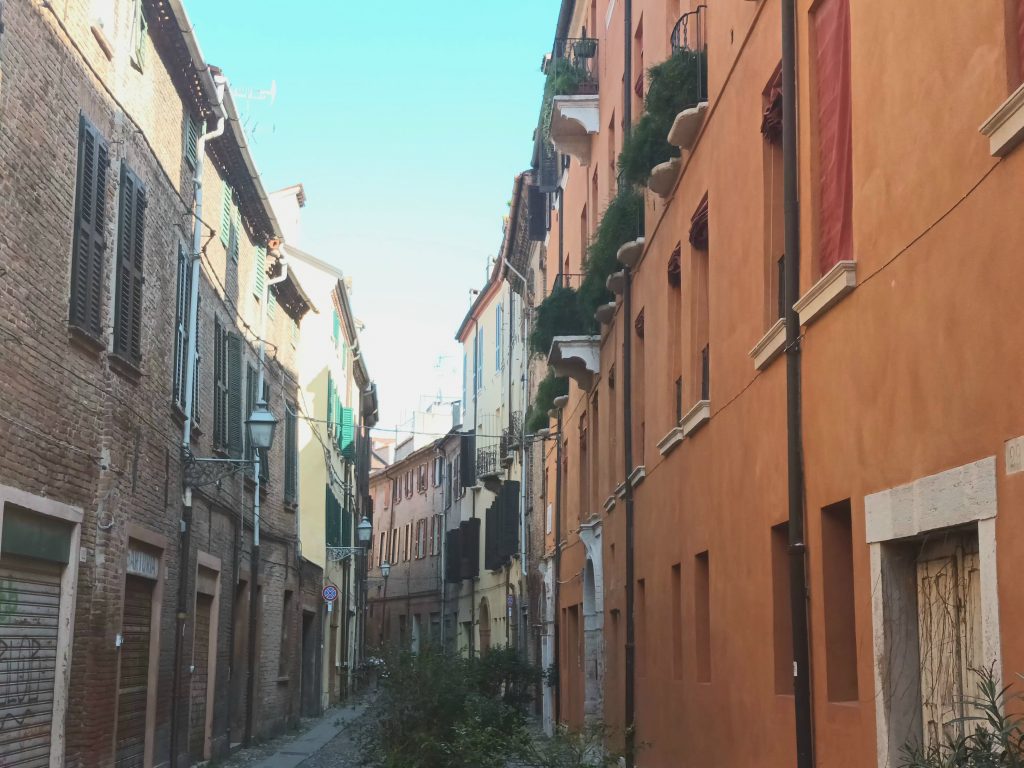
A small square bears the name of Lampronti, between Via Vittaglia and Via della Vittoria, one of the other main streets in the Ferrara ghetto.
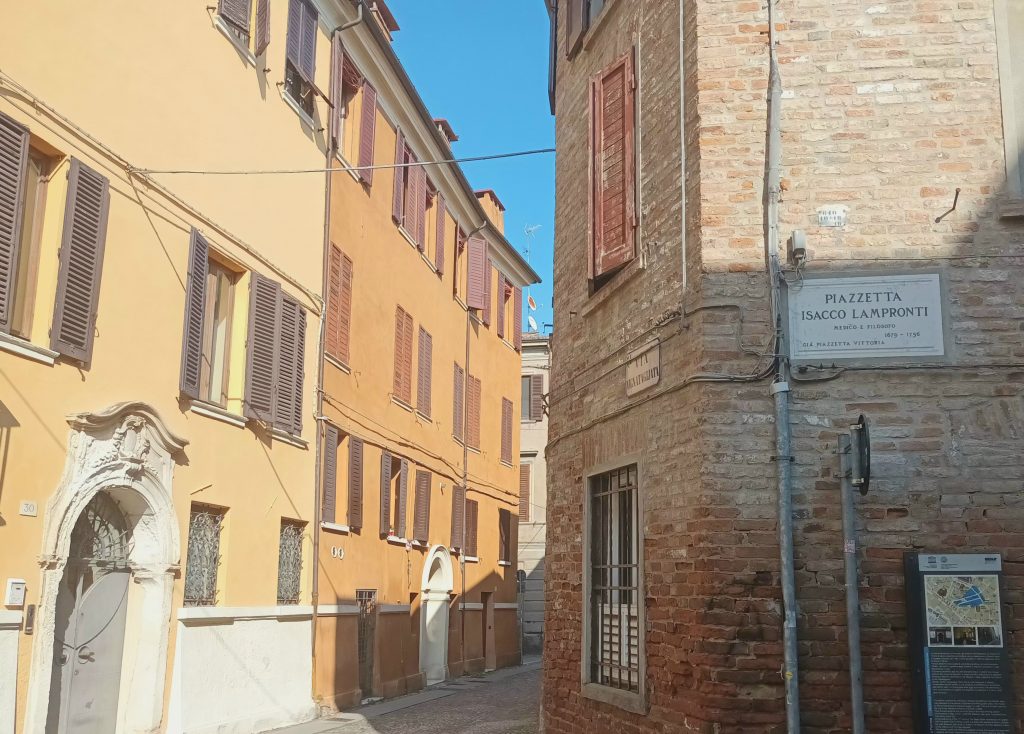
Leaving the ghetto, follow Via Ragno to Corso Porta Reno, which leads to the lovely Piazza Trento-Trieste, dominated by Ferrara Cathedral and the Torre della Vittoria. Between them lies the handsome Palazzo Municipale, the whole forming a spiritual and temporal city centre ensemble, as in many Italian cities in the region.
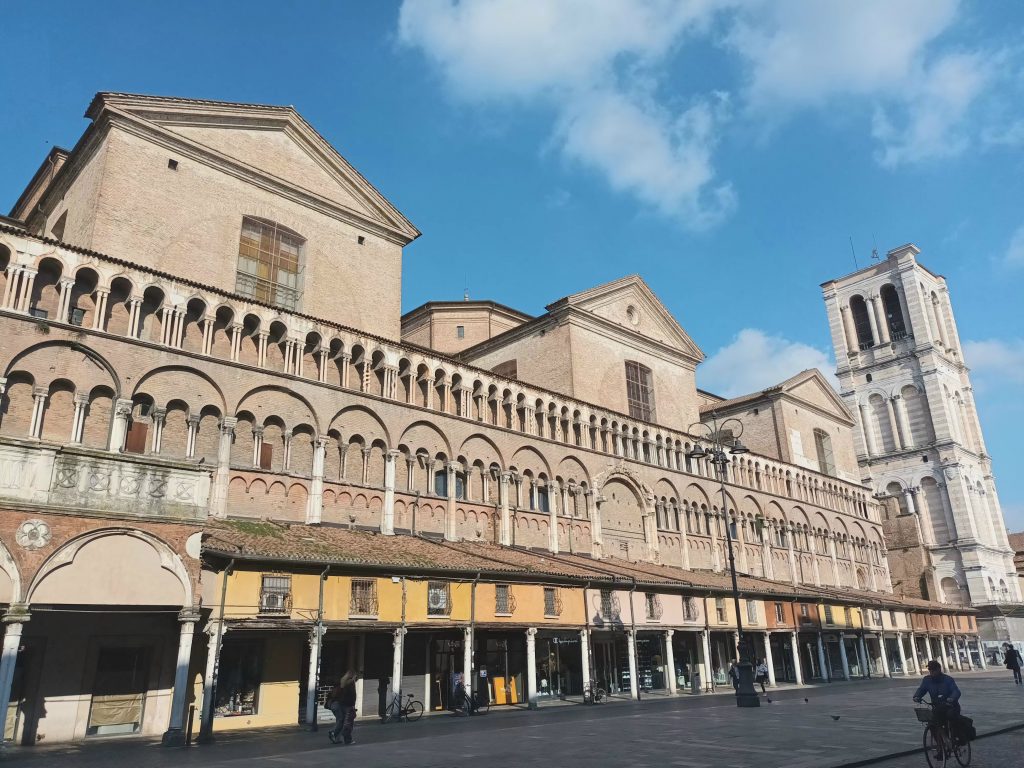
Numerous tributes in the form of plaques are placed on the municipal buildings and palaces surrounding the cathedral, in memory of people from different eras who fought for freedom.

A little further up Corso Porta Reno, you come to the castle surrounded by pools of water, making you wonder which one is protecting the other.
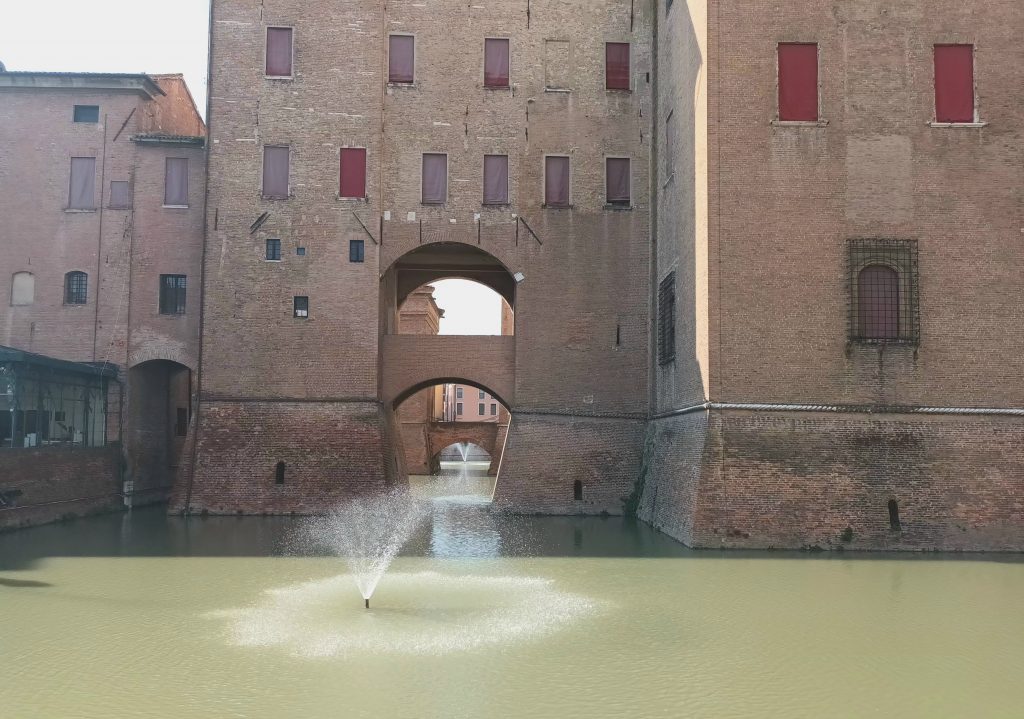
If you go around the castle to the left, you will come to Corso Ercole d’Este. This leads to the Museum of the Resistance, the location of the Finzi-Contini film set and the famous Palazzo dei Diamanti, so named because of its unique architecture. It hosts some very fine exhibitions.
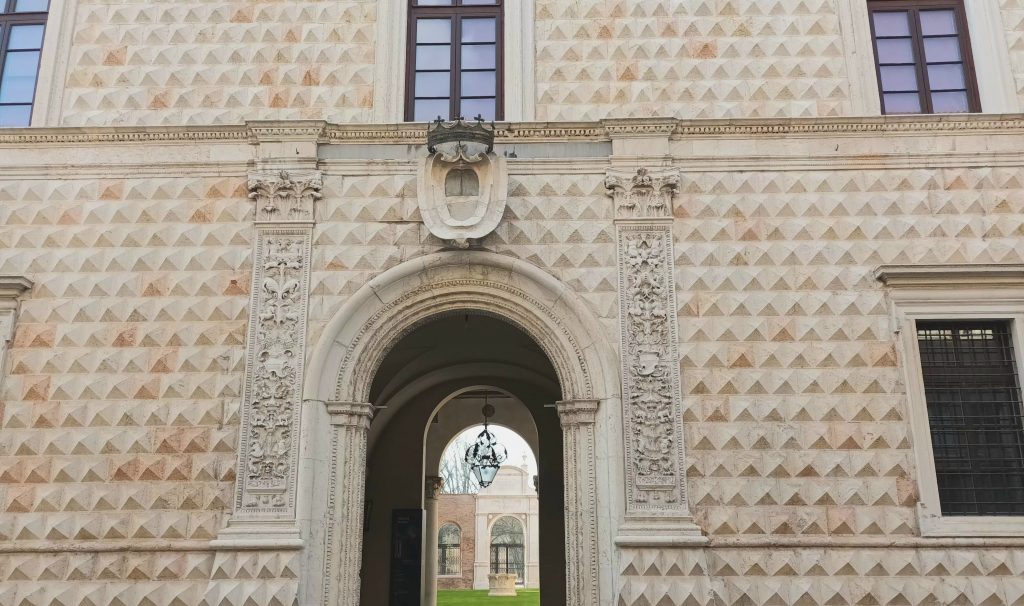
A little further on, turn left onto Via Arianuova towards the small Levantine Jewish cemetery , a trace of Ferrara’s former Sephardic presence. It is located on the small Via Gianfranco Rossi between a few houses and a car park, next to a school where a plaque in honour of a teacher deported to Buchenwald can be seen on the outside wall. The cemetery is currently closed to the public.
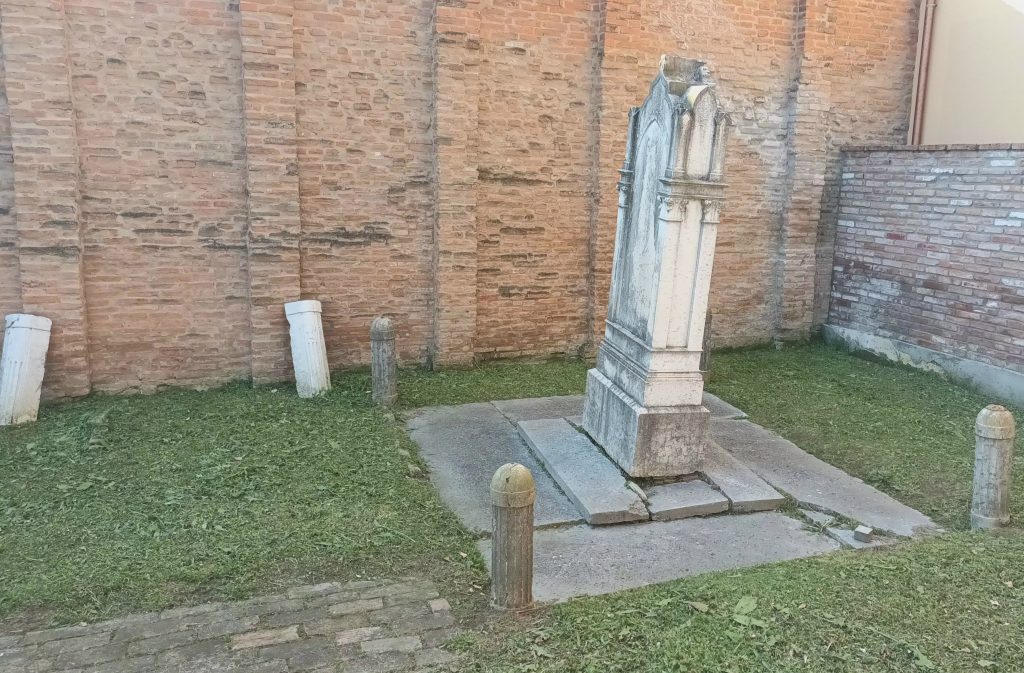
To get to the main Jewish cemetery , you can walk through the pretty Massari Park, which may remind you of the great actress Lea Massari, although this is a much older tribute. While there is a café called Central Park, it is unlikely that this park will be twinned with the one in Manhattan.
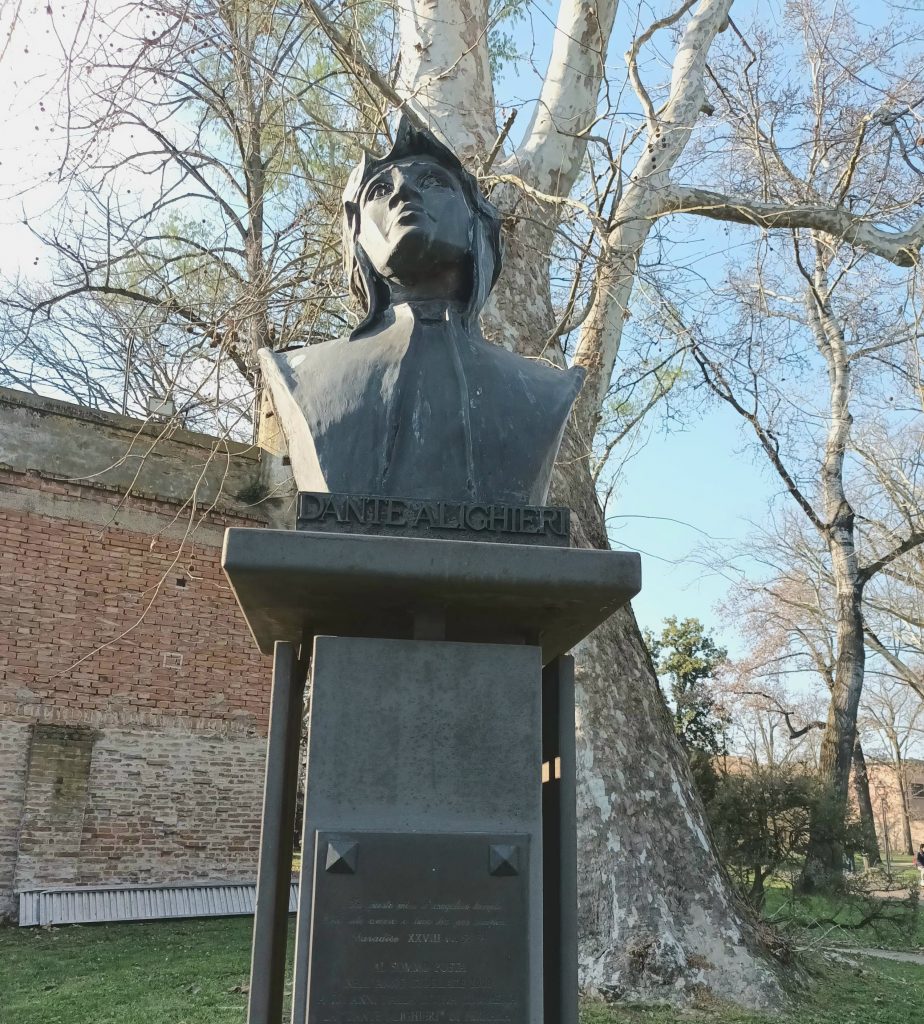
But it’s a pleasant place to stroll, to salute the statues of Verdi and Dante and to admire the 2015 fresco dedicated to the 70th anniversary of the Liberation of Ferrara.
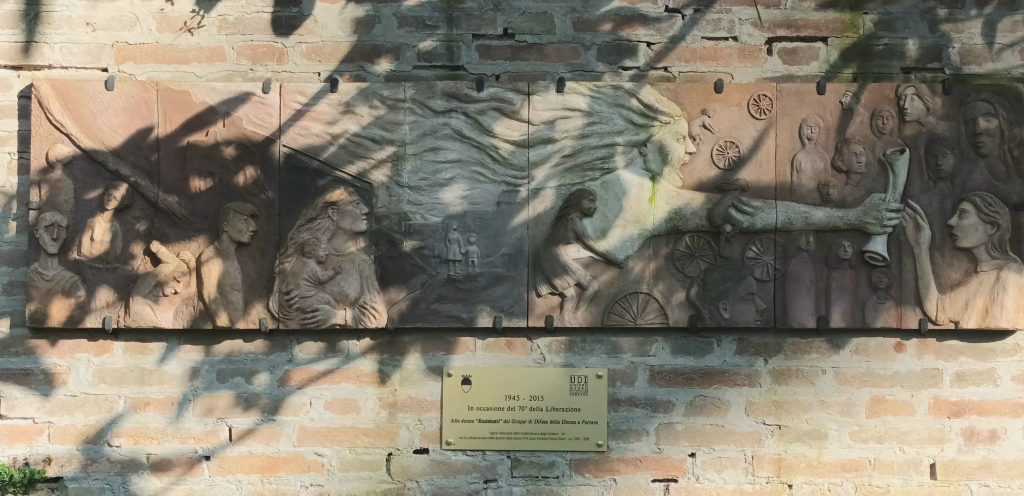
Leaving the park, take Corso Porta Mare. Then, in Via delle Vigne, you come to the Cimetero Ebraico, in use since 1620, in front of its large entrance gate with Hebrew inscriptions. The cemetery is mainly open to the public in the morning.
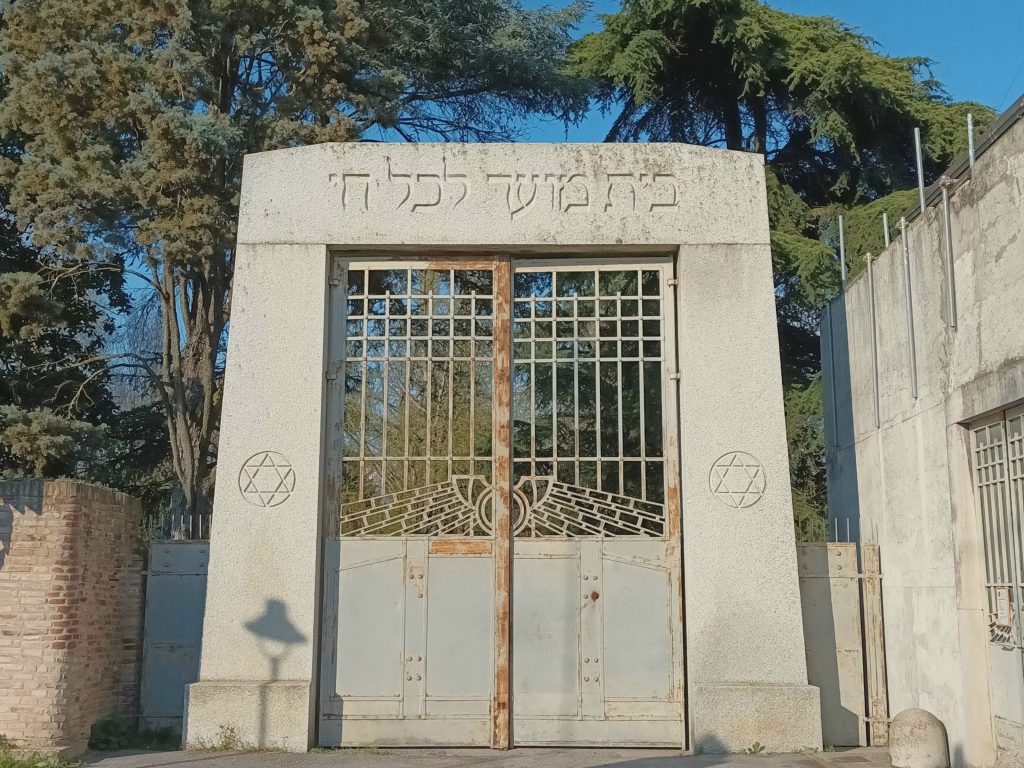
After this long day, you can enjoy the beautiful Piazza Ludovico Ariosto, choosing to sit on the stone benches that surround it or at the café under the arcades that will remind you of Bologna.
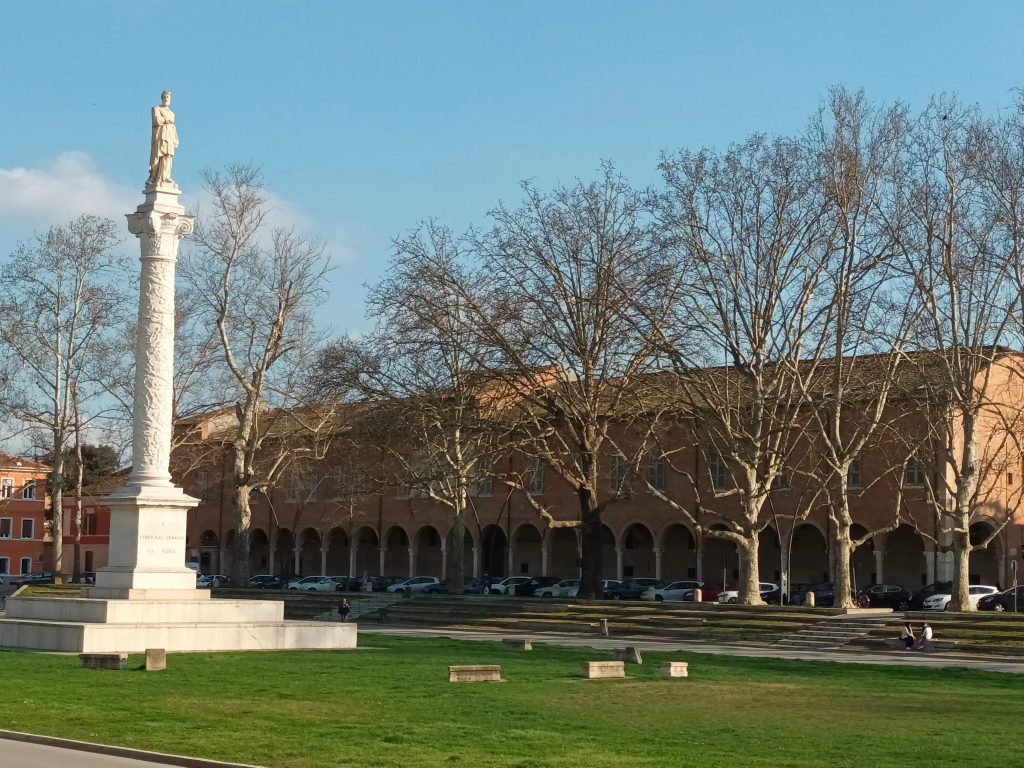
Interview
MEIS was a challenge from the moment it was built: to transform a place of confinement into an open and inclusive space. Meet Rachel Silvera, Director of Communications at MEIS, who tells us about this important place in Italian Jewish cultural heritage and the many projects it organizes.
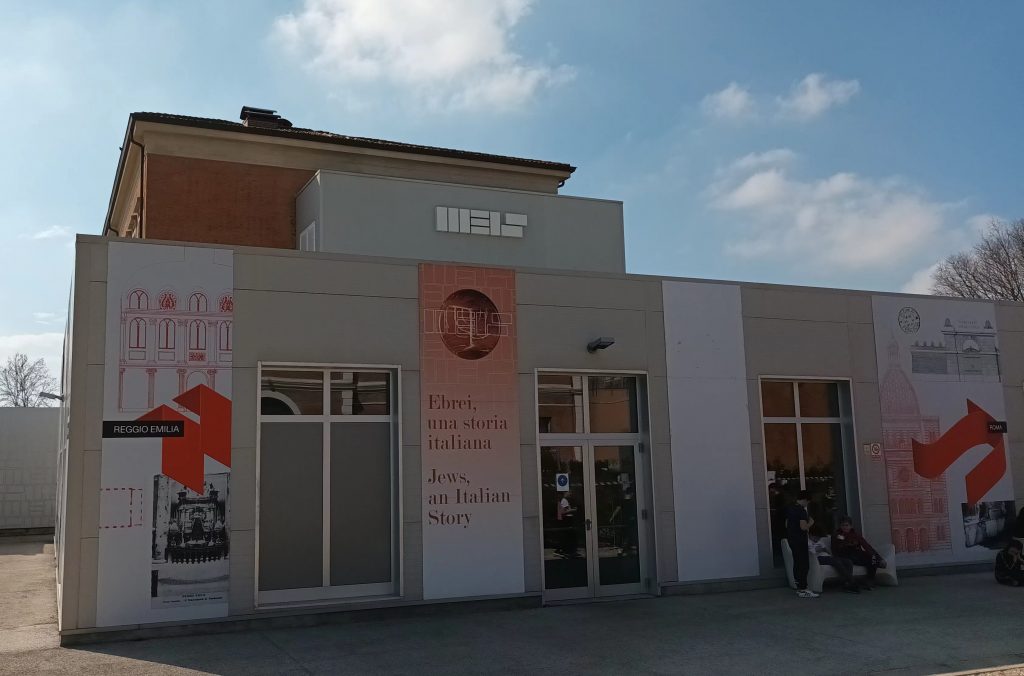
Jguideeurope : Can you present us some of the objects shown at the permanent exhibition dedicated to Jewish Italian history?
Rachel Silvera : In our permanent exhibition “Jews, an Italian Story” we display objects loaned by other Italian museums, reconstructions, and multimedia installations. For example, our visitors can admire the relief from the Arch of Titus showing the spoils of the Temple, a plaster reproduction made in 1930. The relief depicts the triumphal procession of Titus in Rome after the military campaign in Judaea, parading the spoils looted from the Temple of Jerusalem. You can also find the reconstructions of Jewish Catacombs, in Rome (like Villa Torlonia and Vigna Randanini) and in the South of Italy (Venosa).
How do you perceive the evolution of interest in Shoah studies in Italy?
It is a fundamental way: 1) to know the history and strengthen awareness 2) to offer useful tools to the students and transmit values to the next generation 3) to fight Holocaust denial and distortion.

Which educational projects focusing on the Shoah are being conducted by the Museum?
During the pandemic we have organized two important online events for school students devoted to the Shoah and the future of the remembrance. We have reached more than 12.000 students. Every year we also offer an online course addressed to teachers focused on Shoah history and the relationship with new medias. We are working also on a project financed by the Ministry of Public Education along with a high school from Ferrara (Liceo Roiti) and the Institut of Contemporary History of Ferrara: the students are working with us to create an exhibition focused on the Racial Laws and the persecution.
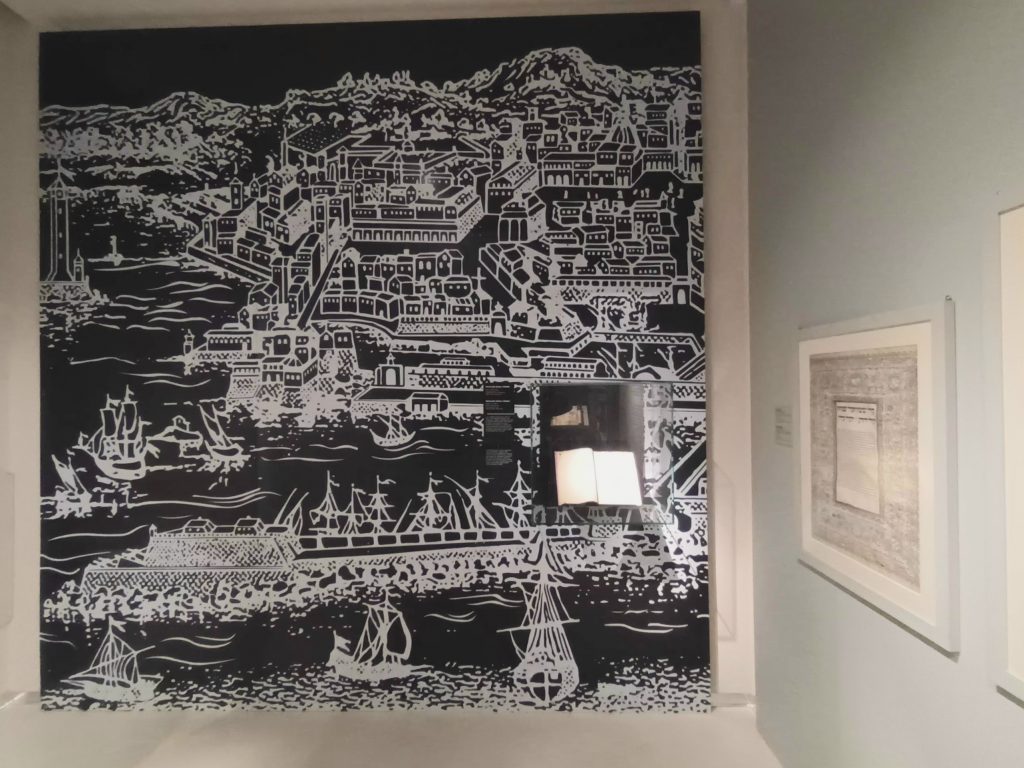
Can you tell us about a moving encounter at the Museum with either a visitor or exhibition participants?
The Museo Nazionale dell’Ebraismo Italiano e della Shoah (National Museum of Italian Judaism and the Shoah) is in Ferrara, in the former prisons of via Piangipane. During the war, its walls imprisoned antifascist opponents and Jews, including the writer Giorgio Bassani, Matilde Bassani and Corrado Israel De Benedetti. The challenge was to transform a place of confinement into an open, inclusive space.
During the last International Holocaust Remembrance Day, we unveiled a commemorative plaque that remember the story of this place. The special guest was Patrizio Bianchi, the Italian Minister of Education. It was a really touching moment.
Bologna is famous for having been one of Europe’s leading cities in the Middle Ages. Thanks to its large population living within its walls, the wealth of local agriculture, the development of trade with the other cities of Emilia-Romagna, but also and perhaps above all to the dynamism provided by its university, the oldest in Europe.

History of the Jews of Bologna
The first traces of a Jewish presence in Bologna date back to 1353, when a document mentions a certain Gaio Finzi, “judeus de Roma”. Jews from the surrounding towns of Fabriano, Pesaro, Orvieto and Rimini also settled here in the second half of the 14th century.
The Italian rabbis met in Bologna in 1416 to agree on a petition submitted to Pope Martin V. In 1468, a professor of Hebrew was recruited by the University of Bologna. Between 1477 and 1482, a number of Jewish publishing houses were established, remaining active until the middle of the 16th century.
Following the Spanish Inquisition in 1492, Sephardic Jews settled in Bologna, including Rabbi Jacob Mantinus. Ovadyah Sforno, a doctor and rabbi, founded a renowned Talmudic school in 1527. In 1553, following a counter-reformation campaign, Talmud and other Jewish books were publicly burnt.

Two years later, Pope Paul IV forced the Jews to live in ghettos in all the cities of the Papal States. The one in Bologna was created in 1556 and closed by two gates. In 1569, the Jews of Bologna were expelled from the city. Pope Sixtus V authorised their resettlement in 1586. But they were expelled again seven years later.
It was not until 1796, with Napoleon’s conquest, that the Jews of Bologna were allowed to return and, above all, to worship freely, as was the case in France following the emancipation of the 1789 Revolution.
As a sign of its official recognition, the Jewish community was given access to an oratory in 1829. Following the loss of power by the Church and the proclamation of the Roman Republic, all Italian Jews were officially declared free in 1860. Nine years later, a plot of land in Bologna’s municipal cemetery was granted to them. The Bologna synagogue, built by the architect Guido Lisi, was inaugurated in 1877.
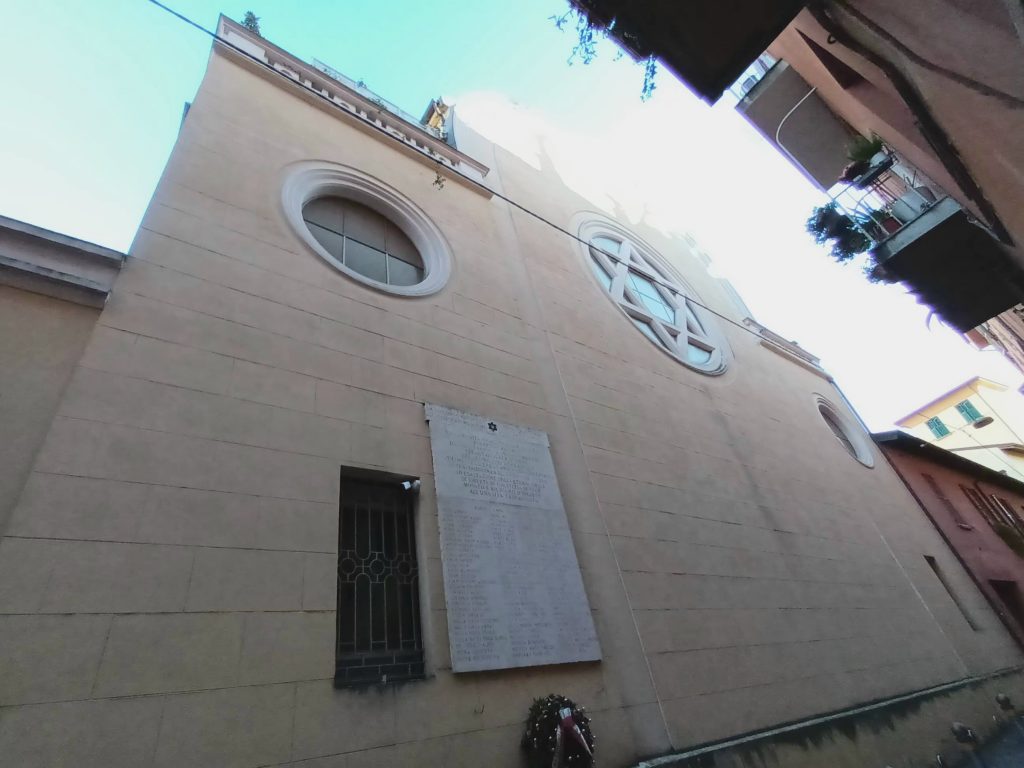
Following the promulgation of the “racial laws” in 1938 by Mussolini’s regime, Jewish teachers and students were excluded from schools and universities. The deportations of Bologna’s Jews began in November 1943. This was the case for 85 of them, including Rabbi Alberto Orvieto. Following the Holocaust, the Jewish community was rebuilt and by 2024 had grown to almost 300 members.
Tour of Bologna
We invite you to follow an itinerary through this sumptuous city, with its red buildings and temper by day and subtle yellow lighting at night.
The train takes 7 minutes from the airport to the station. As soon as you get off, you notice the arcades.

Arcades from different eras, in different styles, everywhere, overhanging the streets. A policy of building expansion put in place in response to the problems of overcrowding in this city, which was already one of the five largest in Europe in the Middle Ages. A desire to build forwards rather than upwards. Perhaps also a way of protecting and accompanying passers-by.
To the right of the station, you’ll find working-class neighbourhoods, as well as MAMBO, the Museum of Modern Art, a multi-disciplinary cultural complex that houses a film school with a lovely graffiti tribute to Agnès Varda at the entrance. Also in the area, the park named in tribute to 9/11 and the monument in Place Lamé, with its sculptures in memory of the partisans.
Take the main boulevard Via Giovanni Amendola, which runs from the station to Piazza dei Martiri 1943-1945 and then becomes Via Guglielmo Marconi, which leads directly to the Bologna synagogue by turning left into Porta Nova.
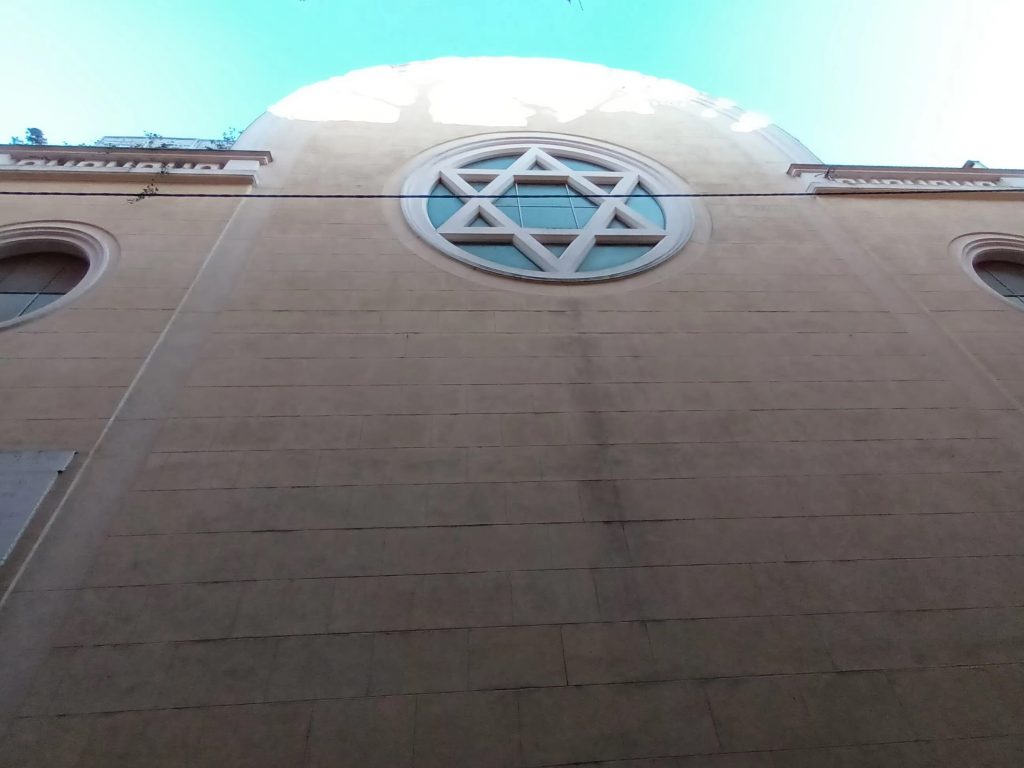
The contemporary synagogue is on Via Finzi, at the western entrance to the old quarter. A small oratory was founded by Angelo Carpi in his house in 1829. In 1868, the growing community rented a room in a building on Via Gombruti. Between 1874 and 1877, a larger synagogue was built in the same building. The synagogue was destroyed in an air raid in 1943 and rebuilt in 1953.
The main hall is now used only for major festivals. In 2017, a small synagogue was built underneath the building. During the works, a Roman mosaic and other magnificent ancient works were discovered. In order to preserve and allow visitors to see them, the floor of the synagogue was constructed in the form of a grid. The community may be small, but it remains fairly dynamic and enthusiastically welcomes visitors Shabbath. “Naturally”, for security reasons, visitors must apply by e-mail. The synagogue was the victim of an anti-Semitic attack in January 2025, causing damage.
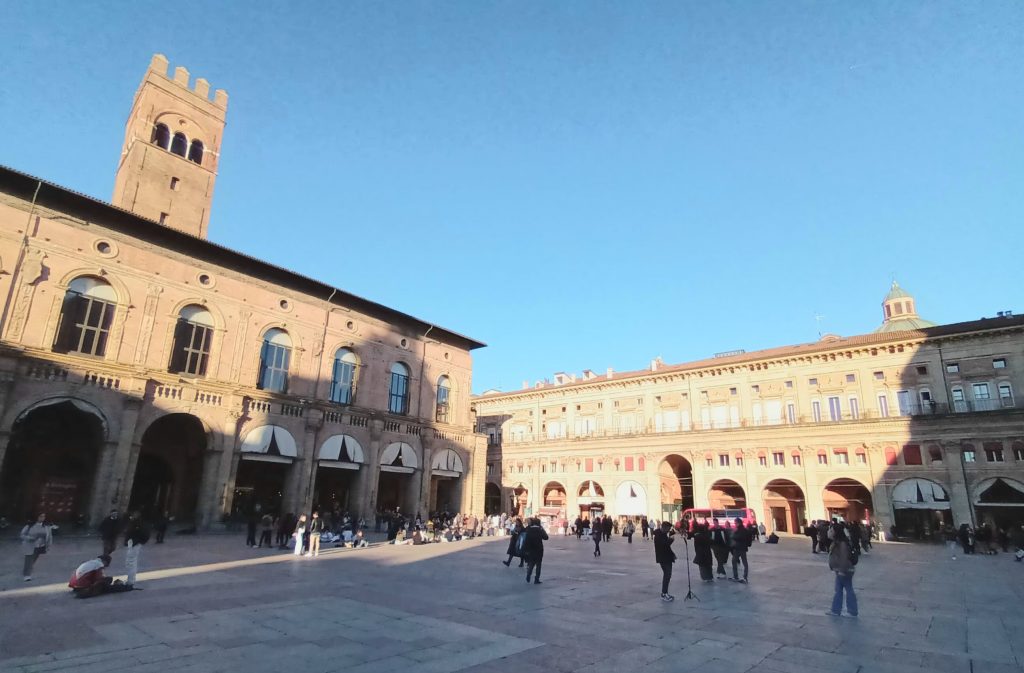
We then take the Porta Nova, which leads to the Via IV Novembre, to bringing us closer to the heart of the old town. Continuing in a straight line, you arrive at the famous Piazza Maggiore and Piazza del Nettuno (with its statue of the god of the seas), home to the sumptuous buildings of the Town Hall (the Palazzio d’Accursio) and the Basilica, built in two stages as you can see from the outside.

These squares are very busy both day and night, with a mix of impromptu concerts, terraces, students, commuters and tourists.

The Palazzio d’Accursio welcomes on its outside wall facing the Piazza del Nettuno a tribute to the Partisans who died to liberate Bologna during the Second World War. Head towards the Medieval Civic Museum along Via dell’Independenza, passing the imposing San Pietro cathedral and its beautiful, endless arcades and designer shops.
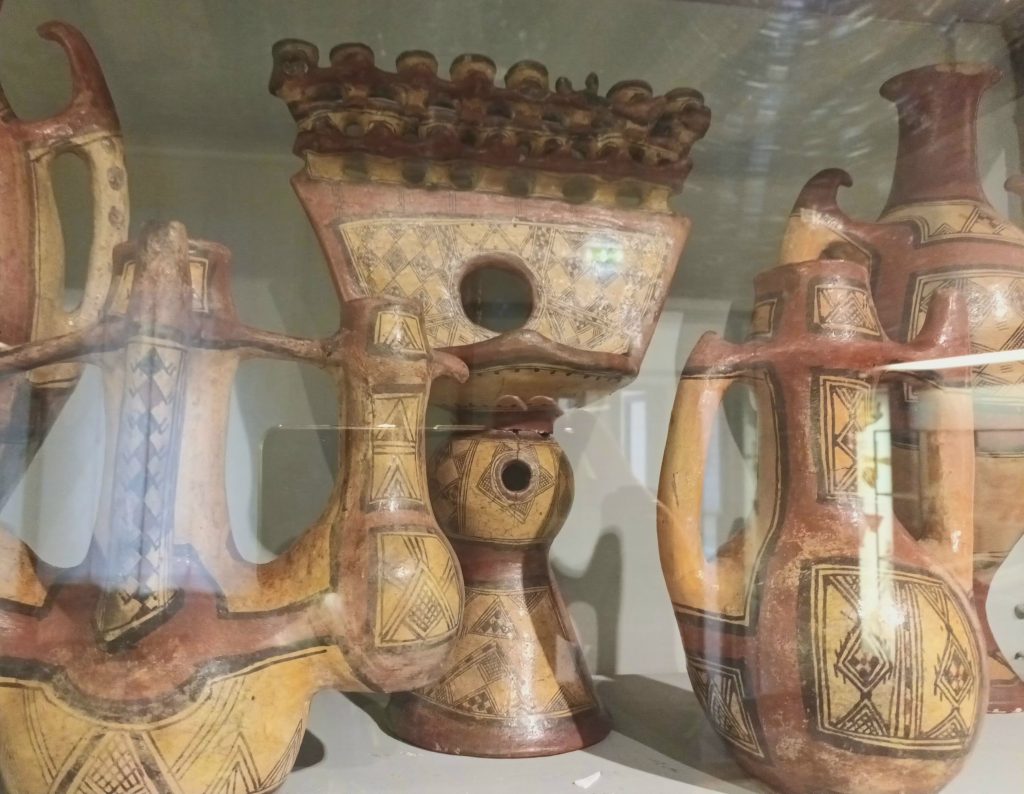
Turn left onto Via Manzoni to reach the Medieval Civic Museum , an important stop-off point for discovering the history of Bologna and the greatness of the city in those days. As you enter the museum, you come across a wooden candlestick that closely resembles a menorah.
Between the various rooms of this labyrinthine museum, three ancient Jewish tombstones and a Muslim tombstone are displayed side by side in two courtyards.
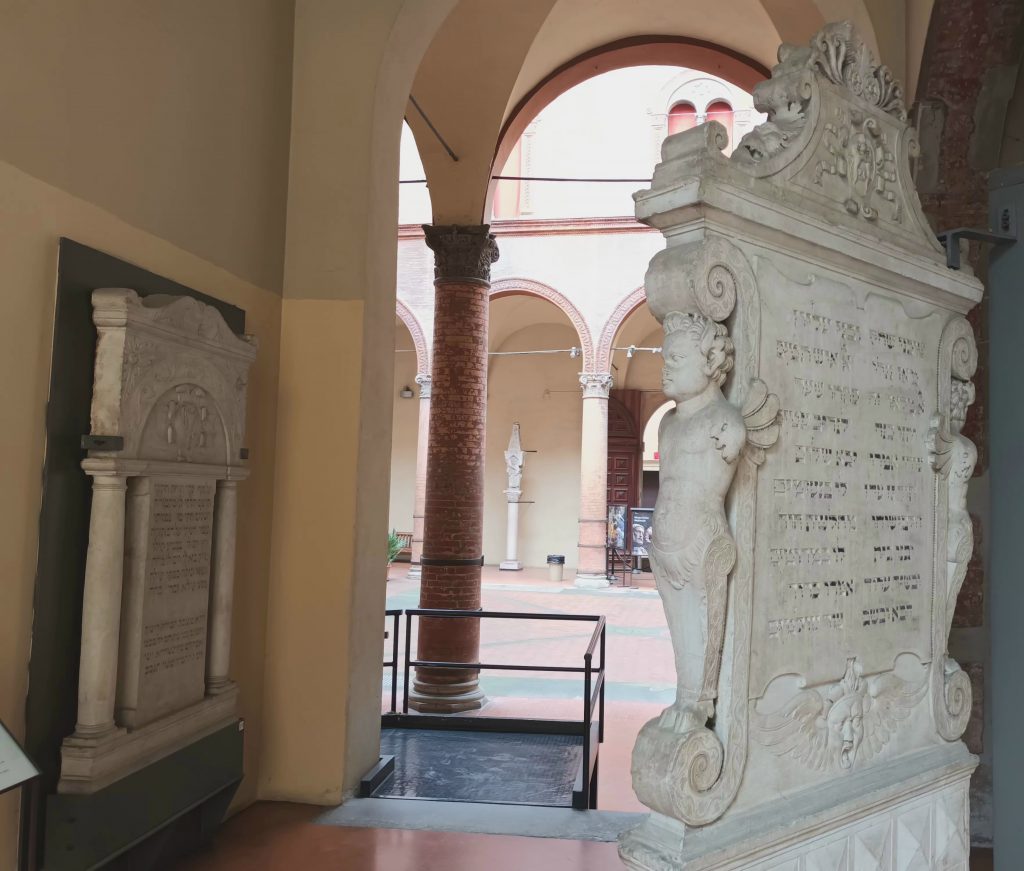
Behind the second courtyard is the Lippo di Dalmasio, dedicated to works from the Trecento and Quattrocento periods. Works from the period are on display, and the economic links between Bologna and Pistoia, which led to their mutual development during this golden age, are also explored.
The tour continues in other rooms, featuring Gothic frescoes of professors surrounded by students in this city of learning. Then there are small statues that were very popular in the Renaissance, huge books combining texts and ancient graphics, and knights’ outfits.
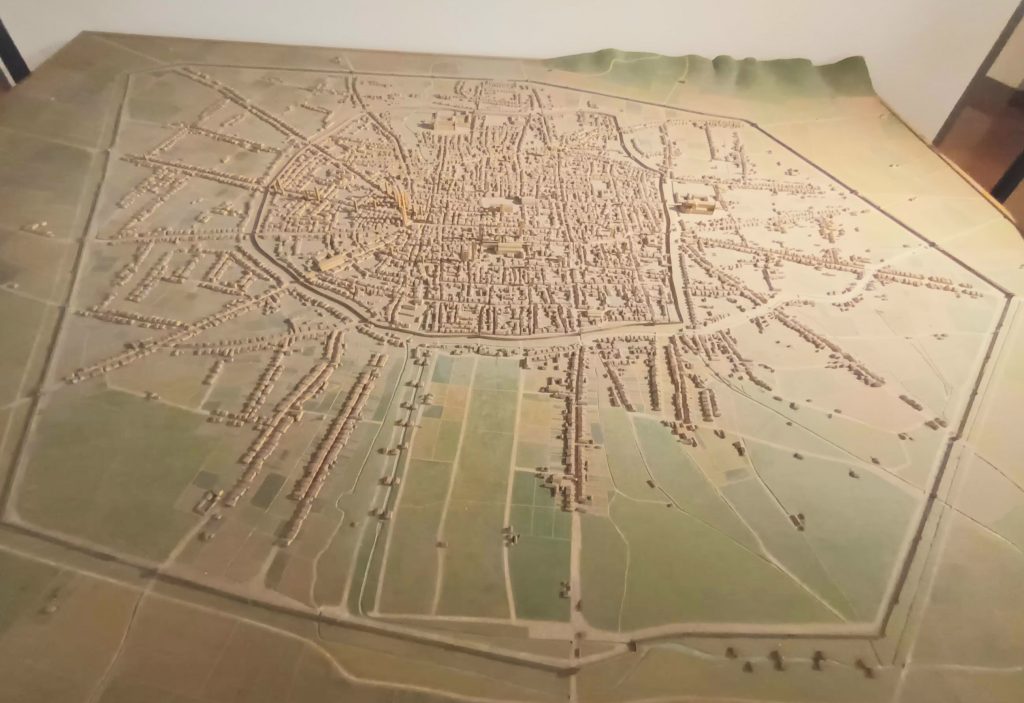
Above all, there is a beautiful model of the town in medieval times, which in the 13th century had a population of 50,000, one of the highest in Europe at the time.
On leaving the museum, head north along Via dell’Independenza and take the first street on the right. Located in Via Goito, Palazzo Bocchi was built in 1545 and 1565 by Jacopo Barozzi and Sebastiano Serlio.
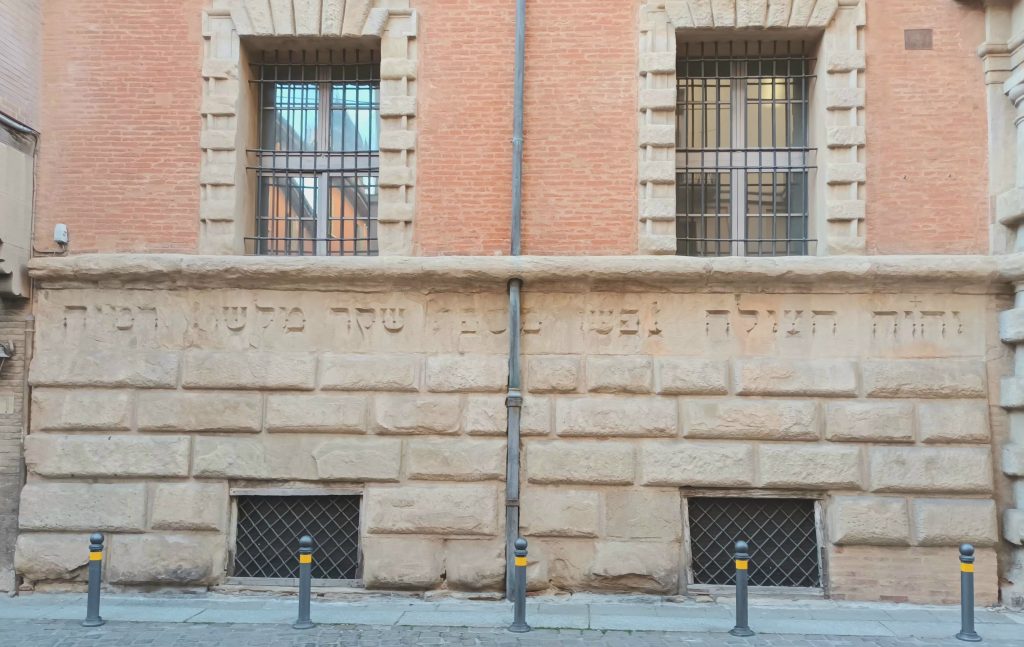
It is a typical example of Renaissance architecture. The scholar Achille Bocchi founded his Literary Academy here. He had two inscriptions placed on the façade. One is in Hebrew, taken from Psalm 120: “O Lord, deliver my soul from the lying lip, from the deceitful tongue”; the other is in Latin, taken from an epistle by Horace: “Behave well and you will be king, they say”.
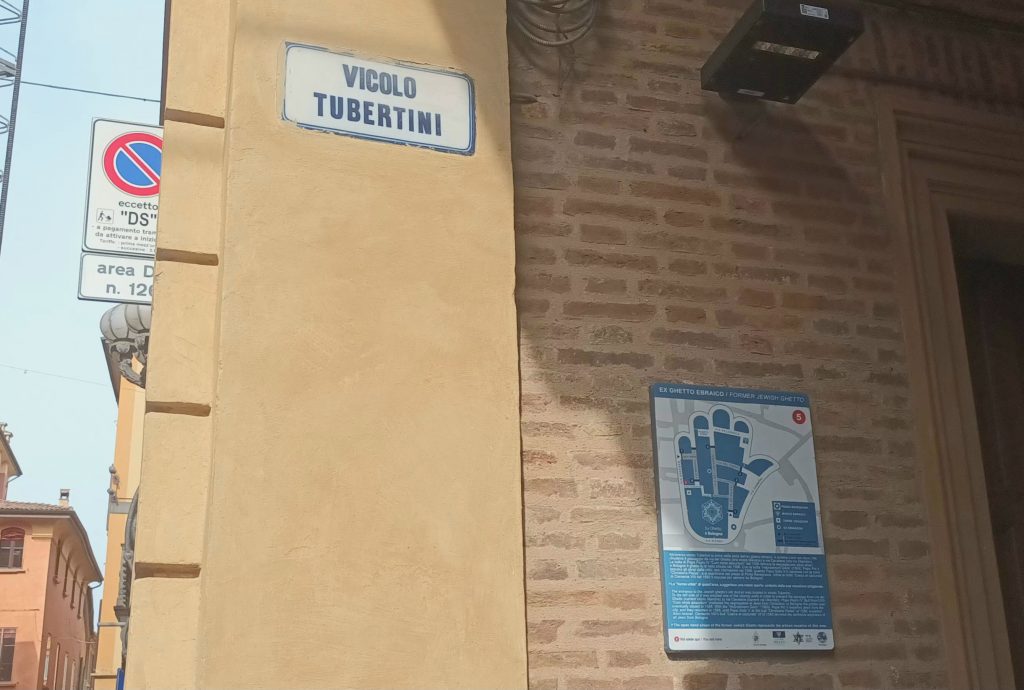
Continuing along Via Goito, you come to Via Guglielmo Oberdan. This is one of the two historic entrances to the ghetto. On Via Oberdan, turn into Vicolo Tibertini. Here you can see a map showing where the Jews of Bologna used to live. The old Via del Ghetto has been renamed Vicolo Mandria.
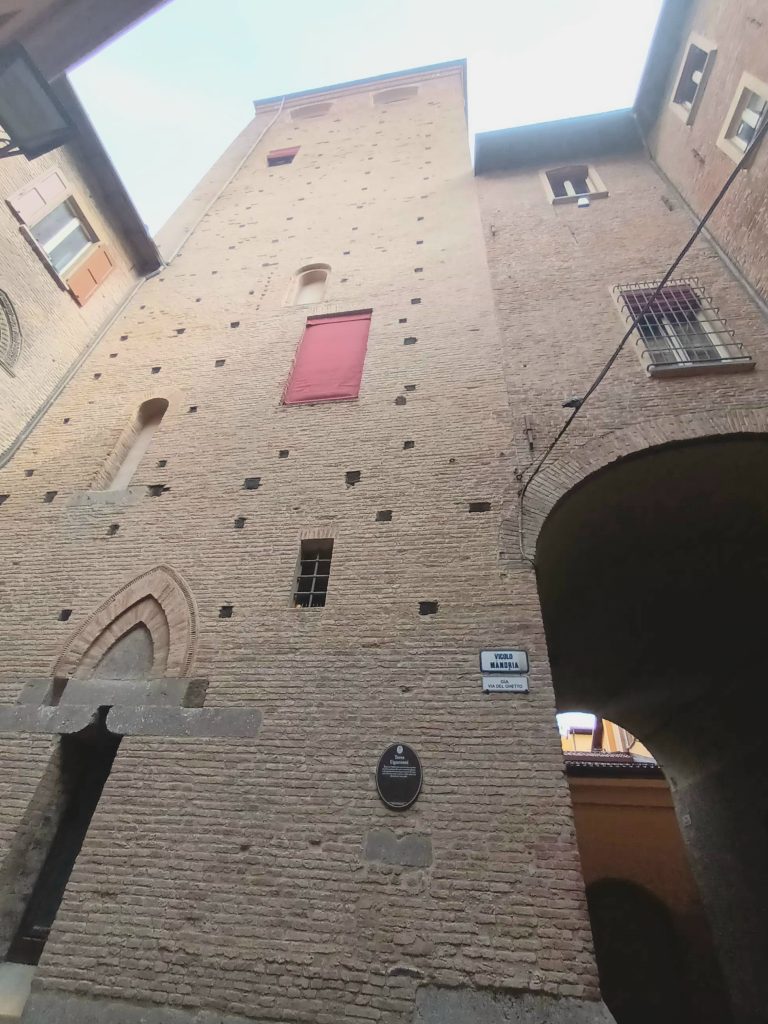
The synagogue was located on Via dell’Inferno. Entering this street, you come to Via Canonica, then Via de’ Giudei (the street of the Hebrews) and Via del Carro.
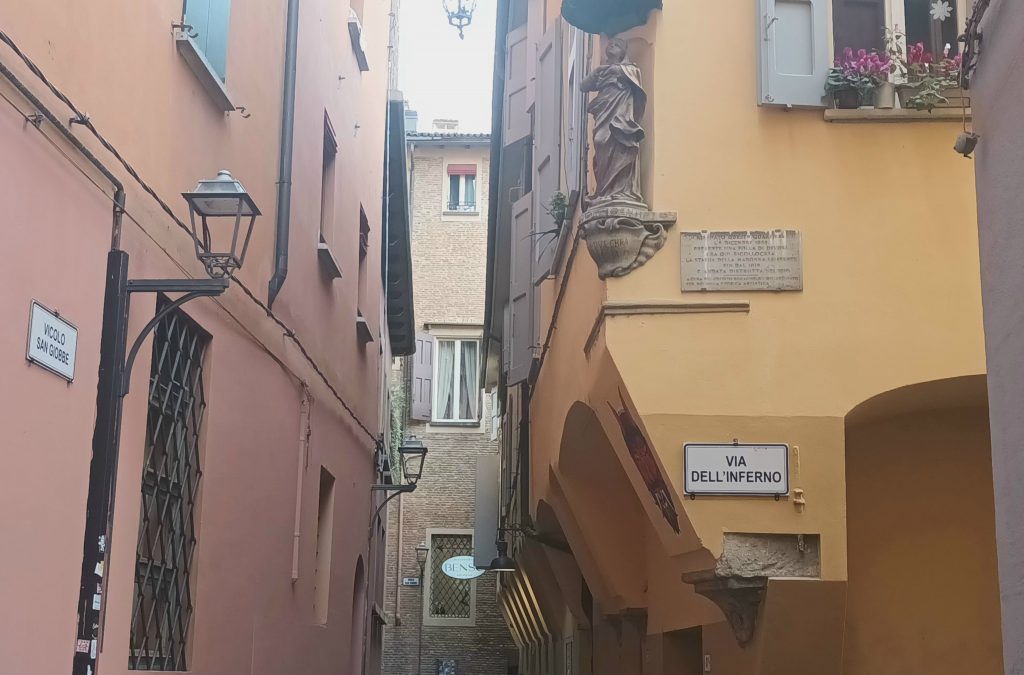
At the end of the street, you come to the famous towers of Bologna, built in the 12th and 13th centuries. The Asinelli Tower is 97.2 m high and the Garisenda Tower is only 48 m high, but it was this tower that inspired Dante. It was shortened because it was in danger of collapsing.

If you go up Via Zamboni, back into Via del Carro and then Via Valdonica, you will come to the Museo Ebraico di Bologna .
This Jewish museum is housed in Palazzo Pannolini, which in the fifteenth and sixteenth centuries was the home of the Pannolini family, producers and merchants of woollen cloth.

Inaugurated in 1999, this avant-garde museum is divided into two halls. One is devoted to the permanent exhibition and the other to temporary exhibitions. The permanent room begins with a general presentation of Judaism, the different customs, communities and their evolution over time.
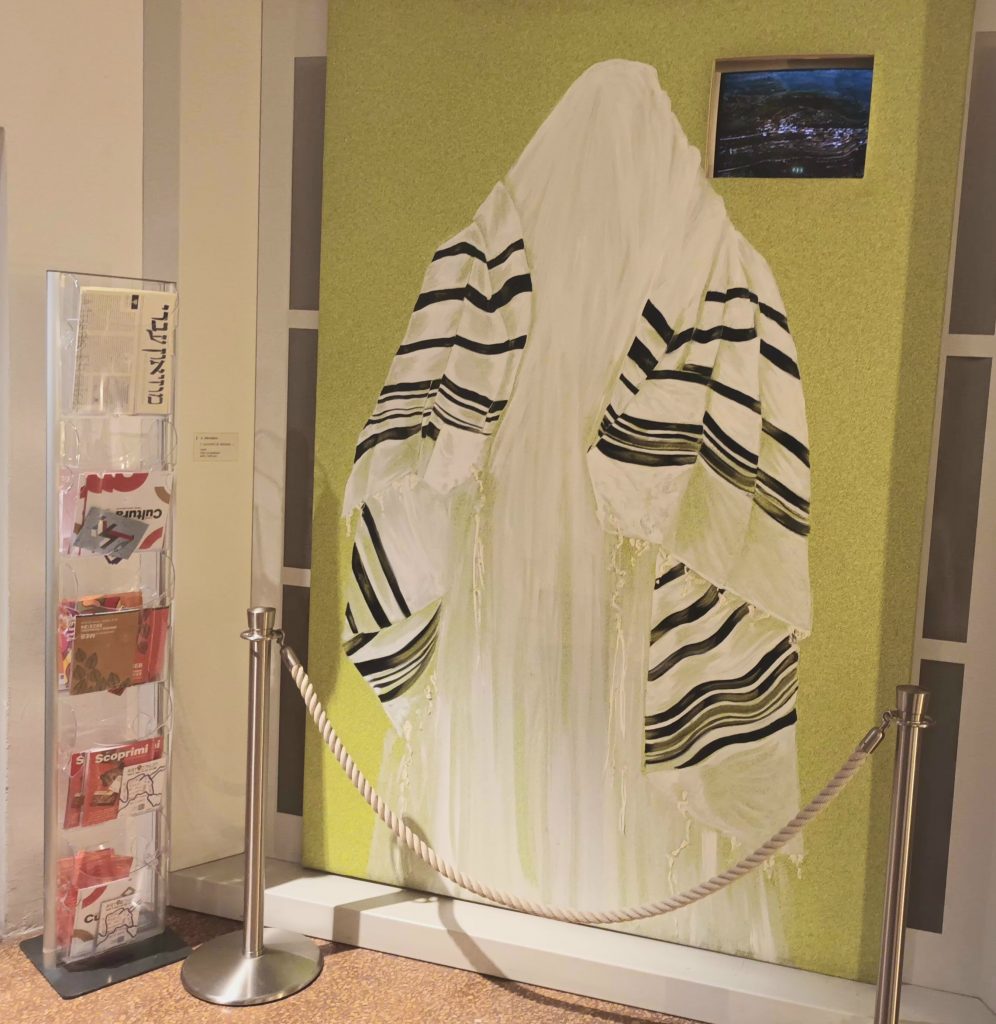
The age of the Italian communities is highlighted, as is their fluctuating welcome, which has varied according to the political and religious leaders of the different eras since Antiquity. A sign indicates that Jews were present in 37 towns and villages. The tour covers both ancient and contemporary history.
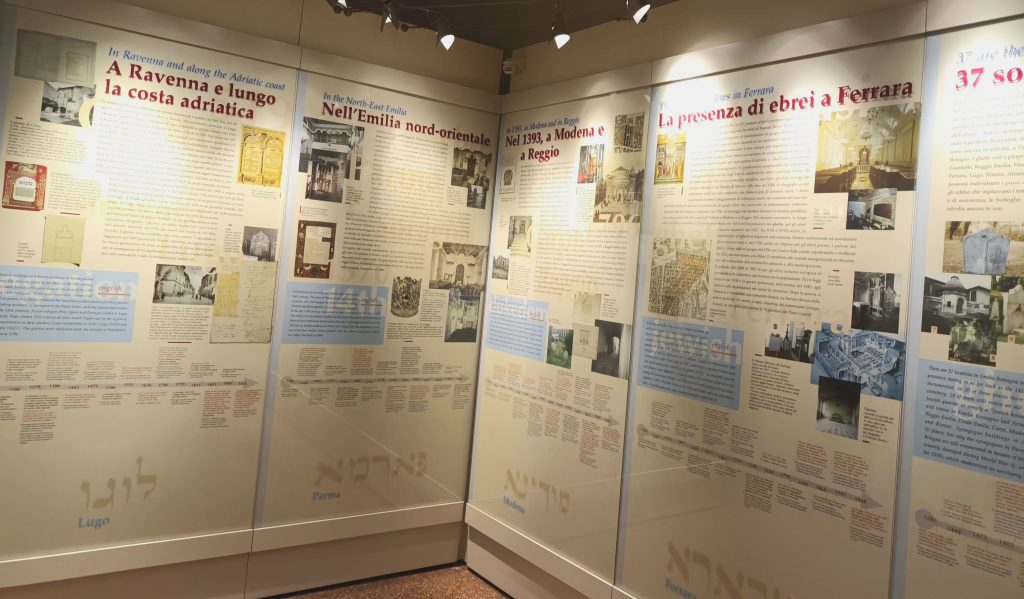
A small room is also reserved for a monument in memory of those deported from the region to the concentration camps.
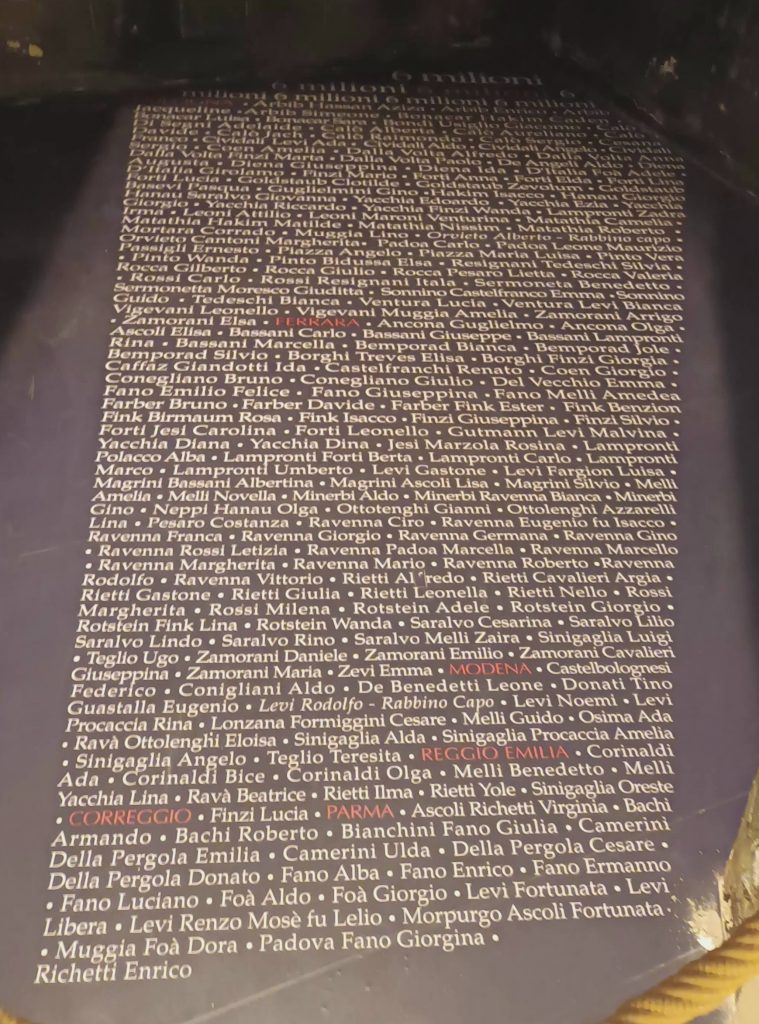
Crossing the Place Verdi, the municipal theatre and the conservatoire with its large restaurant where many students meet, you arrive at the University of Bologna .

Founded in 1088, it is the oldest university in Europe! It forms a large complex, divided into study departments: physics, natural sciences, humanities, law, literature, etc.
At the entrance to the university which leads to the museum, there is a plaque in memory of the Jewish students who were subjected to racial discrimination in 1938 under the Mussolini regime.
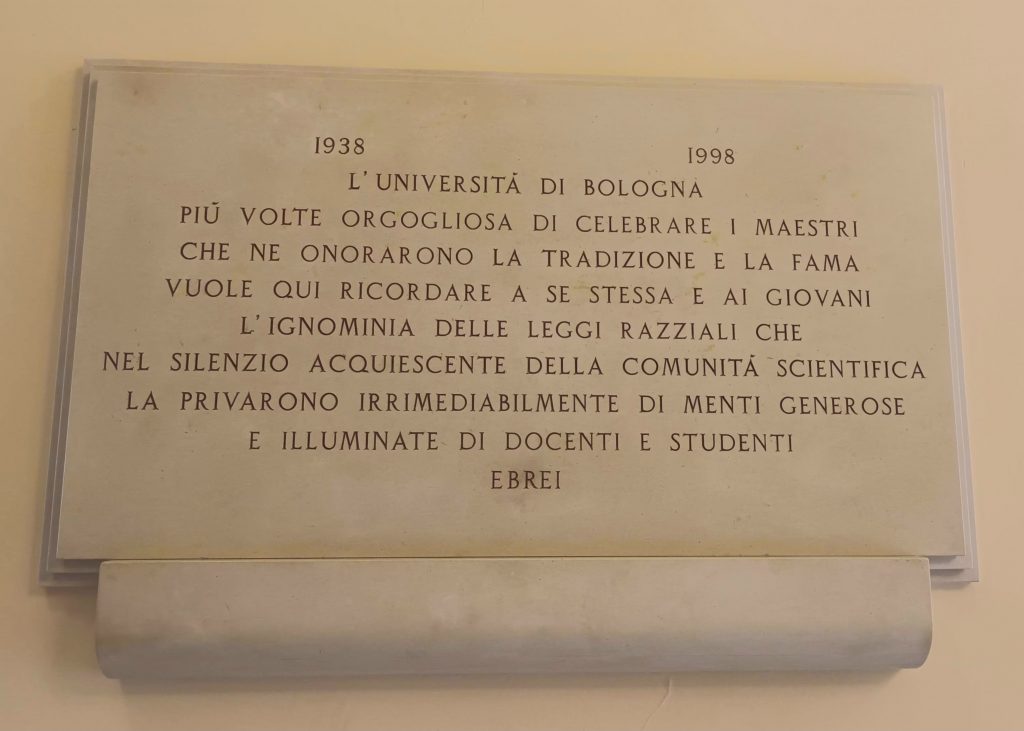
As you enter the museum on the left, you pass through various rooms celebrating scientific discoveries and all the courageous people who made these discoveries possible and supported them during political and religious struggles, encouraging encounters and curiosity. The result, of course, was the development of the university that accompanied Bologna’s status as one of the main European cities of the Middle Ages.
As you enter the museum on the right, you will see a room dedicated to military strategy, with plans of fortresses, warships and ancient cannons. Then there is an introductory science room for children. Next to this, in 2024, was a display of 20th century Japanese art.
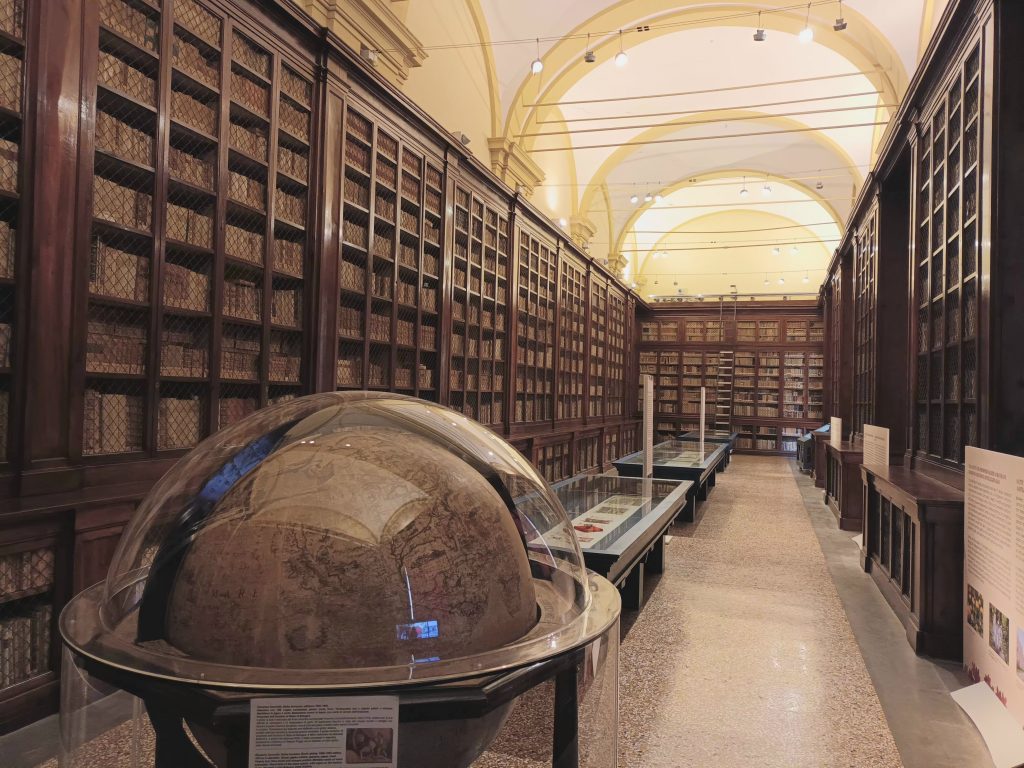
The exhibition ends with the very impressive old university library. Next to the new library is a bust of a former student, a certain Dante!
Leaving the university, head towards Via Irnerio to arrive in Piazza dell’8 Agosto, home to a large market. To the right of this is the Parco della Montagnola. This is a garden with astonishing statues and frescoes depicting battles between animals and mythological beings, as well as historical battles. These works surround the fountain, and the many children who play there after school.

At the top left of the garden, you’ll see the Porta Galliera. Below it and to the side, ancient ruins. The railway station is just opposite. Behind it, outside the city walls, is the Shoah Memorial .
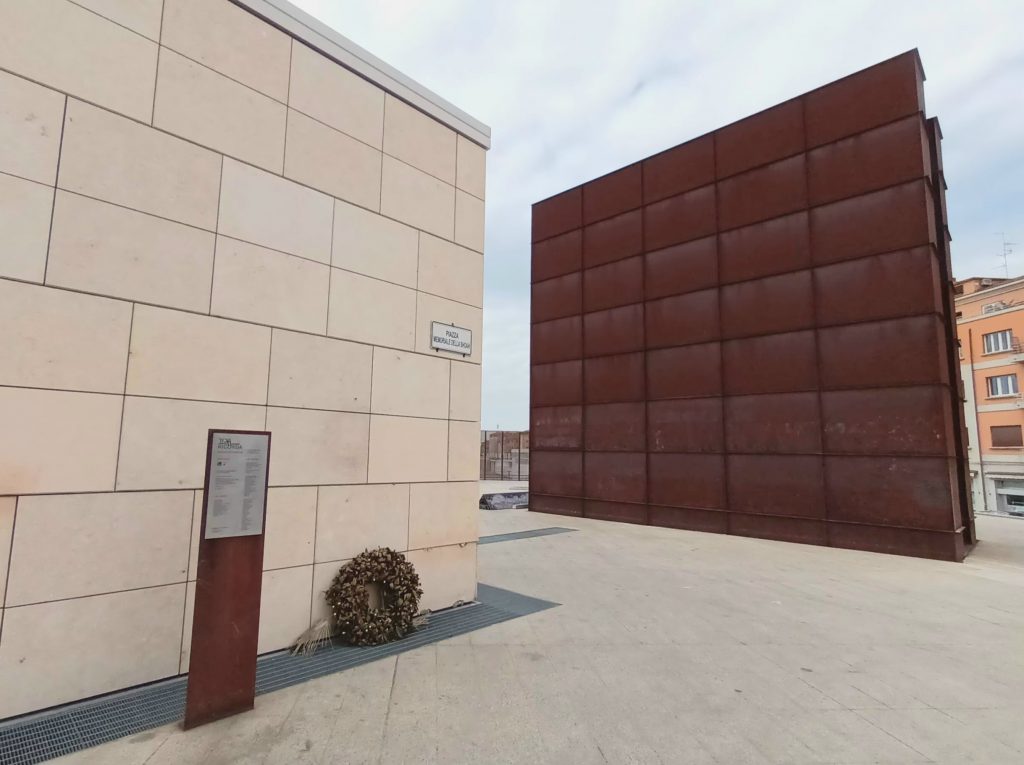
Inaugurated on 27 January 2016, it stands at the junction of Via dé Carracci and Via Giacomo Matteotti. Two steel rectangles face each other. Between them is a corridor that begins 1.60 metres wide and narrows to 80 cm, creating a feeling of oppression. The interior of the parallelepipeds is reminiscent of the dormitories at Auschwitz. The floor is made of ballast, like the stones made by Auschwitz I and II prisoners. Finally, the choice of steel, a material that rusts and deteriorates over time, is deliberate.
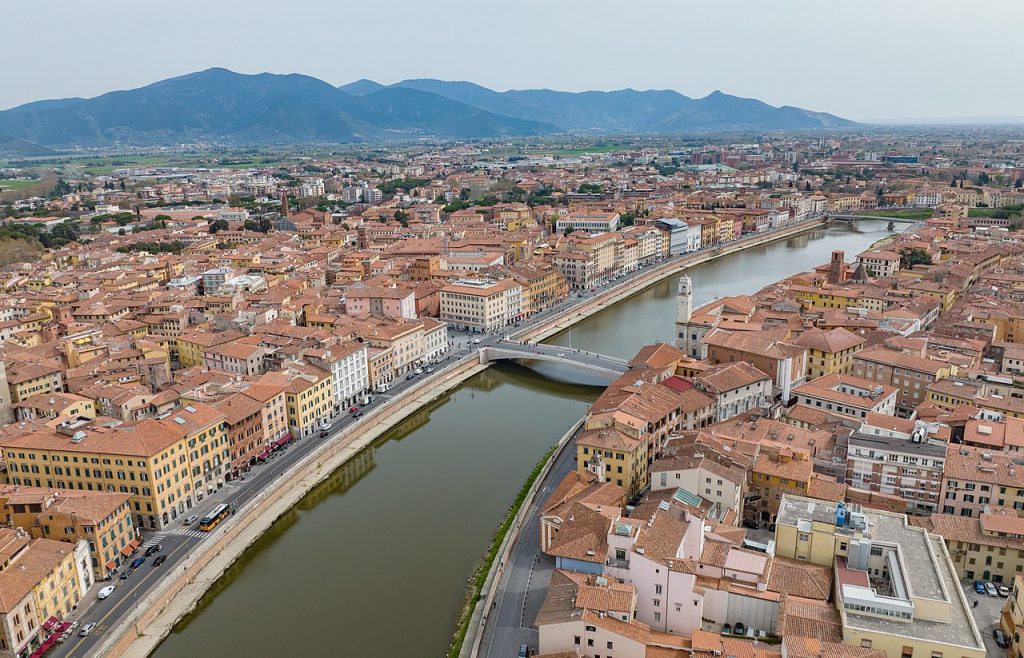
The old Jewish community of Pisa grew with the arrival of Jews from Spain at the beginning of the sixteenth century, but, with the development of Livorno, steadily decreased in numbers during the seventeenth and eighteenth centuries.
The current synagogue, constructed in 1756, has been remodeled several times, most notably at the end of the nineteenth century.

A visit to Livorno is required in the name of remembrance, even if the urban renewal projects of the early twentieth century around the port and the bombings of the Second World War in 1943-1944 have destroyed most of the old city center, including Jewish Livorno’s Grand Synagogue. In no other Italian city did the Jews have such a significant role as in Livorno, where they were never forced to live in ghettos. They were the true founders of the city and architects of its splendor. The grand duke of Tuscany issued the edict Livornina, dated 10 June 1593, which guaranteed -for twenty-five years and with the option of the edict’s renewal- the Jews free trade and the right to settle where they chose. They were not forced to wear an identifying sign as were other Jews in the duchy, and they were permitted to have Christian servants, ride in carriages, and, under Ferdinand I, were protected from the Inquisition: “During the said period, we do not want any inquisition, inspection, denunciation, or accusation to be pronounced against you or your families, even if in the past they lived outside our dominions, whether as Christians or simply called such”.
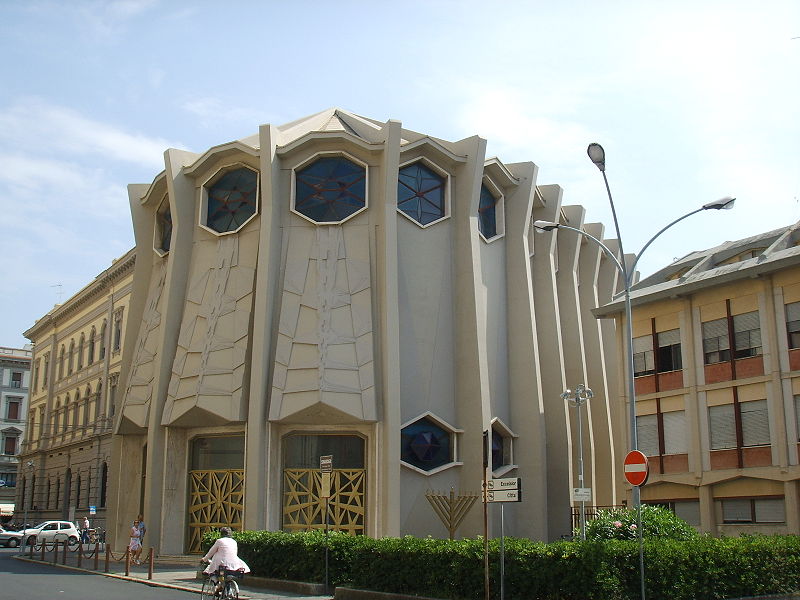
They were a large number of Jews of Portuguese and Spanish descent in Livorno. This small coastal city, ravaged by fevers, became, in just a few years, a flourishing port where the Jewish community had a prominent role. Spanish was the official language, and Ladino was the vernacular in use especially by those expelled from Spain to Thessaloniki, as with other ports of the Levant. Gradually the Livornese Jews created a new dialect, bagitto, a mix of Spanish, Hebrew, and the local dialect; it is spoken by ederly Jews of the city even today.
The community reached its apogee in the seventeenth and eighteenth centuries. Its decline began with the arrival of Bonaparte’s troops, however favorable this was to Jews throughout the rest of the peninsula: the blockade hurt the port. With Italian unification and the emancipation, the Jews of Livorno emigrated to Florence or Rome. By 1900, there were no more than 2,500 Jews in the city, a reduction by half in fifty years. The Second World War and the Nazi deportations struck a death blow to the Jewish community of Livorno, which today is reduced to some 800 members.
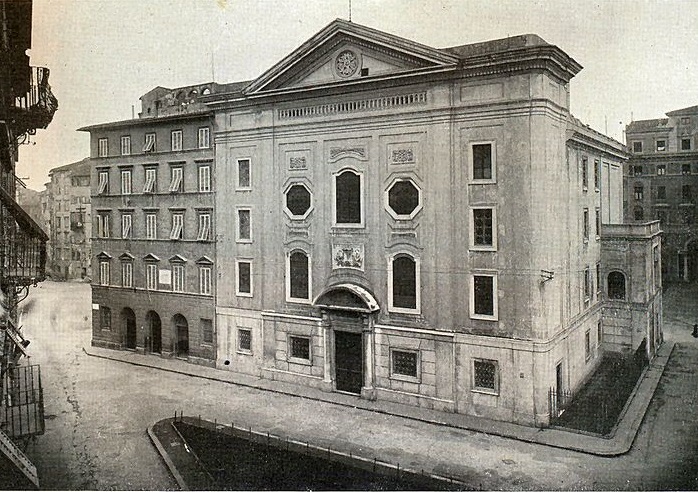
Completed in 1962, the new synagogue is a concrete, futuristic edifice designed by the Roman architect Angelo Di Castro that stands in the Piazza Benamozegh (the former Piazza del Tiempo) in the location of the former synagogue destroyed by bombing in 1944. The magnificent delicately carved, gilt aron from the beginning of the eighteenth century came from the old synagogue of Pesaro in the Marches.
The Marini Oratory (Draforia Marini) is located on the nearby Via Micali. During the period after the war and until the construction of the new synagogue, the oratory served as the location of worship. At the back of the square hall of the yeshiva, one can see an extraordinary gilt aron with finely carved floral decorations. It dates from the fifteenth century and probably came to Livorno with the Jews forced to flee Spain. Nevertheless, some experts date the creation of this masterpiece slightly later. The Jewish Museum is also located in this building; its collection of beautiful liturgical objects is housed in two display cases.
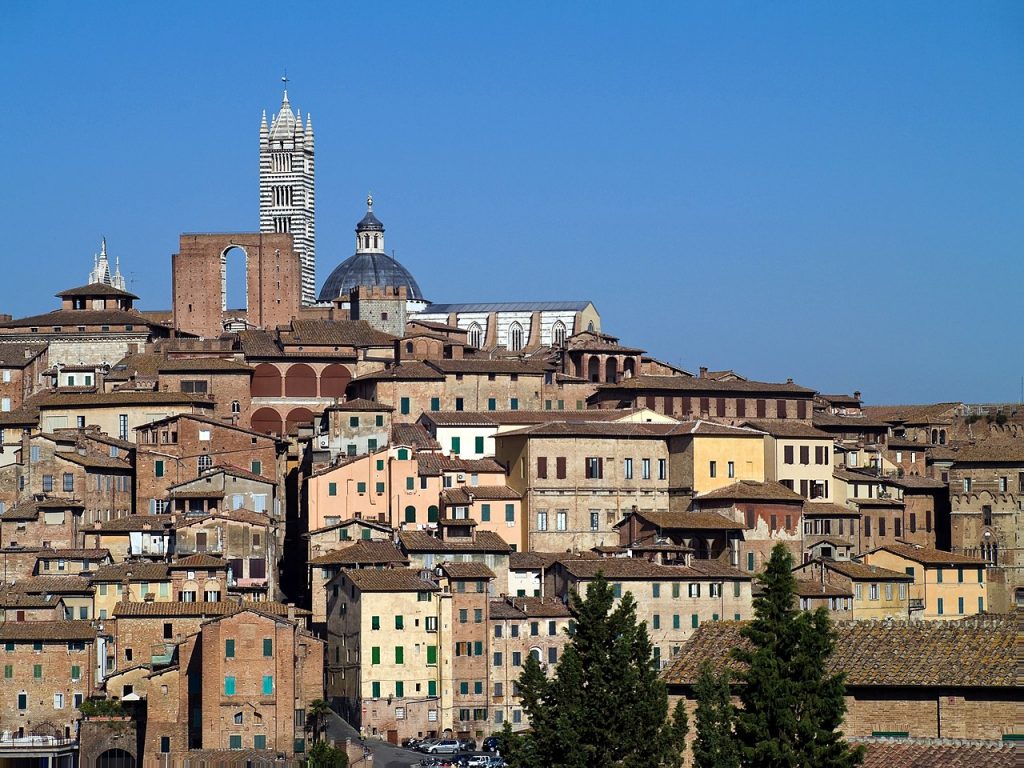
Siena’s ghetto was created at the same time as that of Florence in 1571. The large Jewish presence in the city is verified by documents from the beginning of the thirteenth century that mention a universita iudarum. The Jewish quarter is in the heart of the city, near the Piazza Campo and between the present-day Via San Martino and Via di Salicotto. The narrow little streets and tall houses were partly destroyed during the urban renewal projects of 1935, but certain of them have kept their original appearance, as with the buildings in Via delle Scotte near the synagogue and the names of streets like the Vicolo della Fortuna and the Vicolo della Manna.

The lovely neoclassical synagogue was built in 1756 according to the design of the Florentine architect Giuseppe Del Rosso. The construction lasted thirty years. At the center of the large, high-ceilinged hall is an elegantly sculpted wood bimah decorated with nine-armed candelabras. The windows are surrounded by moldings in the shape of ionic columns, and among the Baroque stuccowork, the walls feature fourteen verses from the Bible. The beautiful eighteenth-century aron is surrounded by marble Corinthian columns. In 2024, the Jewish community of Florence organised a fundraising campaign to save the synagogue, which had been badly damaged by the earthquake of February 2023.
Facing the synagogue, in Via degli Archi, stands the old fountain of the ghetto, which once boasted a statue of Moses. The statue was removed in the twentieth century due to pressure from indignant Orthodox Jews, who saw the statue as a transgression of the law forbidding representation of the human figure. It is now located in the local museum.
At the gates of the city on Via Certosa, one can see the old Jewish cemetery, whose oldest graves date to the sixteenth century.
Located at the extreme south of Tuscany among the hills and cypresses, the borough of Pitigliano rises from a rocky pinnacle. Once called “little Jerusalem” by Tuscan Jews, the nickname points to the historical importance of Pitigliano’s Jewish community here, formed by those fleeing the Papal States after the edicts of 1555.
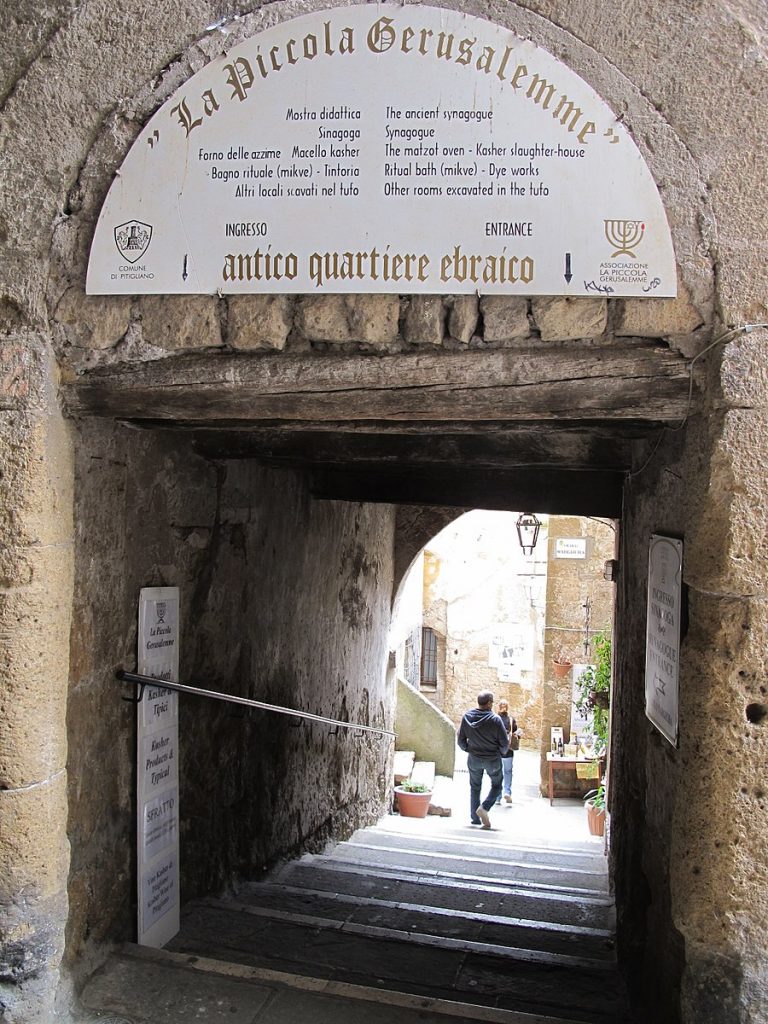
The Jews remained here for almost four centuries, formally occupying a ghetto after 1622, but trading or even farming in almost perfect tranquility. This calm was interrupted, however, in 1799 by anti-French violence subsequently directed at the Jews, who, with their new ideas, were accused of being in sympathy with the French. Of the 3189 residents registered in the town census of 1841, 359, or roughly 10%, were Jewish. After the emancipation in 1859, the Jews in Pitigliano stayed until the beginning of the twentieth century, their positive sentiments evident in the custom of naming their children Garibaldi or Mazzini, names of the heroes of Italian reunification. Eventually many residents departed for Florence or the capital and the community languished.
The best white kosher wine in Italy and an ancient synagogue are among the remains of the Jewish community in Pitigliano. The synagogue, which dates from the sixteenth century and was last remodeled in the eighteenth century, was crumbling by the 1960s. Restored and reopened in 1995, it stands in the former Jewish quarter at the foot of the Orsini Castle beside the former bread oven. Only one wall of the synagogue, that of the women’s gallery, has remained intact. The rest of the synagogue has ben carefully reconstructed with the gilt stucco, holy inscriptions in Hebrew, and plaques commemorating the visit of the grand dukes Ferdinand III and Leopold II to the temple at the beginning of the nineteenth century.
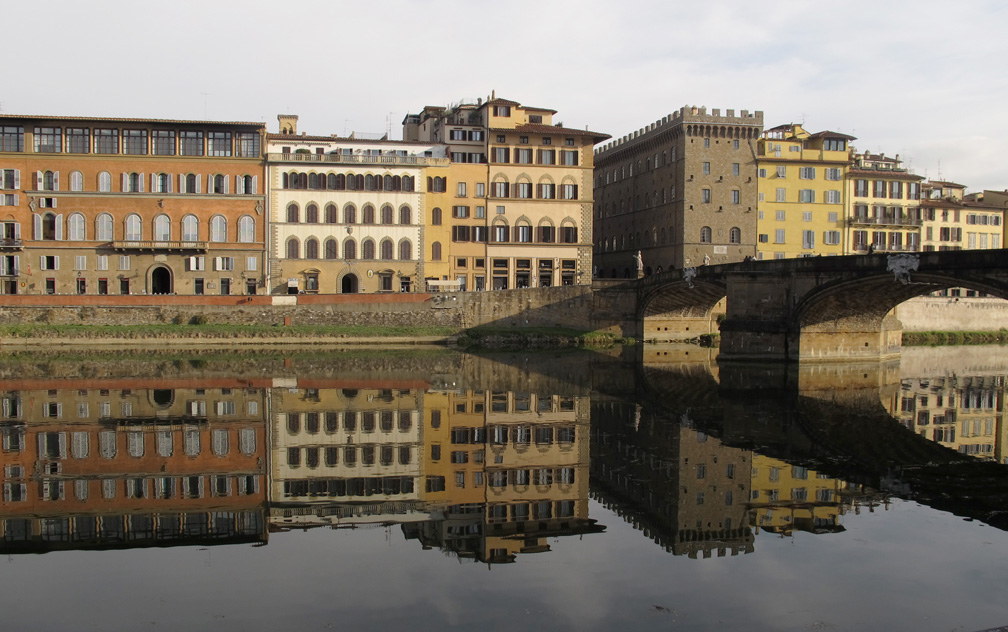
The former ghetto of Florence was located in the heart of the old city center near the market in a zone totally destroyed and the end of the twentieth century, situated today between Via Brunelleschi, the Piazza della Repubblica, and Via Roma. Bernardo Buontalento, the grand duke’s architect, was commissioned to design the ghetto. The streets accessing the residential blocks were walled, with the exception of two gates that were closed each evening.
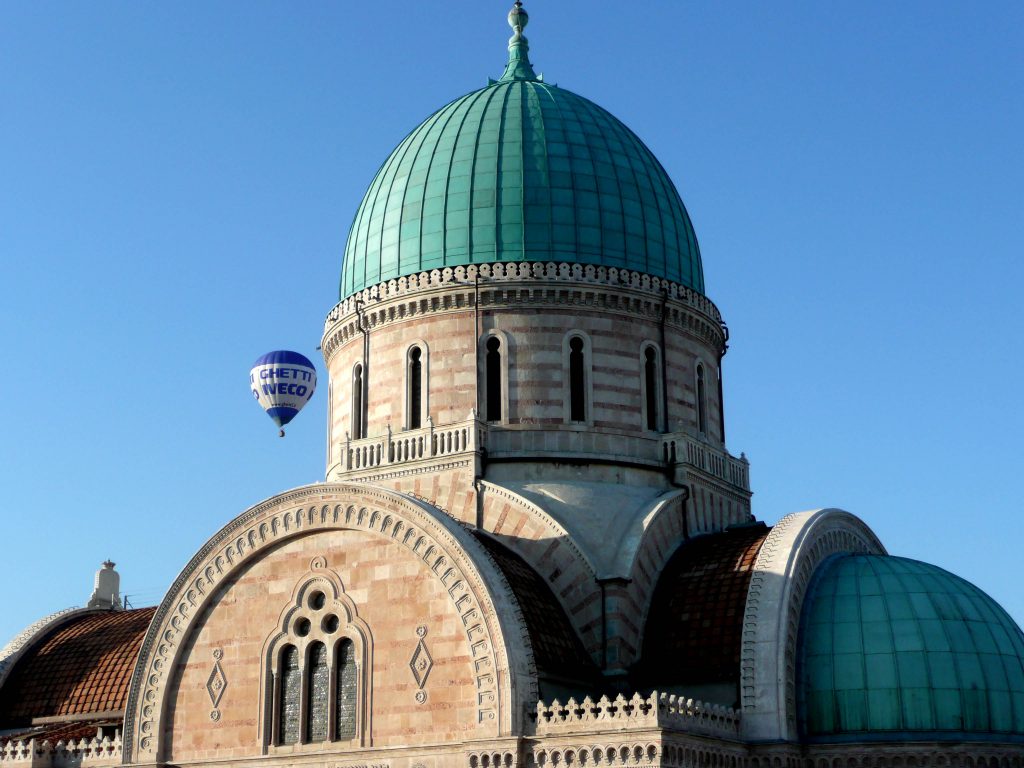
As in Siena, in Florence Jews from all the villages and towns of Tuscany were confined inside a labyrinth of alleys and courtyards. The Jews were excluded from guilds, and hawking used clothing was the only occupation open to them. They remained in the ghetto a=for almost three centuries, until 1848. Its two synagogues, one with Italian services and the other with Spanish, were destroyed at the same time as the ghetto at the end of the twentieth century. Shortly before the opening of the Grand Temple, two small oratories were created in 1882. In use until 1962, one oratory held services in Italian; the other followed an Ashkenazic liturgy. Both of them are commemorated in a plaque on the building at 4 Via delle Oche, which was the offices of the Mattir Assurim confraternity.
The imposing neo-Moorish Grand Temple (Tiempo Maggiore) was unveiled in 1882 after eight years of construction. Designed by Marco Treves with the assistance of architects Mariano Falcini and Vincenzo Micheli, this synagogue with its majestic pink and white stone facade is dominated by a large green dome and two matching minarets on each side. The Tablets of the Law crown the pediment. The rich Moorish-style interior is sumptuously decorated with arcades of slender columns, and in the center, there is a semi-circular apse where the aron and the bimah are enthroned, separated from the rest of the prayer hall by a finely wrought grille. The mosaics and frescoes of gold and azure are the work of Giovanni Panti. During the war, the Nazis used the temple as a military garage and attempted to dynamite it during their retreat, fortunately without substantial damage. Carefully restored, the synagogue was later victim to the great flooding of the Arno River in 1966, which filled it with seven feet of water. A large portion of the 15,000-volume library was severely damaged.
The facade of the Basilica Santa Croce
The facade of the Basilica Santa Croce is decorated with a large Star of David that will probably arouse your curiosity. In their Guida all’Italia Ebraica (Guide to Jewish Italy), Annie Sacerdoti and Luca Fiorentino tell of its strange origin: “In 1860, it was decided to renovate the church’s thirteenth-century Gothic facade with polychrome marble. The work was entrusted to the architect Nicolò Matas, a Jew from Ancona who incorporated the large star as an element of the decoration. No one paid any attention to the architect’s Jewish origins, even after he specified in his contract that he would not work on Saturdays. When he died, he put the Jewish community and the Franciscans in a difficult position by stating in his will his wish to be buried in the basilica. A compromise was finally reached: he was interred in a marble sarcophagus just outside the church under the flight of stairs facing the main entrance.
Opened in 1981, the Jewish Museum is on the second floor in a vast room divided into two parts: one houses a collection of photos, visual witnesses to Jewish life in Florence, and the other contains beautiful religious objects, especially silver pieces and textiles. You can also admire a beautiful old rimmon dating from the end of the sixteenth century. At the museum exit, a large plaque commemorates the 248 Jews from Florence who were deported and died in the death camps or were executed.
Interview with Emanuele Viterbo, Head of the Jewish Community of Florence
Jguideeurope: How was the Jewish Museum of Florence created?
Emanuele Viterbo: The design of the Jewish Museum in Florence, strongly backed by Rabbi Fernando Belgrado, was initiated in 1981as a result of the donation of Marta del Mar Bigiavi. The first exhibit occupied the first floor in a room behind the women’s gallery and included the historical section and the furniture and home furnishings of synagogue worship. The project was designed by the architect Alberto Boralevi, with the exhibition design by Dora Smooth. The second part of the museum, opened in 2007, is located on the top floor, and was designed by the architect Renzo Funaro in collaboration with the architect Michael Tarroni and was set up by Dora Smooth and for the textile industry section by Laura Zaccagnini.
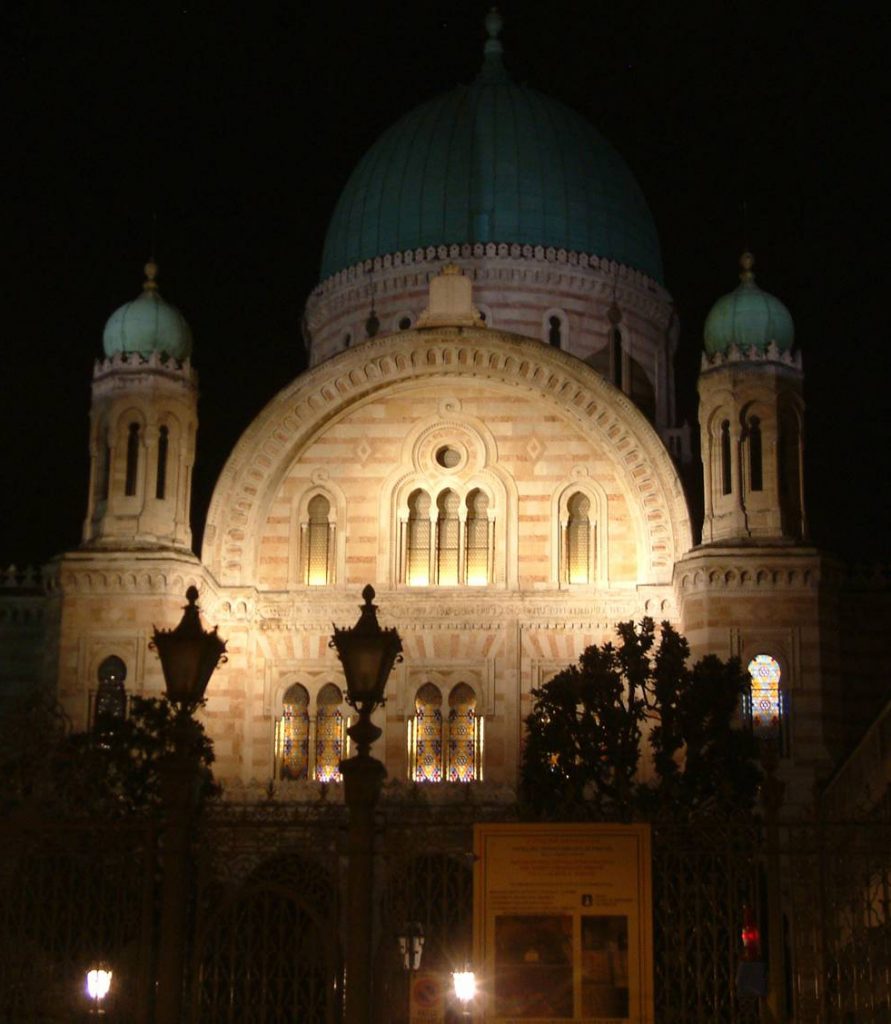
This time, the museum was divided into two sections: the first floor were the furnishings ceremonial use in the synagogue, in the latter have been moved to objects for domestic worship. One room, curated by Renzo Funaro and Liana Funaro, was dedicated to the Holocaust.
The choice of rooms and Museum set up has been done based on museological and conservation considerations. First, it was decided to set it in the Temple which, due to its artistic and historical importance for its monumentality, not only represents the ideal, but it has become an integral part of the course of Jewish History in Florence. The cellars, while beautiful and impressive, but who did not have security policies because of the danger of floods (the last of which, in 1966, came up to two meters in height above the height difference created by the steps outside), have been discarded. It is a relatively small museum, but very impressive.
The collections of the Jewish Museum in Florence are arranged on two floors inside the synagogue.
The first section documents the history of the Jews in Florence over the centuries and their relationship with the city. In the display cases are furniture, textile, and silver, used for ceremonies synagogue between the end of the sixteenth and nineteenth centuries. On the second floor, in a room with a beautiful view on the inside of the temple, there are objects and furnishings of domestic and private devotion, illustrating the highlights of the festivities and religious life of a Jew such as birth, marriage and religious ceremonies. Many of these items are gifts from Jewish families who wanted to testify so their attachment to the Community. Important figures in the community in the knight David Levi, who left his fortune to construct the building of the synagogue, and that of Rabbi Shmuel Zvi Margulies, of Polish origin, who renewed the Italian Rabbinical College and brought it to Florence.
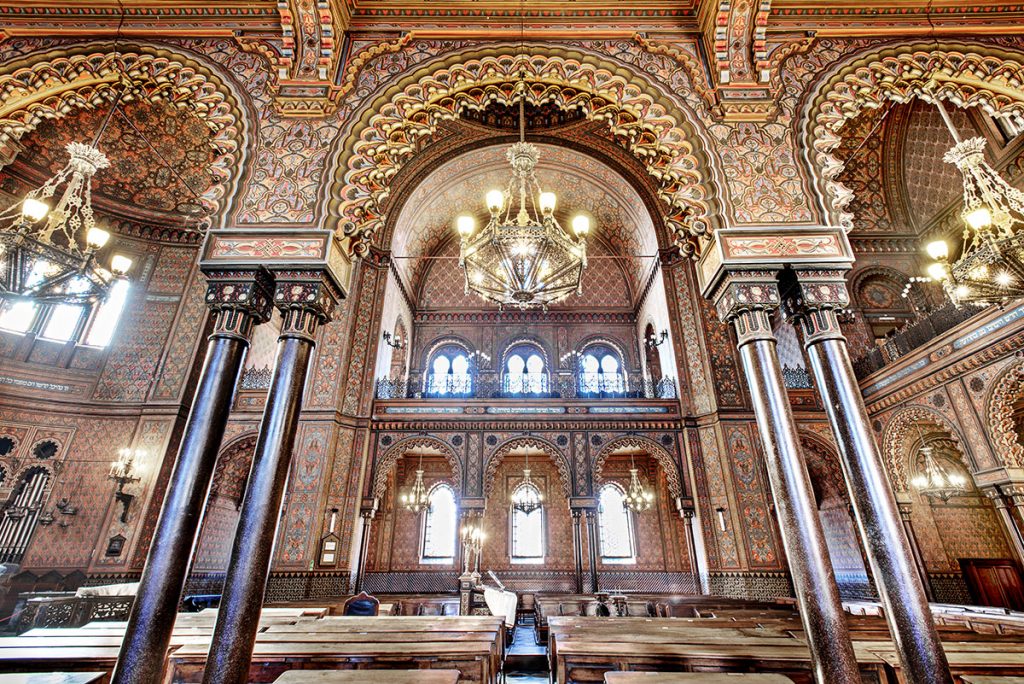
The tour continues with a film that introduces the history of the community in the past two centuries, and a room of Remembrance, where photos and archival records of the life of the Jews in Florence, the newfound equality after the age of ghettos, persecution, to following the racial laws, and deportation to the death camps, to the rebirth and reconstruction after the war, are displayed. A computer room connected to the major Jewish museums in the world and puts the Florentine Jewish life in a very broad context.
The museum consists of a first section, which documents the history of the Jewish Florentine by birth, in 1437, at the time of the founding of the Ghetto, its extension in 1571, and again from 1704 to 1721, until the demolition of the last decade the nineteenth century. This is illustrated through photographs of plants, pictures of the ghetto destroyed and ancient synagogues. Newer images illustrate the story of the design and construction of the Temple. There is also a nod to the other sites of Jewish Florence.
Most of the furnishings are from two synagogues in the Ghetto, that the Italians opened after the creation of the district intended to house arrest by the Jews in 1571, and the Spanish and Levantine, opened a few years later, which objects were added that belonged to the synagogues of Arezzo and Lippiano -communities that are now extinct- and by the synagogue, for which they were specially made. Considerable space is devoted to the ornaments of the Sefer Torah, the scrolls of parchment on which the Hebrew bible is written.
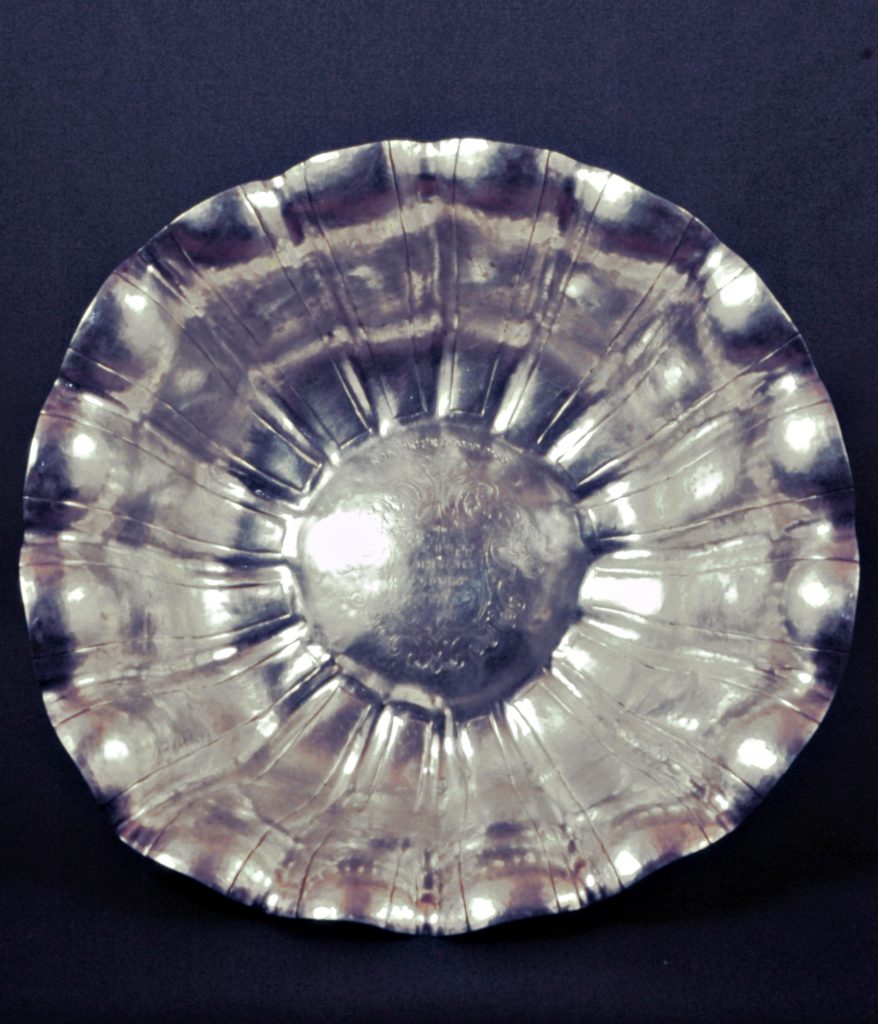
The second part of the museum, opened on the top floor in 2007, is a collection of objects and drawings that summarize the origins of the Jewish community in Florence.
If the Chevalier David Levi is the symbol for excellence of Italian Jewry (illustrated in “the Italian,” a beautiful portrait by Antonio Ciseri in 1854), the core of most influential Jews were of Sephardic origin, originating in Spain, subsequently, the countries of North Africa and the Middle East. Here you can view significant objects that illustrate the most important moments of life and religious holidays, with personal or household furnishings organized by type and according to different occasions. The family has a very important role in the Jewish religion.
Most of the six hundred commandments (mitzvot), that every jew is obliged to follow, are put into practice in daily life. Many of the exhibits in the museum follows the story of an important Florentine family, the Ambron-Errera family, whose history can be witnessed here.
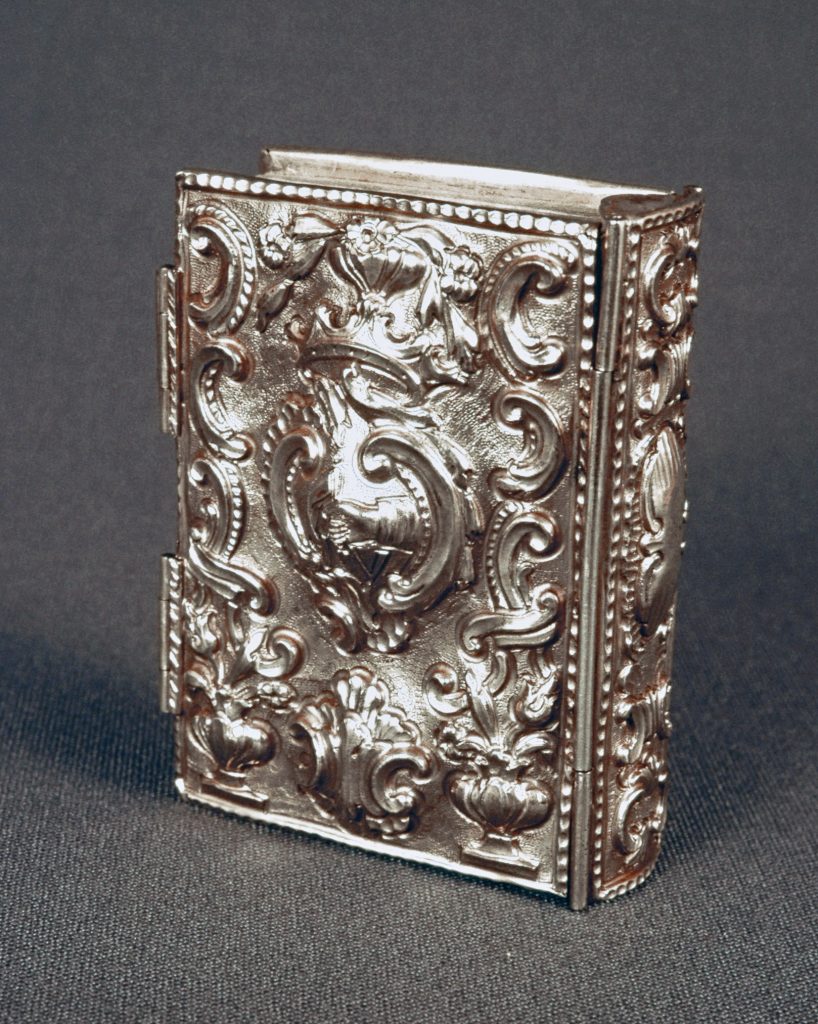
Tempio Maggiore is considered one of the most beautiful synagogues of Europe. How was its style imagined?
The synagogue of Florence was inaugurated in 1882, not longer after the emancipation of the Italian Jews which was proclaimed in 1861 when the Kingdom of Italy was established. The Florence synagogue is one of Europe’s finest examples of a blend of the exotic Moorish style with Arabic and Byzantine elements that characterize the white travertine and pink limestone façade, the copper-cladding on the central and lateral domes (originally they were gilded), and the massive walnut doors. The style is also reflected in the interior decorations and furnishings. The community had been debating about a new synagogue since 1847, but the lack of funds made it impossible to take any concrete steps. Then, in 1868, Cavalier David Levi bequeathed the money for the construction of a “Monumental Temple worthy of Florence”. Two years later, in 1870, three architects, Mariano Falcini, Marco Treves and Vincenco Micheli, were appointed to design the temple.
The location was finally selected after lengthy discussions between the factions that wanted it in the city centre and the group that preferred a site outside. The latter prevailed, and the choice fell on the “Mattonaia” district which, though still within the city walls, was not completely developed, indeed there were still many parks and gardens. The new Temple was opened on 24 October 1882.
Two seemingly opposite, but actually related approaches influenced the design. On the one hand there was the influence of Christian churches and the Old Spanish synagogues, and on the other was desire to express Jewish identity through a distinctive architectural style. The final result, the “child” of nineteenth century Eclecticism, was something new that combined Moorish, Byzantine and Romanesque elements.
How did the Resistance save the Tempio Maggiore from destruction during the war?
In 1938 the Fascist regime enacted racial laws which deprived Jews of work and schooling, among other restrictions and dubbed them an inferior race. In September 1943, the Nazis effectively seized control of a large part of the country. Some Jews saved themselves by fleeing abroad while others went into hiding and were sheltered by the local population. In total, 9,000 Italian Jews were deported or killed, more than 500 of them were from Florence. After the war, the Jewish school was reopened and the Synagogue was renovated.
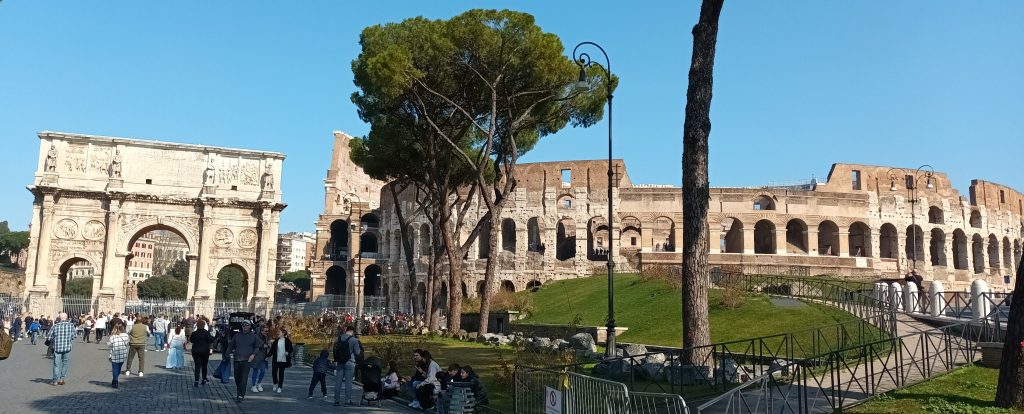
The Jews in the capital of Italy are perhaps the oldest Romans of all. They have settled in the same ancient neighborhoods in the heart of the Eternal City for 2000 years, making their homes in the former ghetto, in Trastevere, and on both sides of the Tiber River where it is crossed by the Ponte Fabricio or Ponte Quattro Capi.
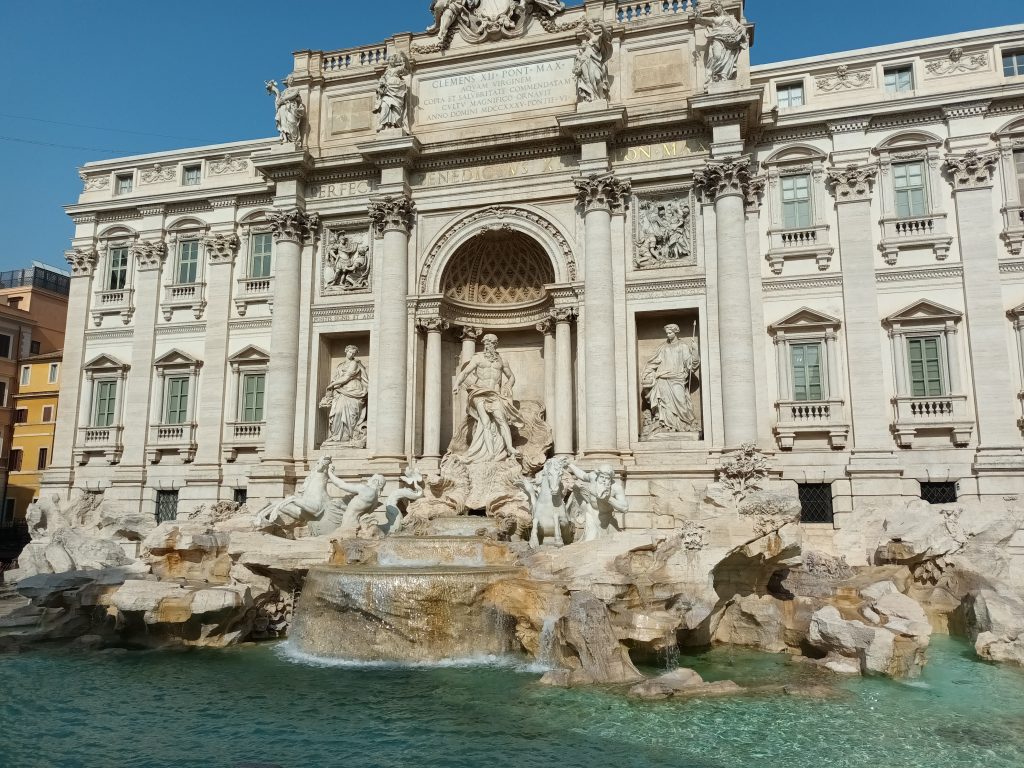
Not only one of the oldest communities of the peninsula, Roman Jewry also represents one of the most important, lively, and deeply rooted communities today, with its own dialect containing Hebrew words and particular culinary tradition. This 2000-year-old homeland, without equal with the exception of Israel, preserves numerous monuments dating from all periods, from the Jewish catacombs or the Ostia Antica Synagogue to the Grand Temple constructed at the beginning of the twentieth century on the location of the former ghetto.
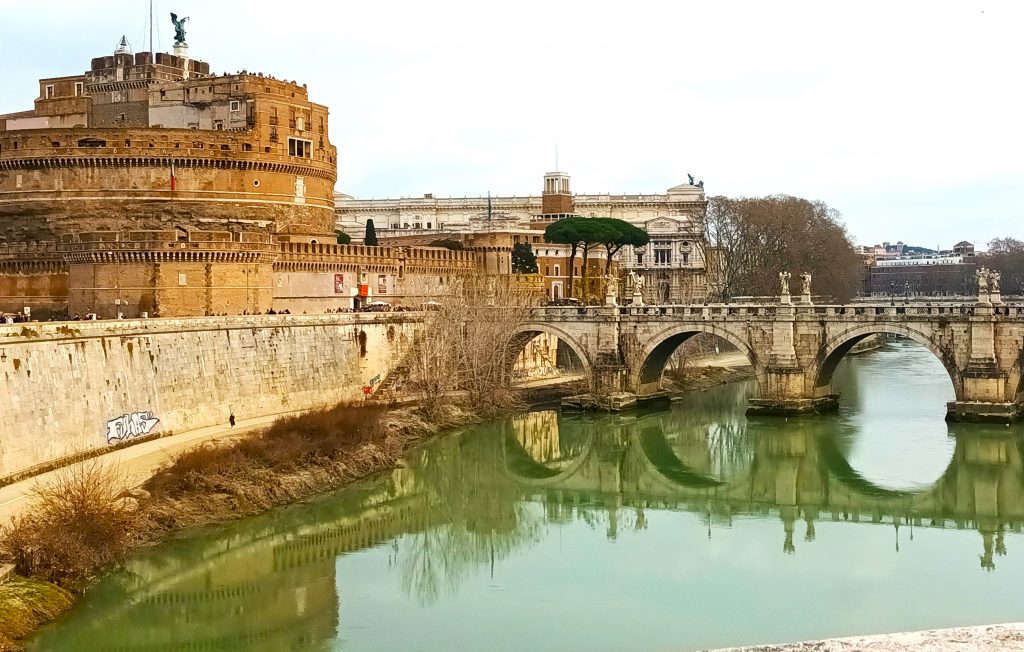
A visit to Jewish Rome merits at least five days. In this Christian capital, the rich remains of Jewish history proper are augmented by many things that attest to papal policy regarding the Jews. Some for the better and most for the worst, these physical records conditioned Jewish life in Rome -if not in the west as a whole.
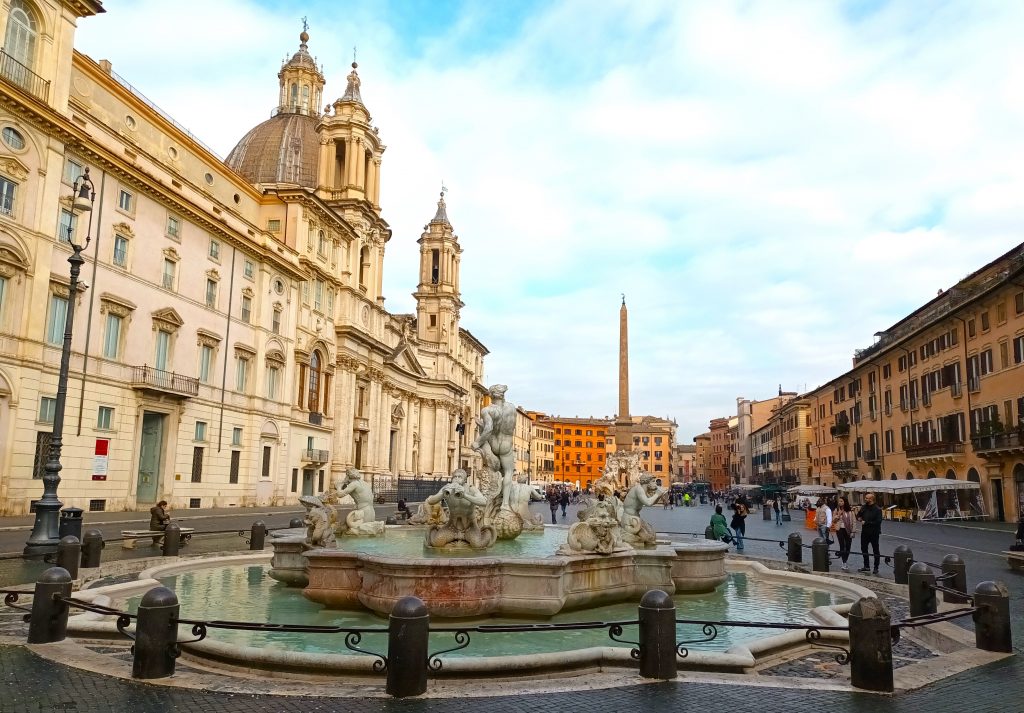
Certain Jewish dishes still make up part of Roman gastronomy and appear on the menus of numerous restaurants. A case in point is carcioffi all giudea (artichokes Jewish style): the artichoke is fried in oil until the small leaves are marvelously crispy. The traditional cuisine of the Eternal City’s lower classes is based on inexpensive ingredients, lower quality cuts of meat, and lots of vegetables. These characteristics are more markedly noticeable in dishes typical of the Jews in the capital, confined for three centuries in the ghetto.
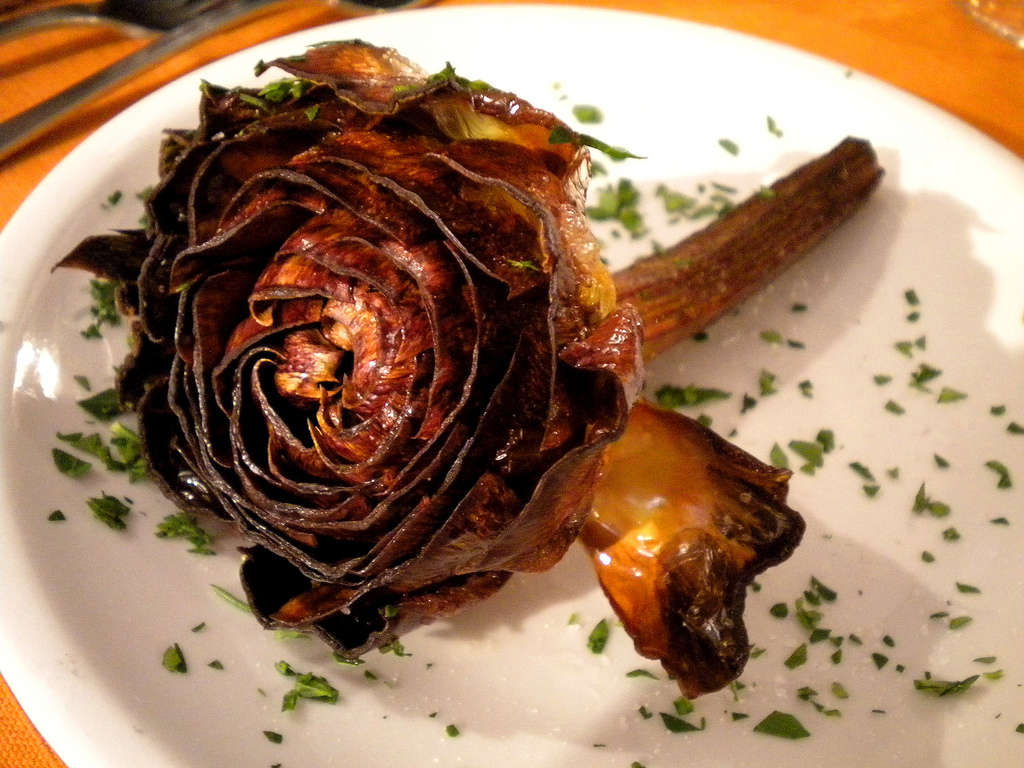
Many recipes, notably for fish, are agro-dolci (bitter sweet) with sugar, vinegar, pine nuts, and raisins, representing a tradition dating back to the Roman period. Fried dishes make up the lion’s share of typical Roman cooking; aside from the artichokes already mentioned, these include fiori di zucchine (fried zucchini blossoms stuffed with mozzarella and anchovies) or the fritto di baccalà (salt cod croquette). The pasta and soup recipes are hearty, stick-to-the-ribs dishes like the traditional ceci e pennerelli (chickpeas and leftover meat morsels) simmered on a low fire for three hours.
The former ghetto
The quarter where the Jews were forced to reside for three centuries until 1870 is at the center of the Italian capital, between the Largo Argentina, the Capitoline, and the Tiber. Almost nothing remains of the stifling, cramped streets of the old ghetto, which was destroyed, sanitized, and reconstructed in the first years of the twentieth century. The neighboring narrow streets, such as Via della Reginella or the beginning of Via Sant’Angelo in Pescheria, give an idea of what the lives of the Jews in the city were like for three hundred years.
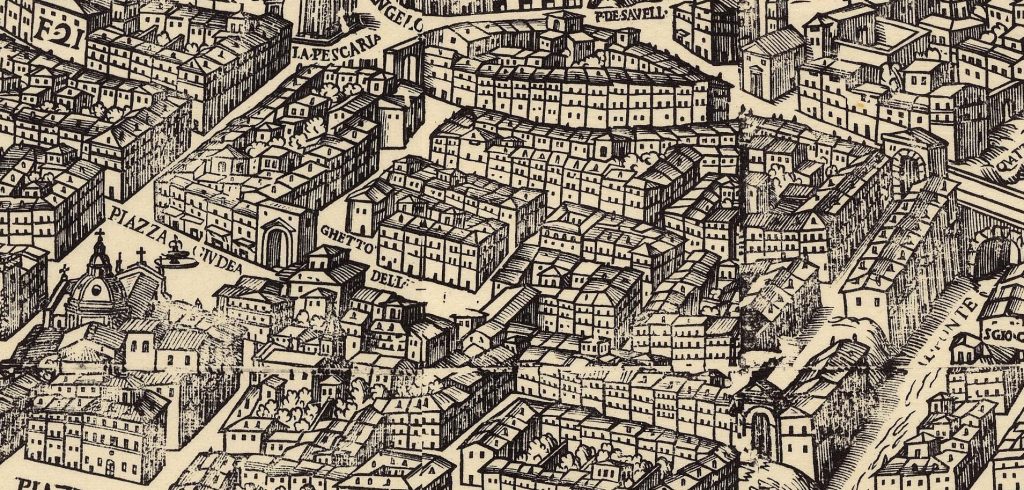
Portico d’Ottavia, constructed by Cecilius Metella in 146 B.C.E. remains one of the symbolic places of the former Roman ghetto. The remains of the fluted columns rise from among the enormous paving stones surrounding the large Temple of Juno on Via del Portico d’Ottavia.
Restaurants set up their sidewalk tables from which the regulars take in the fresh air. This portal marks one of the five former entrances to this forced residential quarter. It was customarily barred at night with a great iron chain. The Piazza delle Cinque Scole surrounds a fountain by Giacomo della Porta (erected in 1591, rebuilt in 1930) commemorating the five synagogues of the former ghetto (Catalana, Castigliana, Tempio, Siciliana, and Nova).
These were all located in a single building that has since vanished but which was located on the present-day square at number 37. The current building is constructed on the site of the former Platea Judea, or “grand square”, divided into two halves by the ghetto wall, which was the intersection of two ancient thoroughfares of the Jewish quarter, Via Pescaria and Via Rua.
It was in the Platea Judea, at once inside and outside the ghetto, that the economic activities permitted to the Jews of Rome took place. These activities included trade in old clothing, used goods, and some artisanal work. In periods of tolerance these stalls were permitted to open on Sunday and the villagers who had come to the city and did not want to lose a day would come her to make their purchases.
The Piazza delle Cinque Scole, with its many shops, remains the heart of the quarter. Be sure not to miss a pasticceria called Boccione, which sells cakes typical of the Roman-Jewish tradition such as its extraordinary cheesecake made from ricotta. Menorah , a nearby bookstore, is well stocked with both old and new books on Judaism in Italian, French and English.
Heading back up this narrow, shadowy street toward the Piazza Mattei, with its magnificent “tortoise” fountain constructed in 1581-84, it is possible to get an idea of what the ghetto was like back in those ancient times. The blocks of buildings situated between Via Reginella and Via Sant’Ambrogio became part of the Jewish quarter when Pope Leon XII designed to enlarge it a little in 1823.
Completely on the other side of the former Jewish quarter, and heading in the direction of the Tiber and the Grand Temple, stands the small church of San Gregorio all Divina Pietà, constructed in the eighteenth century opposite one of the ghetto gates. Its facade features an inscription in Latin and Hebrew citing the prophet Isaiah speaking “to those rebellious people who act according to ideas in a way which isn’t good, to those people who continually provoke my anger”. This was one of the places where each Sunday, representatives of the Jewish community were obliged to listen to the Catholic Mass.
The Grand Temple
The zinc dome of the Grand Temple rises 151 feet above the street and can be seen from anywhere in Rome among the other baroque domes of the many churches in the Eternal City.
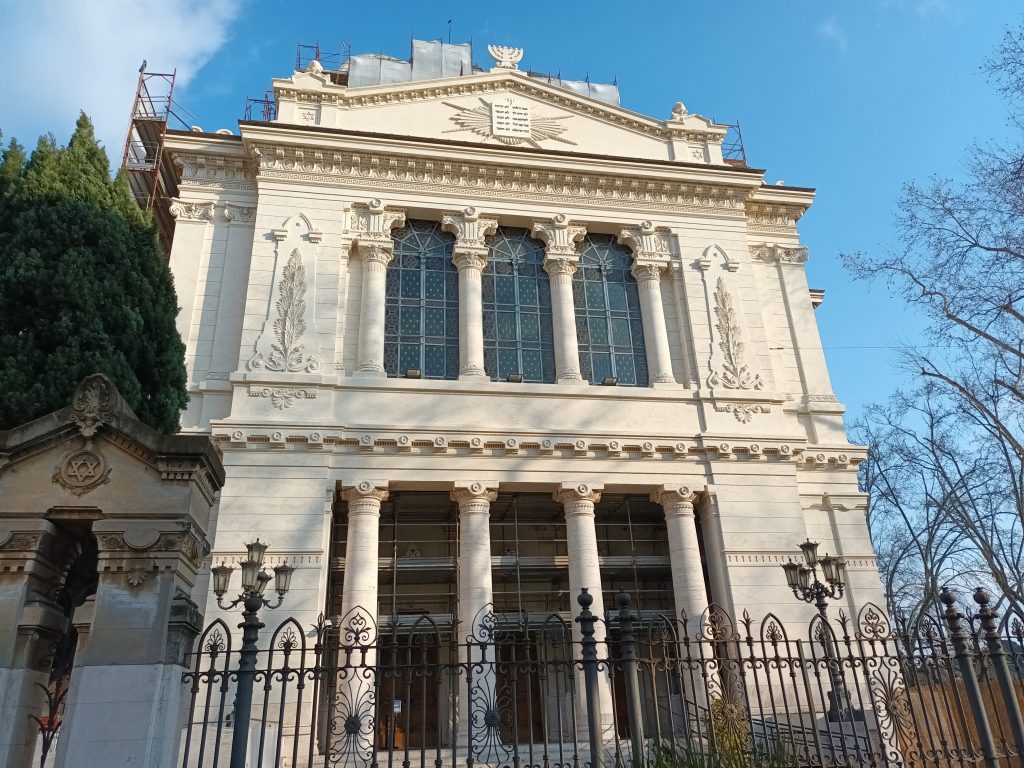
It is easily recognized by its square shape. Constructed between 1901 and 1904, hardly more than thirty years after the closing of the ghetto, the Grand Temple celebrates the Italian Jews and their extraordinary integration. The style of the Temple is oriental, though some have ironically described it as neo-Babylonian.
“Between the Capitoline and the Janiculum, between the monument to Victor Emmanuel and that of Garibaldi, the two great masters of our Italy, stands this majestic temple surrounded by the pure, free sunshine that signals liberty ad love”, declared Angelo Sereni, president of the Jewish community, whose perhaps florid rhetoric on the occasion of the building’s opening nevertheless expressed the state of mind of his fellow believers at the time.

Surrounded by a lovely garden with palm trees, the building was constructed on a large, 32000 square foot piece of land made available by the demolition of the former ghetto, which had been completely razed shorty before and replaced with the large liberty-style buildings. Since at the time there were no licensed Jewish architects, its two designers, Vincenzo Costa and Osvaldo Armani, were non-Jews.
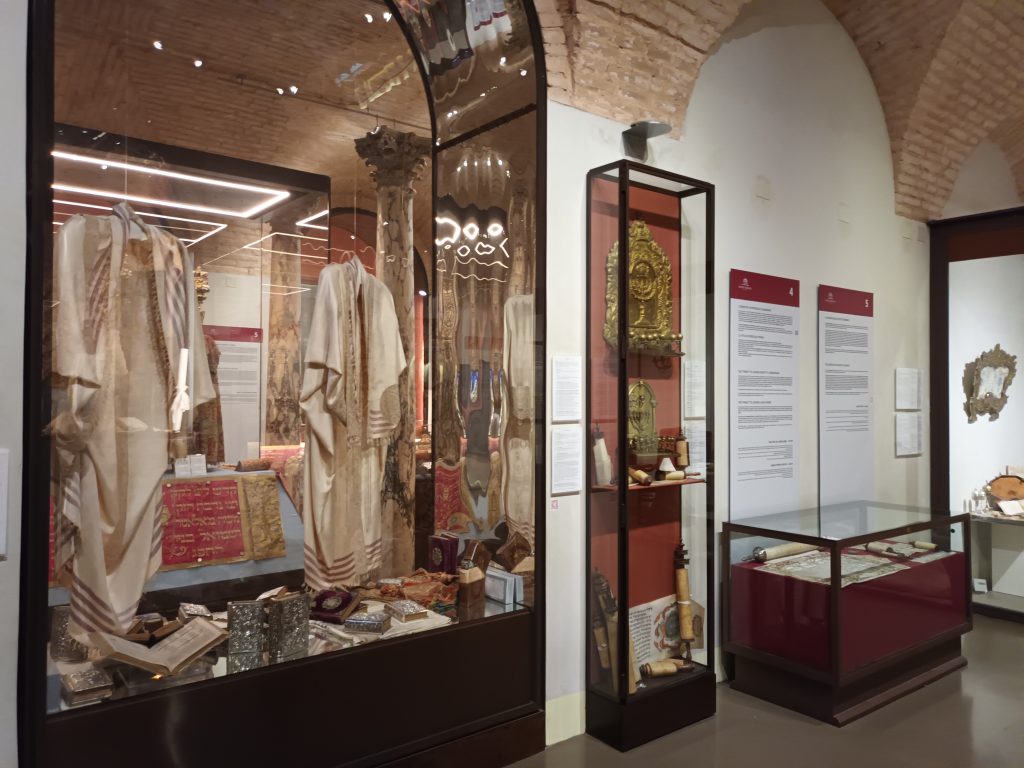
The facade is adorned wit palms and has three large windows. Near its top, the building features a tympanum decorated with the Tablets of the Law, above which stands a seven-branched menorah. The interior of the main hall is sumptuous, with marble columns in an oriental style. The aron, above the steps of a platform at the end of the nave, evokes the altar of a church, like many of the synagogues constructed just after the Jews’ emancipation. Abundant light pours in through the large liberty-style windows. The interior of the large dome is decorated with oriental-style paintings (palms and starry sky) by Annibale Brugnoli and Domenico Bruschi. In the halls of the Grand Temple many of the objects historically used in the five synagogues of the former ghetto have been assembled and are on display.
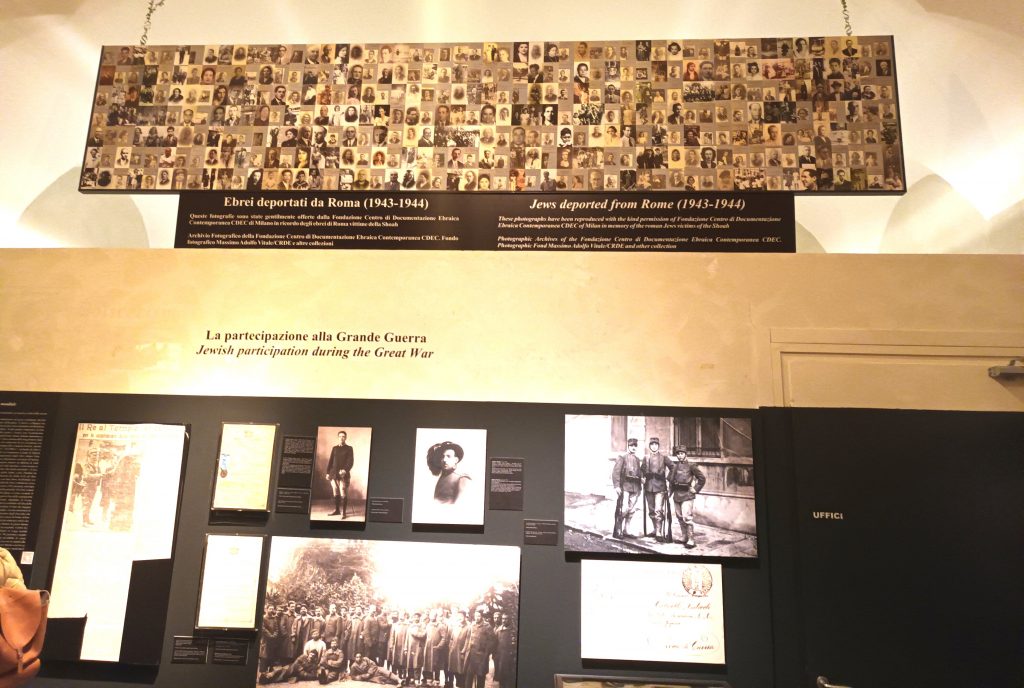
Especially noteworthy are the magnificent marble-columned aronot from the Siciliana Synagogue of 1586 and that of the Castigliana Synagogue of 1642. The Spanish Temple, occupying since 1932 a large part of the Grand Temple, perpetuates the tradition of Jews who came from the Iberian Peninsula, while the majority of the services are now in Italian. The hall with its aron facing the tevah evokes the atmosphere of the former Roman synagogue that has since disappeared. The Jewish Museum occupies one of the wings of the Grand Temple. Numerous silver religious objects, circumcision chairs, candelabras, fabrics, and manuscripts, including three volumes of poems in Judeo-Roman by Crescenzo del Monte (1868-1935), are on display in two vast rooms.
Tiber Island and Trastevere
The only island in the Tiber River as it snakes through Rome, Tiber Island was consecrated by the ancient Romans to Aesculapius, the god of medicine. Since the Middle Ages, it has been the site of the hospices or hospitals. The island links the Jewish quarter on either side of the river; thus in the eleventh century both the Ponte Fabricio and the Ponte Quattro Capi were alternately called the Pons Judeorum. In 1870 the confraternities of the former ghetto settled here in order to create aid organizations for the newly emancipated Jews. One one side of the island’s central street facing upstream stand the Israelite hospital and the Panzieri-Fatucci oratory, called the Tempio dei Giovanni. The nineteenth century wooden aron of the oratory originally came from the five synagogues. The brightly colored stained-glass windows representing Jewish holidays were completed in 1988.

One the other side of the river is the Trastevere (literally, “beyond the Tevere [Tiber]”) district. In his travel journals during a trip to Italy in the twelfth century, Benjamin de Tudela, a Jew from Navarre, recounts that numerous Jews lived here during imperial Rome and during the medieval period. Traces of this past that survived the imprisonment of the Jews in the ghetto in 1555 are rare. At 14 Vicolo de l’Atleta stands a small brick building with two arches. A Hebrew inscription on a column of the loggia and a well in the courtyard indicate that it probably functioned as a synagogue in the Middle Ages.
The former cemetery was in the area of Porta Portese, where the flea market is held every Sunday. After 1870, a large part of Roman-Jewish life once again moved to the Trastevere district, where today the majority of the community’s institutions are concentrated, including Il Pittigliani , the former Jewish orphanage, which has been transformed into a cultural center with a kosher snack bar and library possessing numerous documents on Jewish life in the capital.
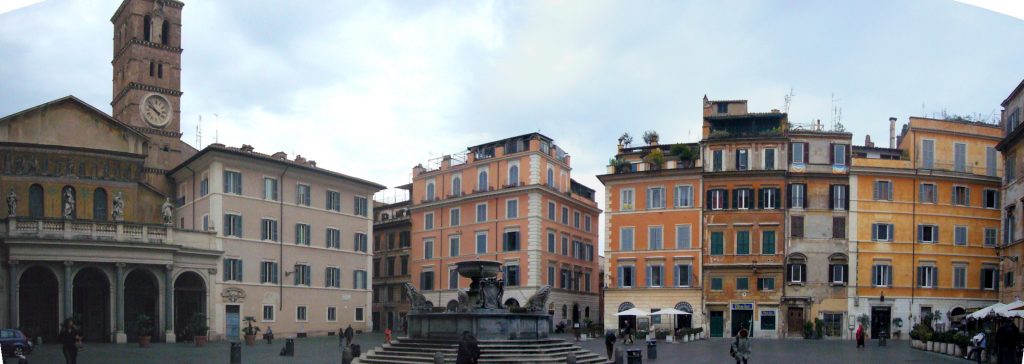
The headquarters if the Union of the Italian Hebrew Communities is located on the other side of Viale Trastevere, the large avenue dividing the district. It includes a documentation center on Jewish heritage and, a little further along, at number 14 and 12, the Hebrew day care and primary school respectively. The Roman poets and Folklore Museum merits a brief visit to see the three paintings by Ettore Roesler Franz (1845-1907) depicting scenes of everyday life in the ghetto.
The Forum
The center of power under the republic and later the empire was the Fori Imperiali, located between the Piazza Venezia and the Coliseum. In the Forum are also located tow monuments directly tied to Jewish history.
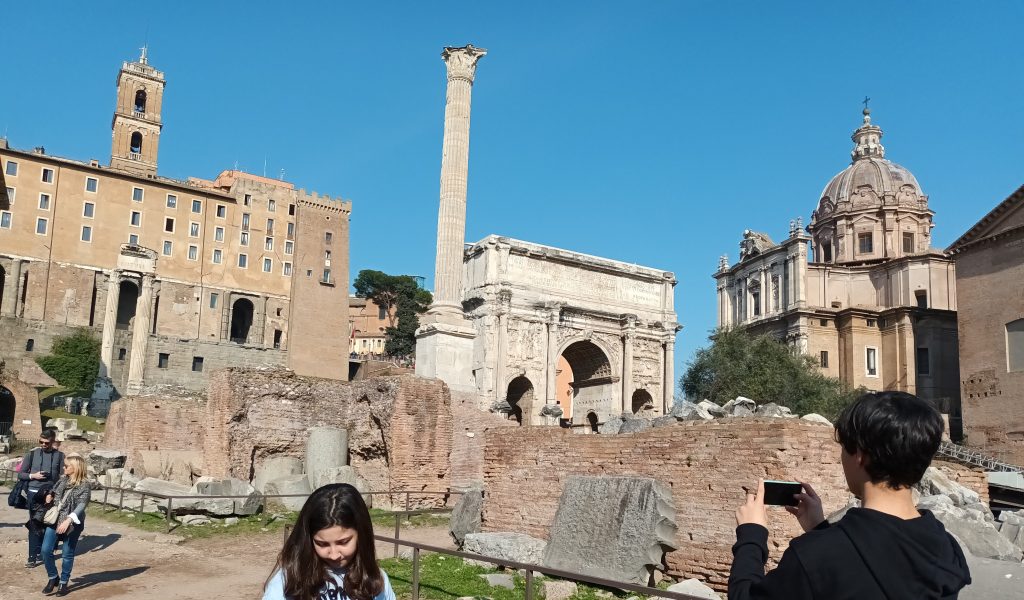
The Arch of Titus celebrates the emperor’s victory and that of his father, Vespasian, over the Jewish revolt in 70 C.E. Constructed after Titus’s death in 81 C.E., the interior of the arch contains two large bas-reliefs illustrating the triumphal procession loaded with booty taken from the Temple of Solomon, including notably a seven-armed candelabra and silver horns. A symbol of defeat and the Diaspora, the Arch of Titus has naturally been an humiliation for Roman Jews. When the Nation of Israel was proclaimed in 1948, “they paraded under the arch in the opposite direction of Titus’s triumphal march”, relate Bice Migliau and Michaela Procaccia in their book on travel in Jewish Rome and Latium.

At the other end of the Forum, heading toward the Capitoline, stands the ancient Mammertine prison with its lugubrious underground cells where the enemies of Rome were imprisoned and executed after being led in shame through the city behind the chariot of the victor. A plaque recalls this was the fate one such prisoner, Simon Ghiora, a defender of Jerusale; in 70 C.E.
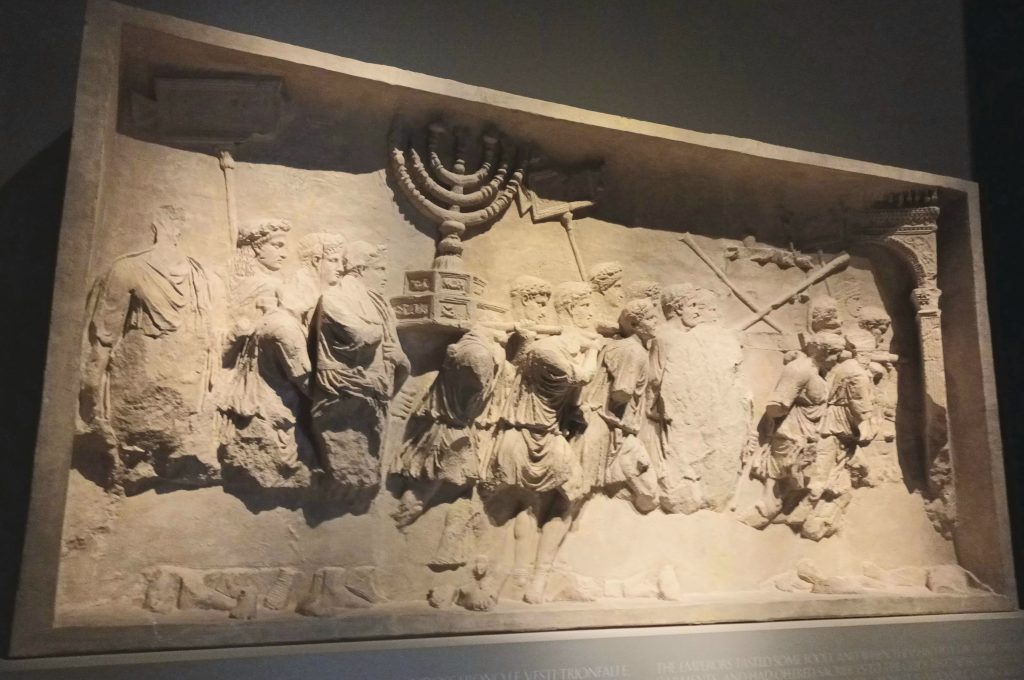
Leaving the Forum by the main entrance and going back up Via Cavour, you will find the Basilica San Pietro in Vincoli at the top of a large staircase. Originally constructed to hold the chains of St. Peter in the fifth century, it was altered at the beginning of the sixteenth century by Cardinal della Rovere, the future Pope Julius II, to be a funerary monument. Here is located the celebrated statue of Moses by Michelangelo. Powerful and admonishing, the prophet, seated holding the Tablets of the Law, is represented at the moment when he has just descended from Mount Sinai and sees the idolatry of his people.
The Jewish catacombs
The catacombs were constructed in the first years of the Christian era by Jews influenced by the Roman custom of entombing the dead in deep stone chambers. Six sites have ben discovered around Rome. The first, Monteverdi, close to the Janiculum, was discovered in the seventeenth century. Only two Jewish catacombs are open today, that of the Villa Tortonia on Via Nomentana and that of Vigna Randanini, close to Via Appia Antica. The arrangement of the catacombs in galleries scarcely 3 ft. high x 7-9 ft. differs little from the Christian catacombs.

Considered as religiously impure place, the catacombs were not used by Jews for liturgical celebrations other than the burials”, writes Attilio Milano in his History of the Italian Jews. The walls are decorated with inscriptions, most often in Greek, and with such symbols as the menorah, the Scrolls of the Law, the shofroth, and palm branches.
Two rooms of the Vigna Randanini galleries are decorated with secular motifs (eagles, peacocks, griffins) and on the ceilings, a winged Victory and a personification of Fortune are represented. Some analysts interpret these figures as a result of the influence of the surrounding society; other emphasize that these catacombs were probably first pagan tombs and only later integrated into the Jewish burial complex.
Memorial to the Adreatine Mass Graves
On via Adreatina, just beyond its intersection with Via delle Sette Chiese and near Via Appia Antica, stands the Memorial to the Adreatine Mass Graves. On 24 March 1944 the SS troops of Herbert Kappler massacred on this spot 335 hostages, 70 of which were Jews, This mass execution was in retribution for the thirty-two German soldiers who were victims of the Resistance. The monument, The Martyrs, was sculpted in 1950 by Francesco Coccia. A cross and a Star of David rise above the wall of the burial plot.
Ostia
The excavations at Ostia (Ostia Antica), the great port of imperial Rome, bear impressive witness to Roman urbanism and deserve a visit to see the synagogue discovered there in 1962 when ground was broken for a new highway to Fiumicino Airport. The synagogue borders the northeastern edge of the archaeological zone, just beyond the Porta Marina. Its initial construction dates back to the first half of the first century C.E. and it was rebuilt several times until the fourth century. The synagogue complex includes a prayer hall, study room, and an oven for baking unleavened bread. There are three entrances: one for men, one for women, and the entrance to the mikvah, whose remains are still visible. One can still see the aron flanked by two columns whose capitals support the remains of a frieze decorated with menorot, palm branches and shofroth. There is a small podium at the opposite end of the room that served as the bimah.
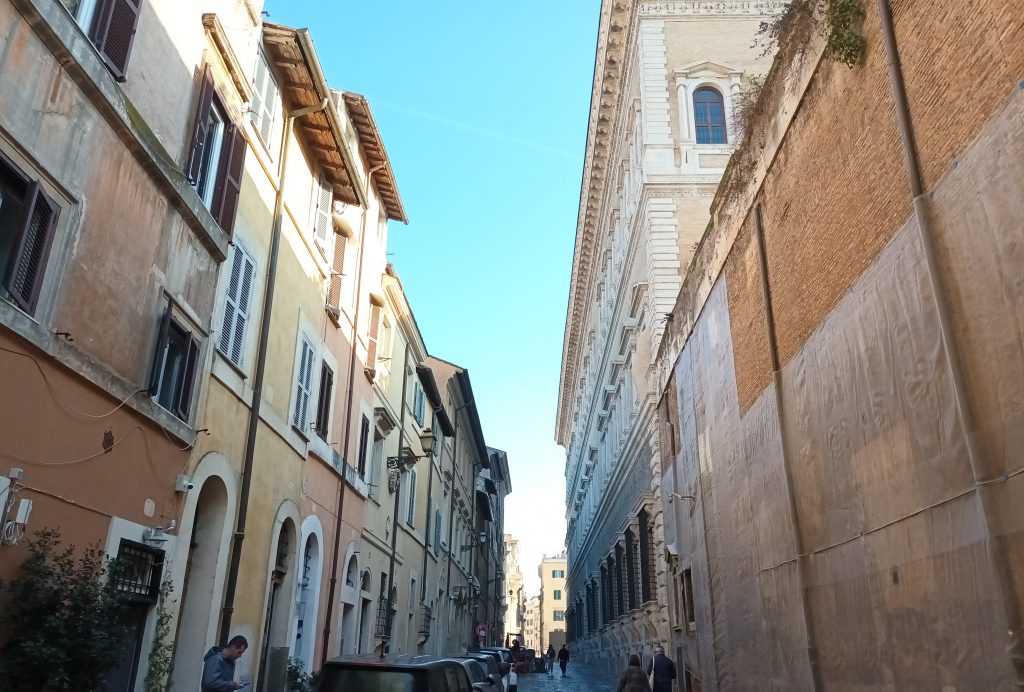
The Archaeological Museum features several lovely lamps decorated with seven-arm candelabras.
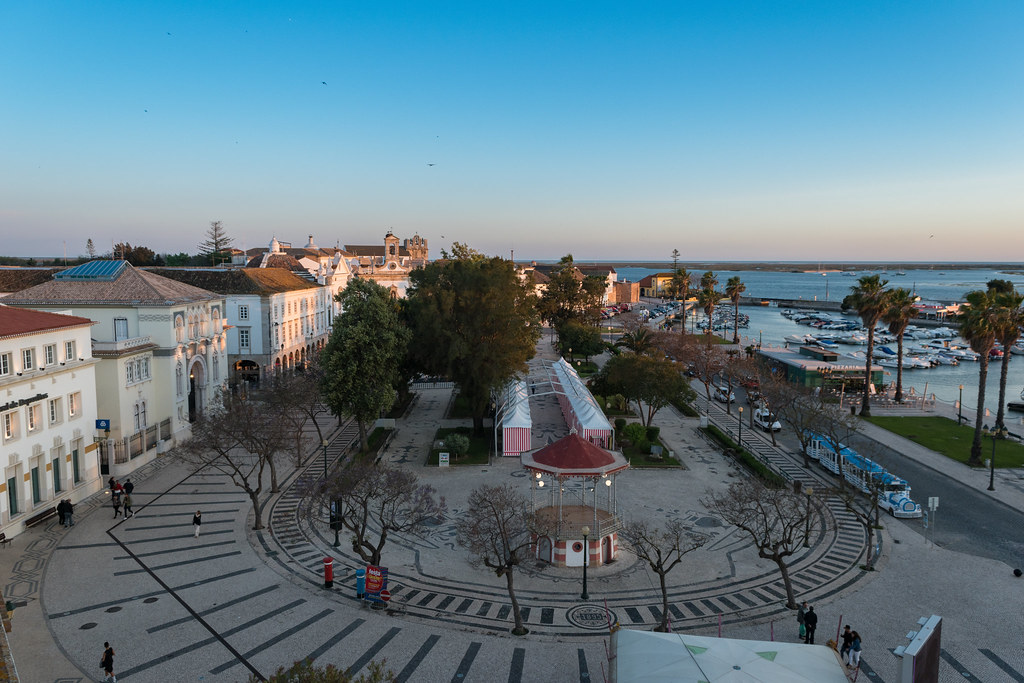
Capital of the Algarve region in southern Portugal, the city of Faro was home to a large Jewish community, expelled in 1497. A number of them continued to live there as conversos. Jews did not resettle “officially” in the city until the 19th century.
In the fifteenth century, the time of its peak, Faro was a well-known center of Hebrew printing. In 1481, Samuel Porteira printed the first book in the history of Portugal: an edition of the Pentateuch in Hebrew. And not just Jewish, since the publication in 1487 of a Torah in Hebrew by Samuel Gacon was probably one of the first Portuguese imprints.
Most of the Jews who settled in Faro at this time came from Morocco and Gibraltar. They settled mainly in the Rua de Santo Antonio, contributing to the district’s economic development.
Around 1830, the Jewish community built two synagogues and a cemetery. The Jewish Cemetery of Faro has 107 graves. It was in service between 1838 and 1932. The cemetery is included in the list of places of interest in the Portuguese Register of Historical Monuments. On the portal of the entrance is the date 5638 (1878), which is believed to correspond to the date of construction of the cemetery wall. The cemetery fell into decline in the 1980s. Isaac Bitton, a native of Lisbon, founded in 1984 the restoration fund of the cemetery of Faro, which allowed its renovation in 1992-3. Inside the Jewish cemetery you will find a small museum dedicated to Jewish traditions, as well as a synagogue.
In addition to the cemetery, we know that in the 1850s there was a synagogue. At the beginning of the 20th century, there were about 50 families in the community. In the 1970s, there were only 5 Jews left in the entire region. Maroon descendants of the Faro community are found in Bayonne, London, Dublin, and as far as Jamaica.
Sources : Encyclopaedia Judaica
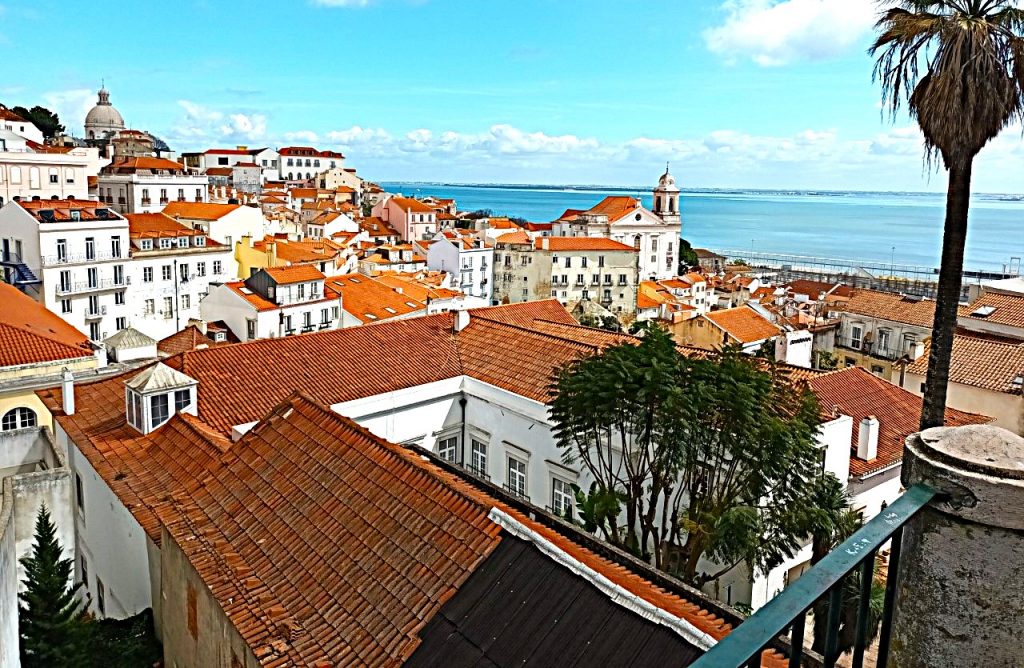
If Jews had to flee the city in the 16th century, Lisbon was also the city that welcomed Jews fleeing the Spanish Inquisition or the transit of Jews fleeing Nazism to the American continent. But since the turn of the 21st century it has been experiencing a renaissance of its Jewish life.
In December 2024, a ceremony was held in Lisbon in memory of the boat Serpa Pinto, which transported many Jewish refugees during the war. The ship made many round trips, financed by the JDC, to rescue Jews and enable them to reach the United States or Central and South American countries, sometimes opening their doors. A plaque was unveiled in the presence of Portuguese political representatives, including the mayor of Lisbon, Carlos Moedas, and Rabbi Eli Rosenfeld. Among its passengers were the famous Rabbi Menachem Schneerson and his wife Chaya Mushka, who fled France in 1941 to reach New York.
On one side there is the sea and on the other the river. Frequent trips, recent returns, telling a thousand years of fascinating Jewish history, mainly in one district, Alfama and others that we take you to visit for two and a half magical days in Lisbon…
Day 1 Alfama
In Lisbon’s main square, Sao Domingos, is a church and a theatre. The church where the massacre of converted Jews began in 1506. Two thousand victims in three days. A monument in the square commemorates this tragedy today. And next to it a Wall of Tolerance, which celebrates this value in all languages. The great Dona Maria theatre was for three centuries the seat of the Inquisition. But for half a century, culture and sharing have been taking precedence in Portugal over religious withdrawal.

Sharing steps between citizens and tourists as you walk down the sublime rua Agusta to its Triumphal Arch, where since 2013 you can climb up to enjoy a magnificent view. And a little further down, the equally beautiful Praça de Comerio with its saffron yellow buildings.
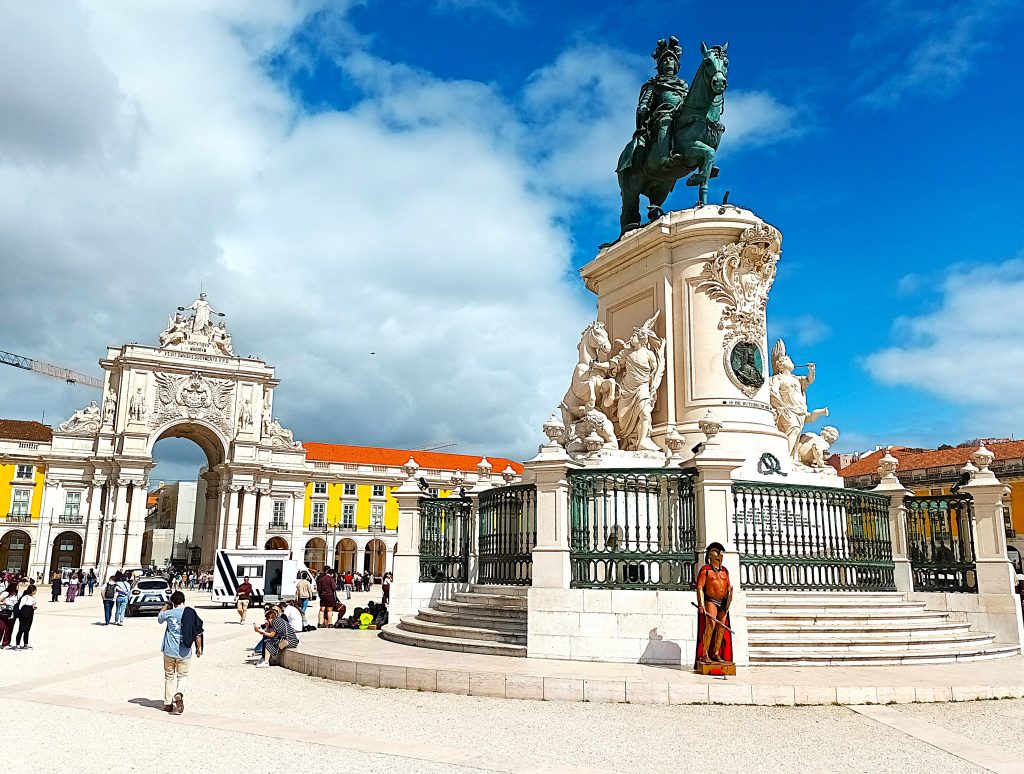
Then, we go a little east of the Alfama district, towards the rua da Judiaria. Before the forced conversion (1497), Lisbon had 3 judiarias, Jewish quarters, not ghettos, located in the middle of the old city. On your way there, you must pass by two interesting places.
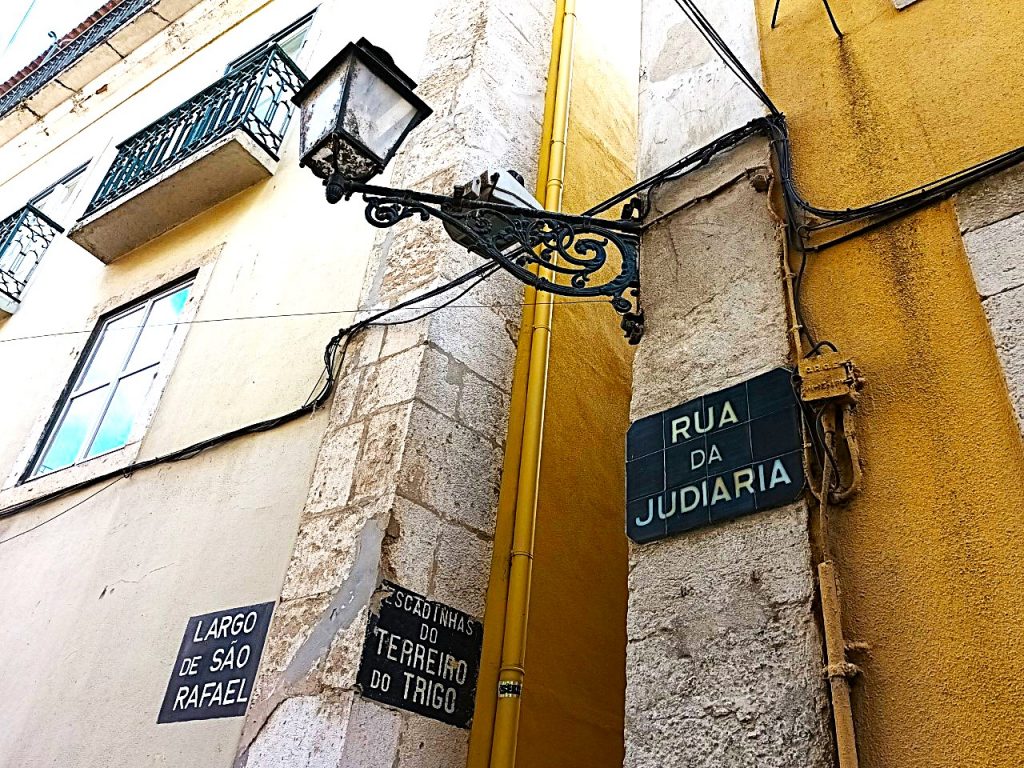
First of all, a house that bears witness to this period, with stones cut into diamond points. Today it houses the foundation of the author José Saramago, who has dedicated a book to the Inquisition. The second place to visit is the Sé Cathedral, the oldest religious monument in Lisbon. The interior is particularly amazing with its Romanesque, Gothic, Arab and Baroque artistic influences.
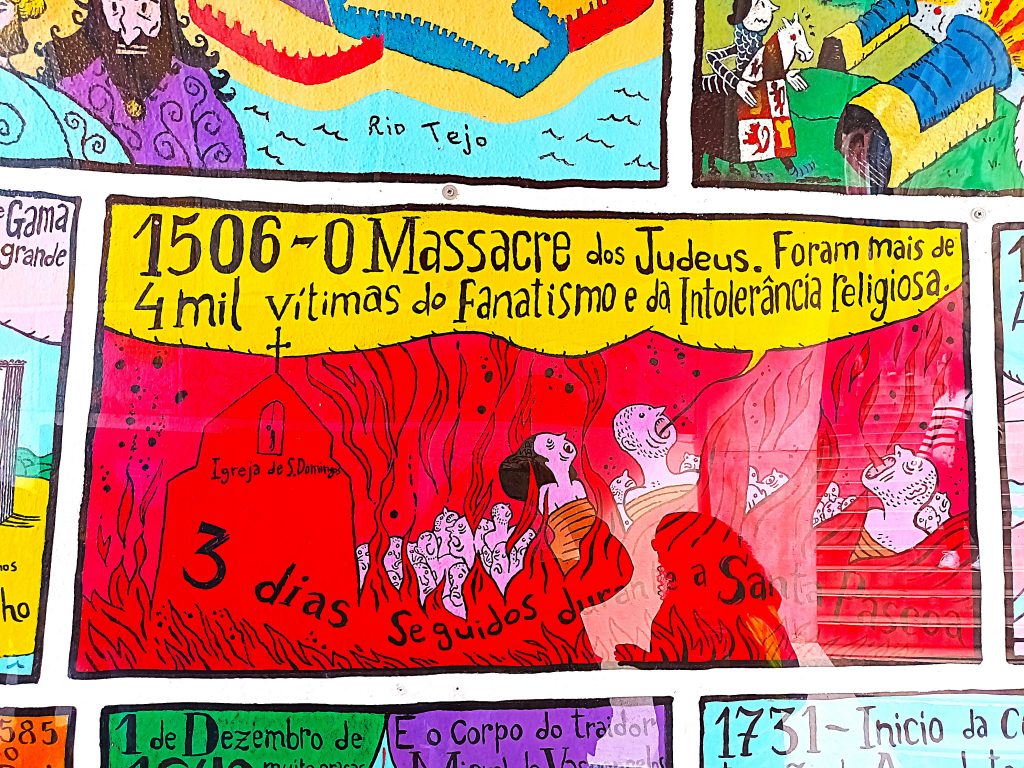
During the forced conversion, the synagogues were reallocated or demolished. The same applies to the shops supplying kosher or cult products. There are therefore few traces of what the old quarter was like. Nevertheless, Portugal continues its efforts to enhance the Jewish cultural heritage today. This has not prevented some slight historical errors.
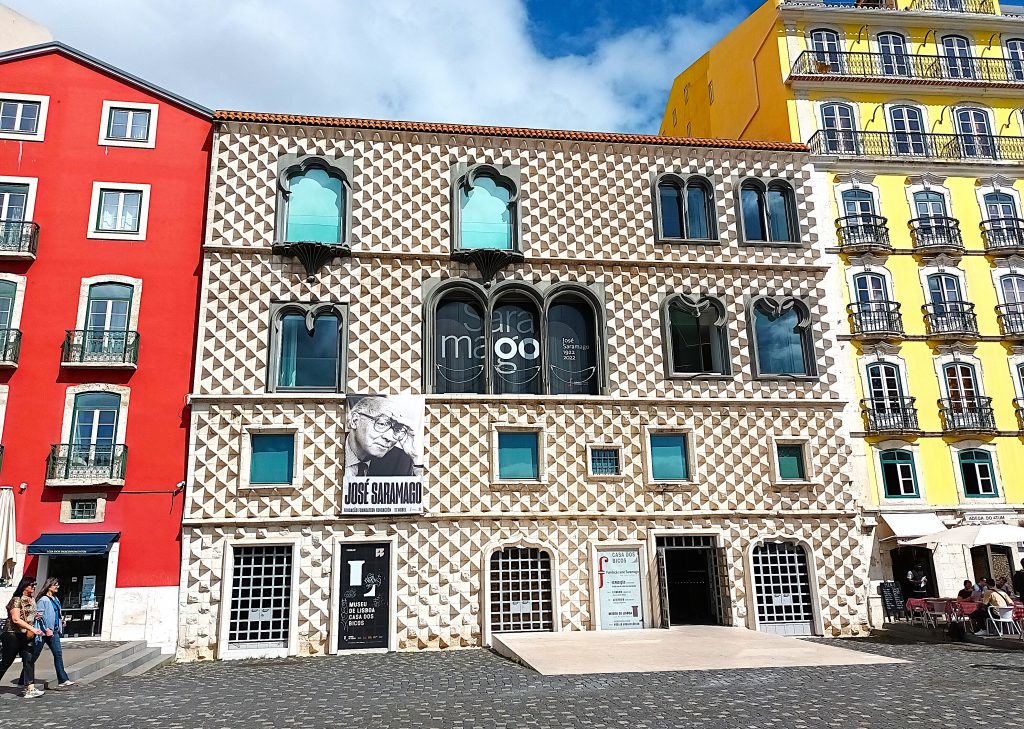
For example, the large synagogue, located in the middle of the district, was given to a Catholic religious order. The building was demolished in 1755 and the order moved to another church. Thus, a small error of tourist indication, a plaque on the Manuelian portal, symbol of the Portuguese renaissance, indicates the former location of the synagogue in this second place where the Christian order was reinstalled.
The Alfama district is also the cradle of fado, with its museum, which we recommend you visit. For its comprehensive permanent exhibition, but also for the amazing inspirations of this music. In 2012, during a European tour, Leonard Cohen told a Portuguese journalist that he had always loved fado and that one of the first albums he bought was by Amalia Rodrigues. A visit to Alfama is all the more urgent as few traces of these references, both Jewish and artistic, remain since the massive urbanisation encouraged by foreign investors, notably French. The small streets and stalls with local sardine dishes at two euros have been replaced by avenues and large restaurants catering to new demands and airbnb vacations.
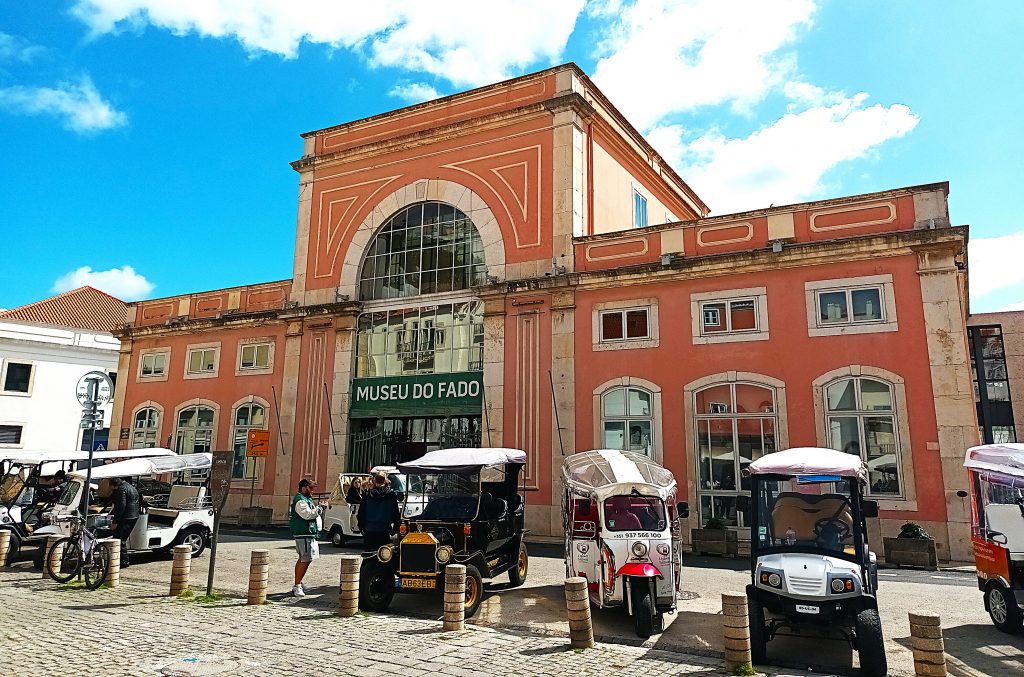
Heading northwest, we recommend a visit to another museum, the one dedicated to decorative arts. This former palace, bought by the collector Ricardo do Espirito Santo Silva, now presents many local and international works. A variety in space and time, with different periods in the spotlight. And to close the day, the inevitable Saint George’s Castle, located near the museum. Formerly a witness to a violent history, it will motivate you today with its unbeatable view and its sublime walks.
For dinner, we recommend the Barrio de Avillez. A place that offers several atmospheres, tavern, pizzeria, bar, where you can savour the freshness of the sea.
Day 2 Campolide and Alcantara
On this first part of the day, we invite you to visit Lisbon’s two existing synagogues and other places of interest along the three-kilometre route that links them.
The Ohel Jacob Synagogue was founded in 1934 by Ashkenazi Jews from Central Europe. A time when the majority of Portuguese Jews were Sephardic. The synagogue also has a small museum presenting its history.

You then walk down av. dos Combatentes to the Fundaçao Museu Calouste Gulbenkian. Many works of art are presented in this place, which has been a symbol of curiosity and commitment since it was created during the Salazar era. A visit that continues with its gardens, which also host major cultural events.
Just 200 metres to the south, taking the Marques de Fronteira street, the open-air visit continues at the Parque Eduardo VII. Then cross the Marques de Pombal square to the south of the park by taking rua Braamcamp to arrive on calle Alexander Herculano. This street is named after the historian who wrote about Jewish life.
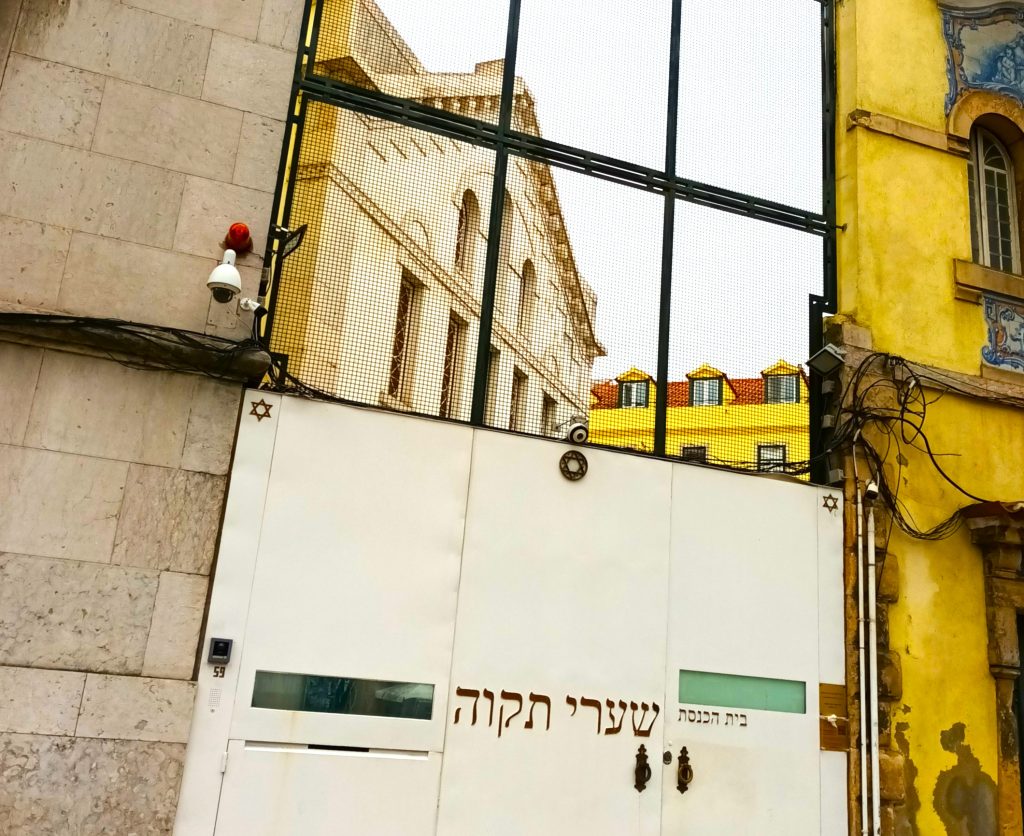
On this street you’ll find the Shaare Tikva synagogue. It was opened in 1904, following the abolition of the Inquisition and the timid return of Jews from Gibraltar and North Africa. A discreet synagogue in conformity with the state’s will.
After the gardens, the beaches for this day which will make you doubt, like the actor Jean-Paul Belmondo facing Jean Gabin in the movie “A Monkey in Winter”, on the welcome that a monument reserves for the surrounding nature or the opposite. But before collecting alcoholic shellfish, head to Alcantara, a 10-minute drive or 20-minute bus ride from the synagogue.
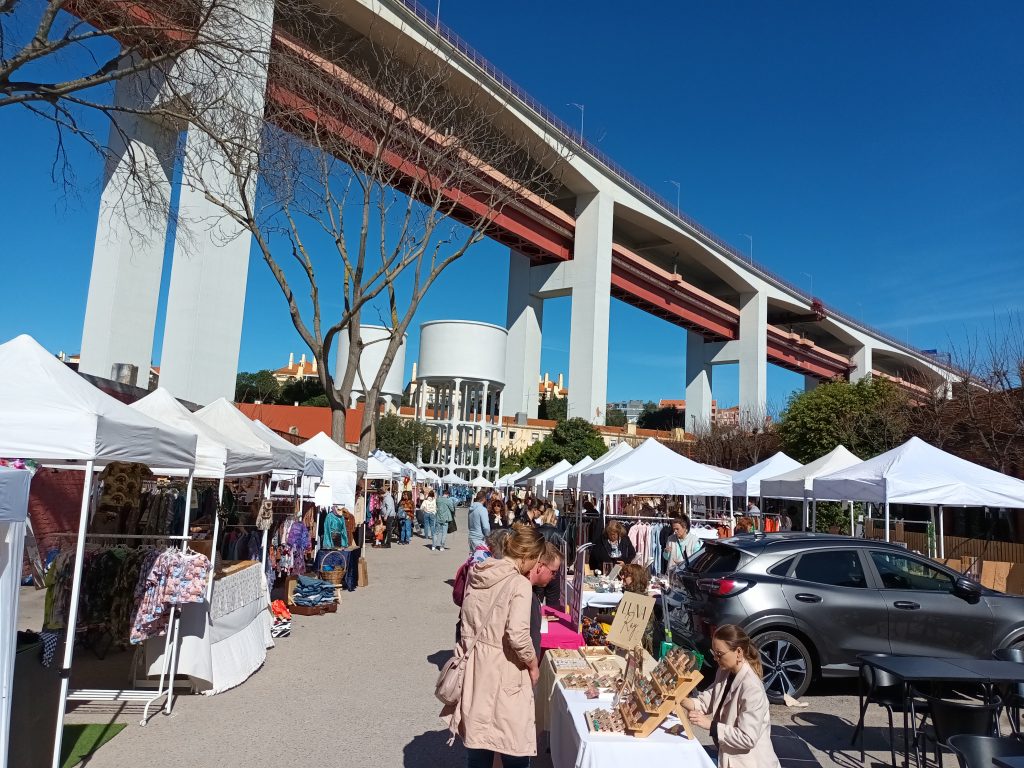
This area is home to some of the city’s best bistros and many shops, especially around the LX Factory. Take your time and enjoy walking around Alcantara, leaving maps and compasses behind. Most of the establishments did not exist a few years ago. So, if the old Alfama district has been ravaged by concrete that eats up the grass and the old stones, real estate and cultural creativity has transformed Alcantara to our great delight.
Our favourite is the Ler Devagar bookshop. This former printing house has been transformed into a huge bookshop and is a beautiful and inspiring setting. Its name, “ler devagar”, means “to read slowly”. What a program. You can also eat here.
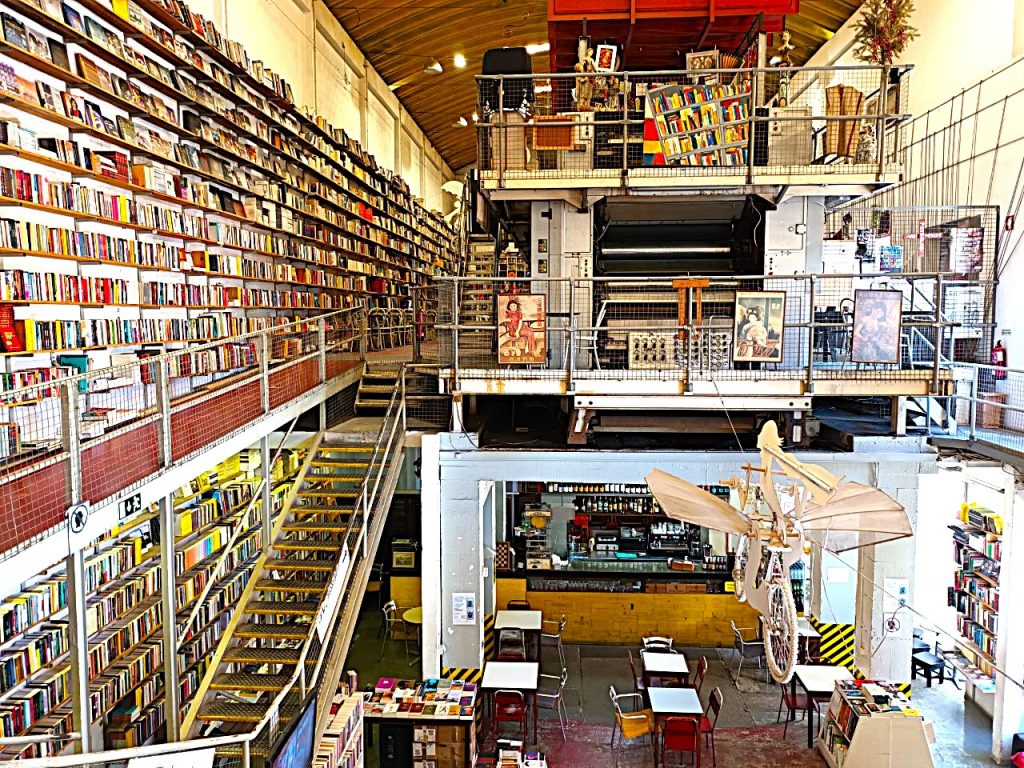
And if your legs allow it and your stomach recommends it, a walk along the beaches at the end of the day is ideal. The restaurants and docks will serve as a stopover for elbow-lifters.
Among the places we recommend for dinner, along the docks you will find the restaurant Le Chat with its varied dishes from the seabed or the Journalists Club in a cosy atmosphere with its risottos and ceviches.
Day 3 Belem
A Jewish Museum, Hatikva, is currently under construction by the great architect Liebeskind. A site in Alfama was planned, but in the end it will be located in Belem, the district of the museums and the largest monastery in the city, the Hieronymites. But before visiting this Manuelan monument, a visit to the famous pastry shop in the neighbourhood, “Pastéis de Belem”, is a must. Large rooms welcome customers in a sumptuous setting, ideal for savouring the specialities, the azulejos.

After visiting the monastery, you will find the Vasco da Gama garden opposite. Abraham Zacuto created astronomical tables with Hebrew characters, facilitating the journey of Vasco da Gama and other explorers. A painting pays tribute to this historical contribution.
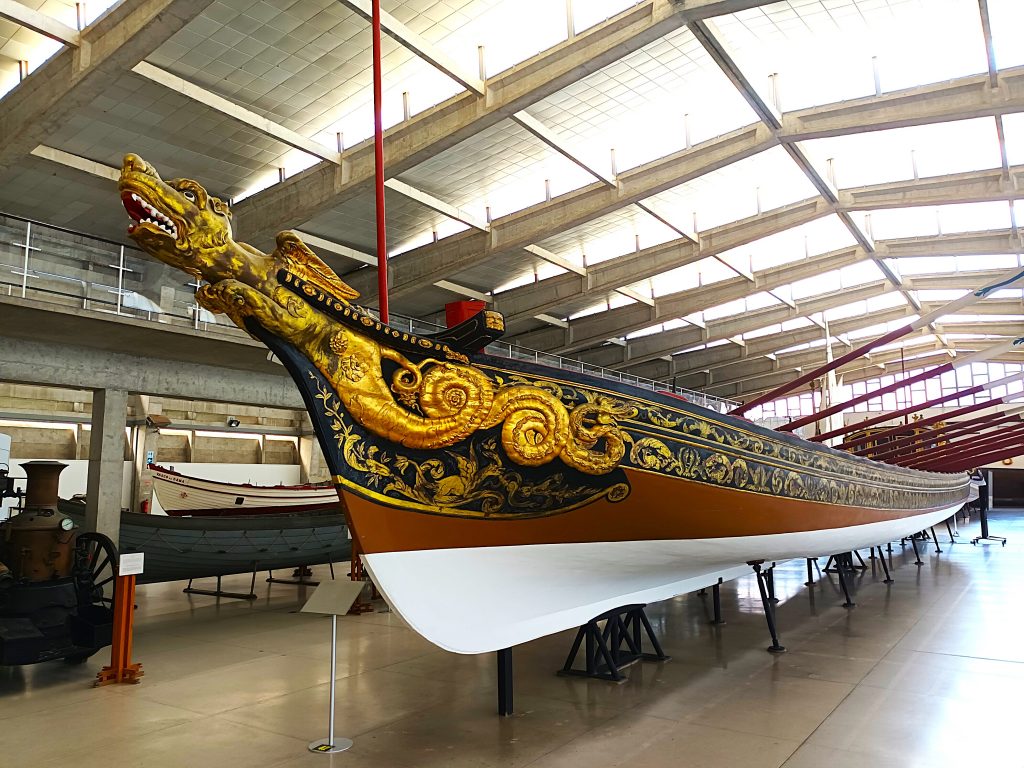
To the south of the garden is the iconic Monument of Discoveries. Built in 1940, it celebrates the 500th anniversary of Henry the Navigator. It was here that Vasco da Gama embarked. Another emblematic monument that will punctuate your stay is the Belem Tower, located just a kilometre to the east. Built in the 16th century, it served as a sentry and will ensure that your stay ends happily…
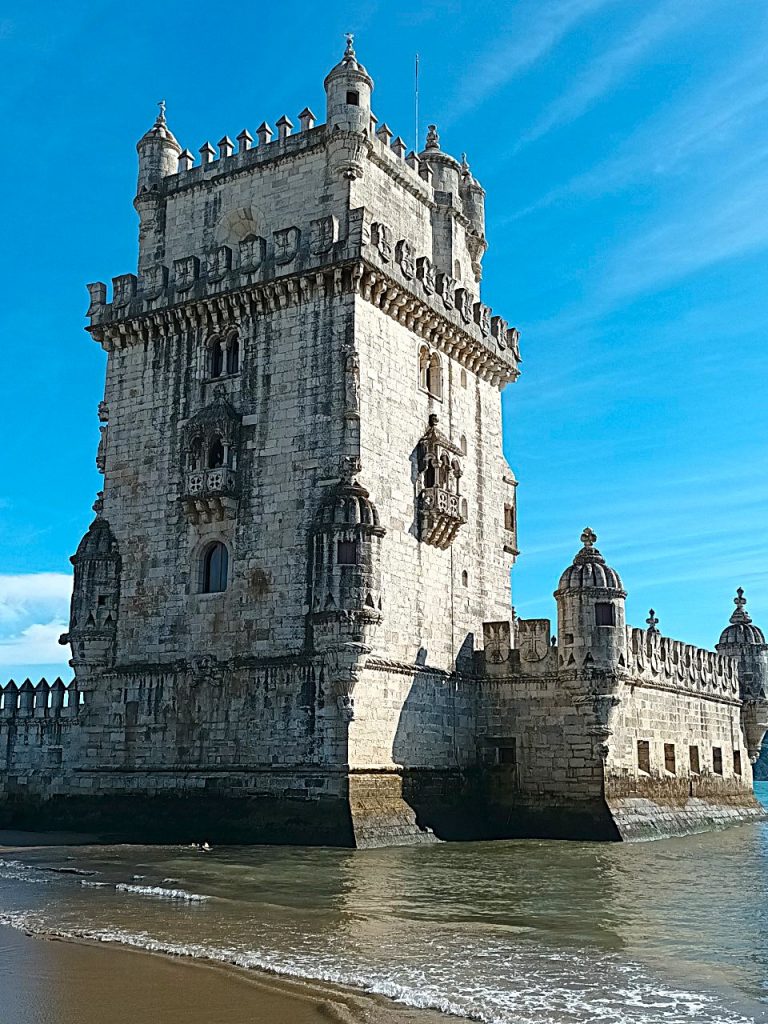
Interview with Esther Mucznik, Chair of the Hagada Association, in charge of the Tikva Jewish Museum of Lisbon
Jguideeurope: In the presentation of the future museum, you highlight both the Portuguese and the Jewish dimension. What were the main Jewish contributions to the culture and history of the country?
Esther Mucznik: Like many other museums, the Tikva Jewish Museum in Lisbon tells a story, the story of Portuguese Jews, from its documented presence in Roman times until today. Contrary to the stereotype that Jews are a people apart, foreign in some way, our aim is to demonstrate that it is as Portuguese of the Jewish faith that they contribute to the nation to which they belong. This contribution has been extremely important throughout the centuries and continues to be so. But it must be understood that this contribution takes place especially during those moments in history when national interaction and even relative freedom were possible.
This was the case in the Middle Ages, between the twelfth and fifteenth centuries, when Jews were the doctors and financiers of kings and nobility. When they were able to play a fundamental role in what is now called “Portuguese expansion”. As financiers, but even more so as astronomers, diplomats and interpreters, thanks to the many languages they mastered. In the field of culture, it is worth remembering that it was the Jews who introduced printing to Portugal. The first book printed in the country was the Pentateuch in Hebrew, in 1487. During the 15th century, there were three printing houses in Portugal (in Lisbon, Faro and Leiria), as well as a workshop of copyists and illuminators that produced superb manuscripts. This contribution does not stop in the Middle Ages. It continues in the Diáspora on a global level following forced conversions and the installation of the Inquisition in the 16th century, and continues in Portugal after its abolition to the present day.

David Harris, former CEO of the American Jewish Committee, has made a moving personal video, posted on your website, about Portugal’s role in saving Jews during the war. Can you tell us a little more about this role?
From 1933, the first waves of refugees from Nazism arrived in Portugal, mainly Germans. That same year, the Zionist youth organisation “Hehaver” created COMASSIS, the Portuguese Commission for Assistance to Jewish Refugees, chaired first by Adolfo Benarus and later by the doctor Augusto Esaguy. COMASSIS, which existed until 1941, played a decisive role throughout its eight years of existence. In particular, it received support from the Israelite Canteen and the Israelite Hospital, and managed to obtain material subsidies for its work from HICEM and JOINT. These American Jewish refugee aid organisations covered the refugees’ travel and living expenses.
It was also COMASSIS that obtained from the Portuguese authorities the authorisations for the establishment in Portugal, after the fall of France, of JOINT and HICEM, allowing them to carry out their charitable activities in Portugal.
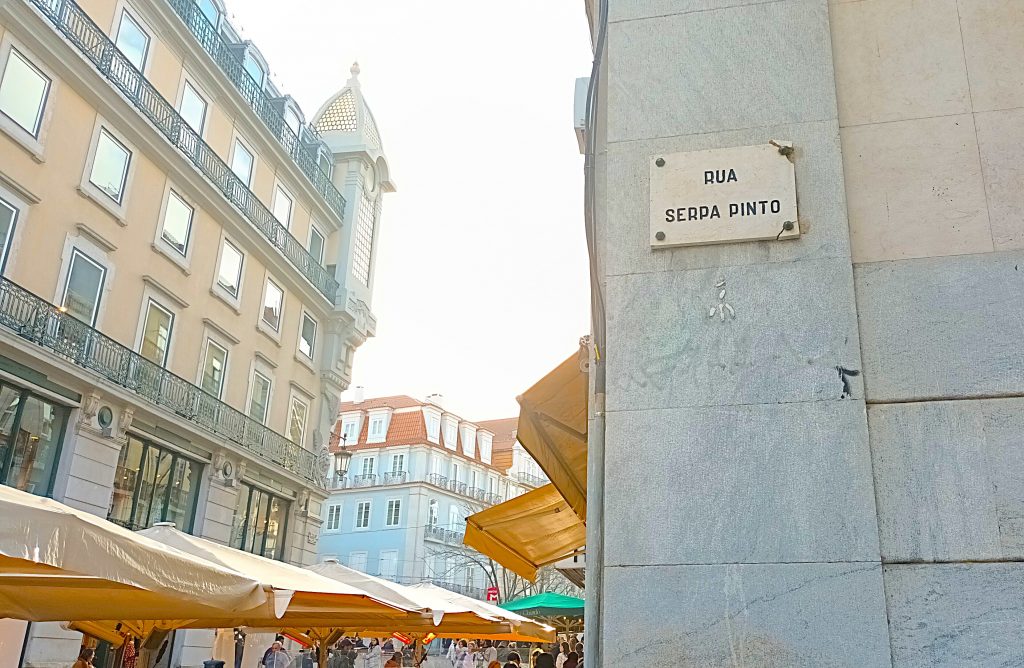
With the entry into the war in 1941, the United States lost its neutrality and the two American organisations were forced to leave Portugal. From then on, thanks to his fame and credibility, the president of the Israeli Community, Moisés Amzalak, already vice-rector of the Technical University of Lisbon, author of numerous bibliographies and, importantly at the time, enjoying Salazar’s trust, directly assumed, with the agreement of the directors of JOINT and HICEM, the aid to the refugees through the Community’s structure. Thus, the Refugee Assistance Section of the Lisbon Jewish Community was created, headed by the doctor Elias Baruel, vice-president of the Community, which operated until the mid 1950s.
Also, from a religious point of view, the Community provided devout Jews with the necessary books and utensils for prayer in the areas of fixed residence where they were confined by the State. Although small, the Jewish community in Lisbon played an important role in supporting and welcoming refugees. Composed of doctors, lawyers, teachers and businessmen, well integrated into Portuguese society and led by a man who enjoyed the confidence of the authorities, the community put these characteristics at the service of those persecuted by Nazism, helping to save thousands of people.

As Tikva means “hope”, and therefore hope for the future, what kind of educational projects are planned for the youth?
First of all, young people need to know what Judaism is, because the communities in Portugal are small and do not have the visibility necessary to make themselves known. Ignorance is the most fertile ground for stereotypes. There is also the music that is important, as well as the Jewish holidays with their culinary traditions. Not forgetting of course the great dates in history. Of course we will use new technologies to make each project clearer and more attractive. But everything depends, among other things, on the age of the young people and the professional quality of the person responsible for the educational service. There is still a lot of work to be done on this.
The Jews who lived within the walls of the little hilltop town of Castelo de Vide were engaged in the traditional activities of commerce, crafts, and sometimes medicine. The population grew after 1492 with the arrival of Jews from Spain.
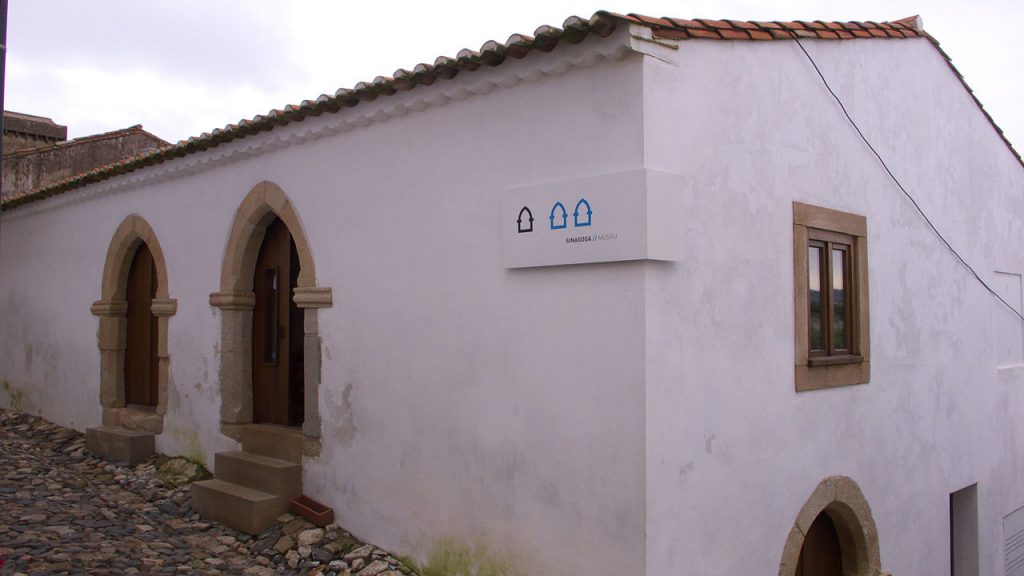
The former Judaria is fairly easy to identify around the market square (Praço de Comércio). Between the fourteenth and sixteenth centuries, the characteristic little streets led to the small synagogue.
A niche, used as a church altar in the seventeenth century, might be a vestige of the aron kodesh. The municipality is currently conducting research into this movingly simple building.
While the Spanish Inquisition led to the departure of many Jews, the town of Castelo de Vide developed economically, thanks in particular to the arrival of Jews from the neighbouring country. The Jews worked in arts and crafts, botany and medicine.
Following the expulsion order promulgated in 1496, many Jewish families remained in Castelo de Vide, agreeing to convert to Christianity. They were thus able to pursue a semblance of a normal working life. Among the town’s most famous figures is Garcia da Orta, author of an important medical book in the 16th century.
Sources : Encyclopaedia Judaica, Rede de Judiarias
Although there was an organized community in Tomar at the turn of the fourteenth century, indicated by the inscription on the tombstone of Rabbi Joseph of Tomar, who died in Faro in 1315, it was not until 1430 that the Jews of Tomar had the means to undertake the construction of the synagogue. A building that still stands today. It was completed in 1460.

After the expulsion of 1496, the synagogue was converted to a prison, then used by successive owners as a hay barn. In 1920, a group of Portuguese archaeologists identified the building as a synagogue.
It was placed on the historical register in 1921. In 1923, the engineer Samuel Schwarz, who worked in the region’s mines, heard about the building and bought it. In 1939, after carrying out initial restoration work, he donated it to the state with the provision that it set up a Portuguese-Jewish museum there.
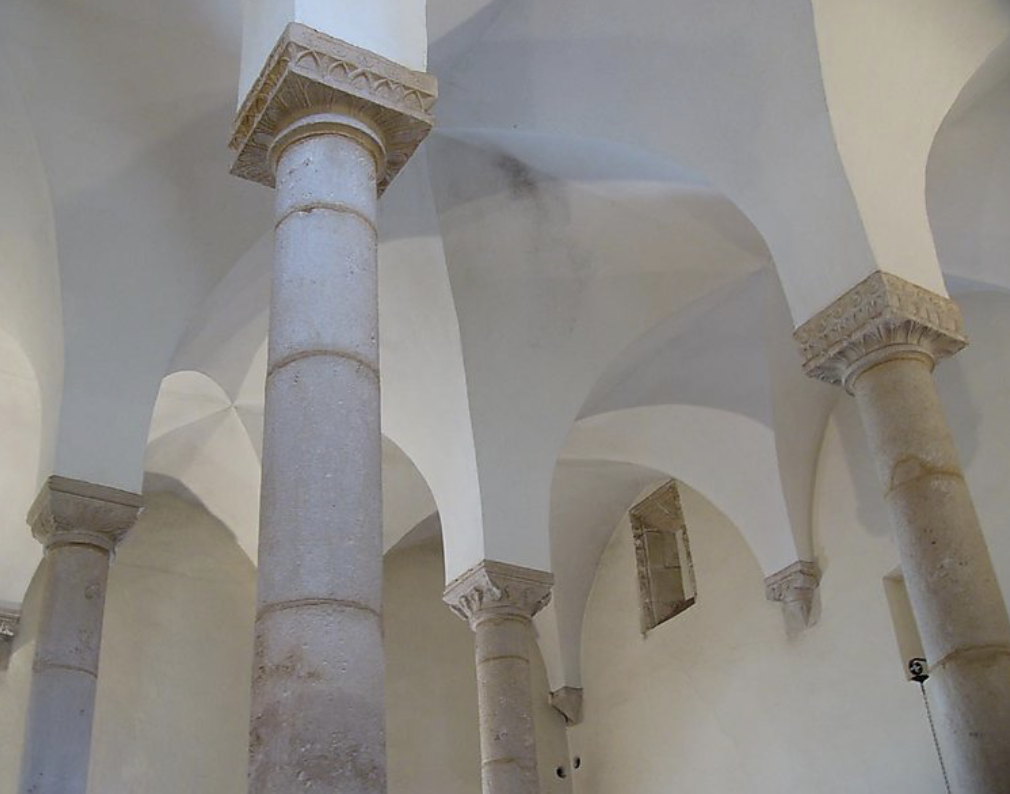
The synagogue is supported by four fine columns at the center, reminiscent of these in the Portuguese church at Ourem made by Hispano-Moorish craftsmen. Indeed, the same builders could well have been involved here. Recent excavation has revealed parts of the mikveh. Several coins from the age of King Alfonso V (1446-81) and everyday tableware have also been found.
The facade and entrance are modest and unremarkable. Upon entering, several steps lead down to the floor, which, below street level, made it possible to reduce the height of the facade.
Inside the synagogue is the Abraham Zacuto Museum, named in honour of the mathematician and author of the perpetual almanac (1450-1522). The permanent exhibition includes archaeological finds that attest to the Jewish presence in Portugal in the Middle Ages. There is a 1307 inscription from the old Lisbon synagogue. Another, dating from the 13th century and found in Belmonte, is just as interesting: the divine name is represented by three dots, in the manner of the Dead Sea Scrolls.
In 1917, during a mission in the north of Portugal, mining engineer Samuel Schwarz discovered the Marranos of Belmonte. Thanks to a multidisciplinary approach, his book, published in 1925, became an absolute study on the Marrano phenomenon and, above all, enabled the rebirth of Jewish life in the region.
The book gained a new popularity thanks to its publishing by the French editors Chandeigne. Here’s our interview with his grandson, Joao Schwarz.

Jguideeurope: How did Samuel Schwarz come up with the idea of translating his experience into a book?
Joao Schwarz: During his stay in Spain in 1908 and 1909, he already wrote his first articles on the Marranos (in French). With the father he had and the cultural tradition that prevailed at his home in Poland, it was natural for him to publish the results of his research. We need to add that during the era of 1919-1926, the Republic of Portugal enjoyed a certain form of freedom. The situation changed with the Estado Novo which, among other things, opened the gates of anti-Semitism and put back on track a much more asserted clericalism.

Why did it take 8 years to be published? And how was it perceived once it was done?
Since the beginning of his research and until the publishing of the book, it indeed took 8 years. Nevertheless, the census process and the inventory of the Marrano prayers lasted almost until 1924. During that time, he worked on the book about the Hebraic inscriptions in Portugal, which was published in 1923. That being said, the publishing of the text in Portuguese was accompanied by the printing of articles in the Jewish press.
Reviewing the debates of that era, we can claim that the articles and the book had a considerable effect in the Jewish world. That’s why Lucien Wolf and Paul Goodman, among others, were sent to Portugal in order to inquire upon that phenomenon. In Portugal, it was the beginning of a renaissance of Jewishness, with a lot of people from the region of Tras-os-Montes identifying with it.
Samuel was invited to blossoming reunions. That’s also where the rescue work started under the leadership of Capitain Barros Basto.
What is the impact of Samuel Schwarz’s commitment on the research concerning the Marranos and the national (re)discovery of the Jewish heritage?
I believe that the impact on research was decisive. Nevertheless, we had to wait until the middle of the 1980s to find a number of works that highlighted the rebirth of Jewishness in the region. Historians such as Anita Novinski, David Canelo, Maria Antonieta Garcia etc… Concerning the rediscovery of Jewish heritage, it’s another question. Indeed, an effort aimed at this heritage, through its preservation and valorization was only undertaken in the last fifteen years. Notably since the creation of the Rede de Judiarias of Portugal. We must also mention that the granting of Portuguese nationality to the descendants of Jews from that country contributed a lot, especially in those last years, to attract visitors interested by their roots. About 30,000 new Portuguese citizens settled in the country, particularly in the North.

Samuel Schwarz gave a plot to the city of Tomar in exchange for the building of a Jewish Museum on it. A museum which opened in 1939. Quite a rare event on the continent that year. What was displayed in it?
Samuel bought a building in 1923, which at that time was a sort of grocery warehouse. This building was already recognized as a national monument, without anything being done to preserve it. Samuel undertook cleaning works in order to reveal to the country what today represents the oldest Portuguese synagogue still standing. The oldest publishing on that temple (1925) was from Garcês Teixeira, an archeologist who shared the first elements of what was the Jewish community of Tomar towards the end of the 15th century. It must be noted that the annex building of the synagogue, which runs along the mikveh, was only discovered in the 1980s. After considerable works of restoration, which took a lot of time considering the means at Samuel Schwarz’s disposal, it was decided to donate it to the Portuguese State. On the sole condition that the “Museu Luso-Hebraico Abraão Zacuto” would be built on it. The place where the synagogue stands included at that time a few headstones and tombstones mentioning the Jewish past of Portugal. In return for this gift, the Portuguese government agreed to Samuel’s request and granted him the Portuguese nationality.
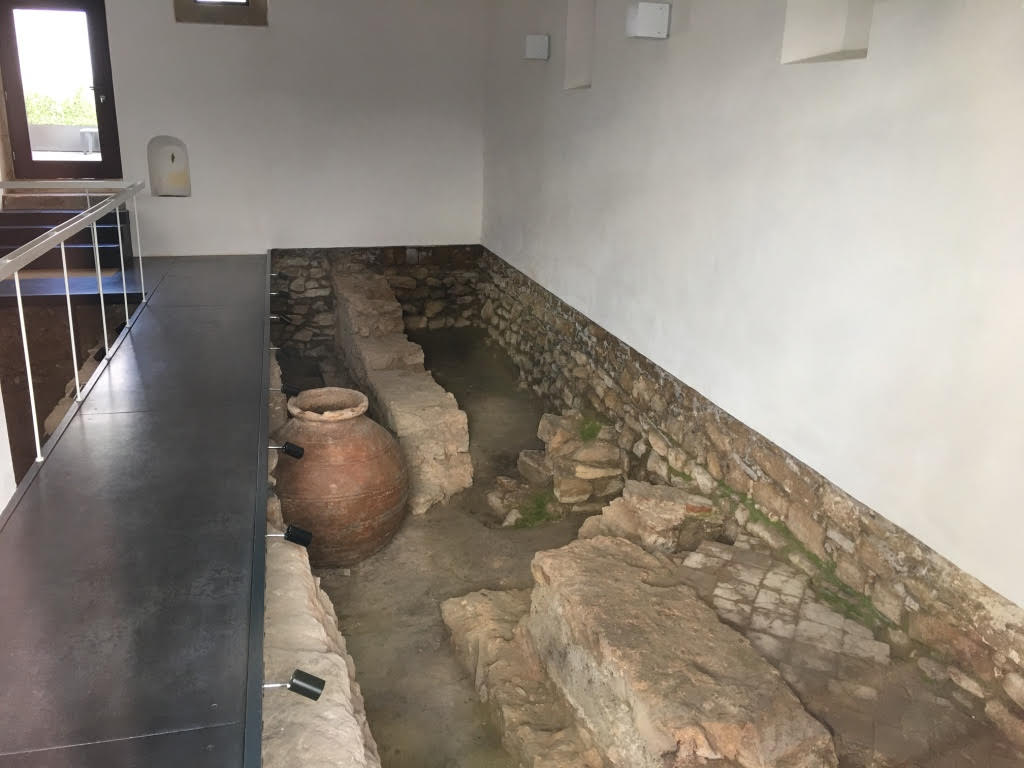
The introduction of the book by Livia Parnes describes the way the authorities “forgot” the museum’s vocation for many years. How is Tomar sharing that heritage today?
Indeed, the building was “forgotten” for many long years, due to reasons of administrative mastery. The synagogue doors were only opened thanks to the goodwill of the couple Luis and Teresa Vasco who, in all seasons, ensured its permanent opening. This is how the number of visitors was able to remain stable and to attain almost 100,000 a year in 2015. The municipal authorities, due to a lack of means, ignored the existence of the synagogue for almost 80 years. The deal changed with the creation of the Rede de Judiarias. The municipality was able to “refurbish” the synagogue and the adjoining space where the mikveh is located. Nevertheless, I think that in order to preserve and support this heritage, a sustained effort is necessary and not in fits and starts, as was the case until today. This supposes that the museum gets equipped with a person in charge of the resources.
Samuel Schwarz, La Découverte des marranes. Editions Chandeigne, Paris 2015.
The little community of Belmonte of between 100 and 300 souls was “discovered” in 1920 by the engineer Samuel Schwarz. Its existence was revealed to the world by Frédéric Brenner’s short film The Last Marranos in 1990.
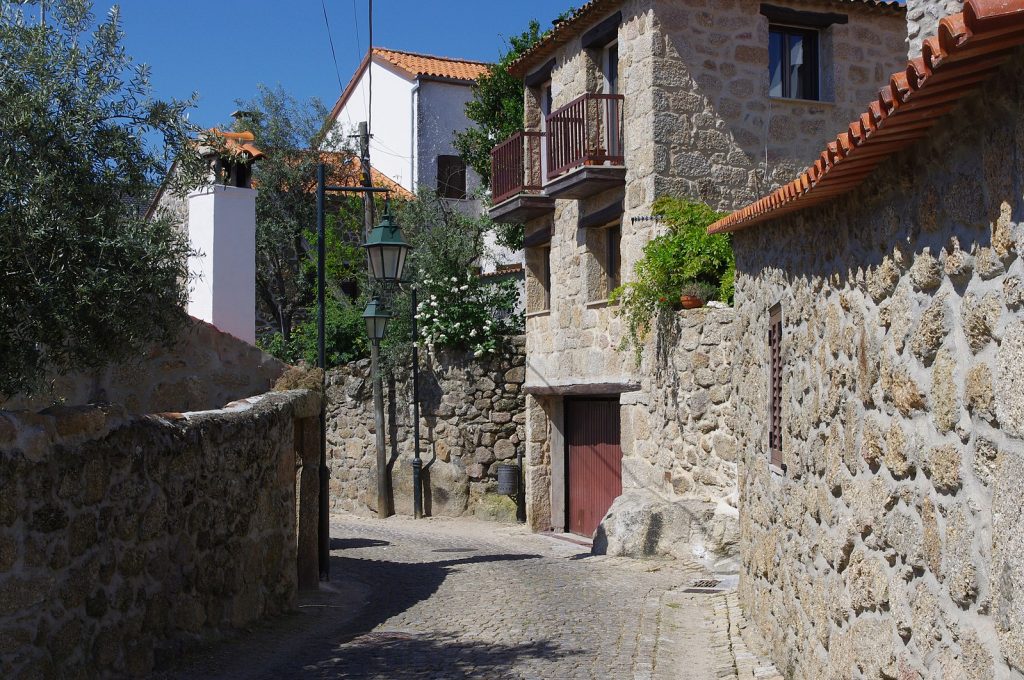
The Jews of Belmonte are one of the last groups bearing witness to the precarious life of Jews hunted by an all-powerful Inquisition and Church. They lived without rabbis, synagogues, or books. The faith was passed on orally by the women, who chose the moment when their children seemed capable of learning about their community identity. Socially, these Jews took full part in the village’s Catholic life of baptism, weddings, and funerals.
However, the non-Jewish population, especially the village priest, likely had some awareness of their secret practice. In any case, their rites were reduced to the bare essentials: Hebrew words and important Jewish figures (Adonai, Esther) were included in prayers spoken in Portuguese; a discrete light was lit on Friday evenings; they fasted frequently and cooked mazoth at Passover. Prayers were spoken either at home with all the windows closed, in the woods, or by the river.

After a rather complicated return to overt Judaism with the support of the Israeli authorities, the community at Belmonte has been consolidated by the construction of a synagogue, paid for by a patron, Salomão Azoulay, and seems to have returned to normal community life.
In the last years, Jewish culture has been revived in Belmonte. The synagogue organizes offices every night in summer, and there are Shabbat and holiday services throughout the year. There is also a mikveh in Belmonte, as well as a Jewish Museum opened in 2005. The museum underwent renovation in 2016 and reopened in 2017 with a new exhibition focusing on local Jewish history.
Jewish: a synonym for Portuguese
The brilliant history of the Portuguese-Jewish diaspora can be summed up in two symbolic examples. The glory of Amsterdam’s Jewish community, which built a majestic synagogue in 1666, is immortalised by the works of its members: in 1650, Menasch ben Israel, who had been raised in the Christian afith under the name Manuel Dias, wrote Esperanca de Israel; Isaac Aboab de Fonseca set up a community in Recife, Brazil, between 1645 and 1654; finally, Baruch Spinoza elaborated a groundbreaking philosophical system. The case of the “Senhora”, Dona Gracia Nassi, the wife of a banker, constitutes another illustrious example. She lived in Antwerp, Italy, and later Constantinople, where she developed her business interests and fostered numerous charitable institutions. She even founded a community of Spanish and Portuguese Jews in Tiberius, Palestine, thus reviving hopes of a return to Zion. At the time, there were Portuguese Jews throughout Europe, and “Jew” was often used as a synonym for “Portuguese”.
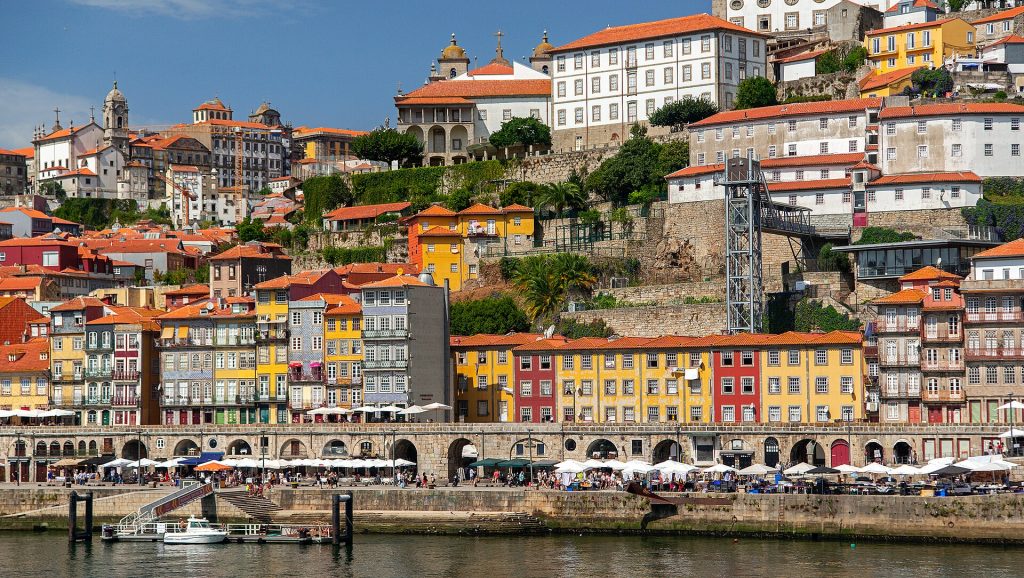
Porto is the capital of northern Portugal. It is the country’s second largest city after Lisbon. It is best known for its historic monuments and its wine. The Jewish presence dates back to the Middle Ages. The oldest Jewish quarter was located within the walls of the old city, where the Rua de Santa Ana is today, close to the Romanesque cathedral.
In 1386, Dom Joao I granted land to the Jews so that they could build a new quarter, close to the church of Nossa Senhora da Vitoria, which may have been the site of a former synagogue. The synagogue was located on the current site of the convent of S. Bento da Vitoria. Today, a plaque indicates this former location.

At the time of the Inquisition, the Marranos were forced to move to R. de S. Miguel, a secret synagogue located between numbers 9 and 11 of the street, as attested by a recent discovery.
There was also a Jewish quarter, Monchique, in the Bairro de Miragaia. In 1826, a historic Hebrew inscription, the “Monchique Stone”, was discovered and is on display at the Museu Arqueologico do Carmo in Lisbon.
Among the city’s leading Jewish figures were the philosopher Uriel da Costa (1590-1647), the physician Samuel da Silva (1571-1631), the rabbi and physician Abraham Pharar (?-1663) and the poet Bento Teixeira (1561-1618).
The name of the synagogue in Porto, Kadoorie, evokes the international reach of the Portuguese-Jewish community. Kadoorie is the name of a Portuguese-Jewish family that took English nationality and settled in Shanghai. Its members generously subsidized the construction of this fine monument with the help of the Portuguese communities in Lisbon, London, and Amsterdam in 1936. The synagogue has a capacity of 300 and offers all that is needed for religious service. It is to a large extent the work of Captain Barros Basto, who tried to bring the region’s crypto-Jews back to the faith of their ancestors.
In 2021, a Holocaust museum was created. Two years later, a memorial dedicated to the 842 victims of the Porto Inquisition was inaugurated. A long process of digitisation by the community of documents from Lisbon’s National Archives led to the identification of the names of these victims, which are now placed on a commemorative plaque 4 metres wide and 2 metres high. It is placed on one of the outside walls of the Jewish Museum in Porto .
By 2025, the number of Jews living in Porto had tripled in a decade, to around a thousand, largely thanks to the law on citizenship for Jews expelled following the Inquisition and the arrival of many students, particularly from France. Dozens of leaders of European Jewish communities met in Porto that year to note and salute this rare continental advance.
Today, Porto boasts a butcher’s shop, several kosher restaurants and another synagogue. Despite these very positive developments, the community has been the victim of anti-Semitic attacks under the guise of Palestinian support, with buildings damaged, including the Kadoorie synagogue, which was vandalised in October 2023.
Sources : Encyclopaedia Judaica, Rede de Judiarias, Times of Israel
A Portuguese Dreyfus
Raised in a Christian family in Porto, Barros Basto rediscovered Judaism when he visited a synagogue in Lisbon. After his conversion in Tangier, he married a young Jewish woman. He traveled tirelessly around the villages of the Porto region, speaking to the crypto-Jewish inhabitants and inspiring them with his fervent call to courageously and openly affirm their Judaism after centuries of secrecy. He was particularly concerned with providing a Jewish education to children, seeing this as the only way of rejuvenating the old communities. To this end, he set up a teaching college in Porto. He had many enemies in the Salazarist movement, however, and, when false charges were leveled against him, he was condemned and stripped of his rank in 1938. He died in poverty in 1961. Portugal rehabilitated him in 1997, officially acknowledging his innocence and tireless devotion.
Although the Judería in Hervás was small, a local proverb that “in Hervás there are many Jews” made the quarter famous. It stood close to the Ambroz River near the town’s exit.

The Calle Rabilero and Calle de la Sinagoga are the most picturesque, with a fine fountain dedicated to Jewish-Christian friendship and two-story brick and chestnut-wood houses with many flowers. Local bakers continue to make an unleavened bread, homazo, possibly in memory of the matzohs eaten by the Jews at Passover.
The community of Trujillo is first mentioned in 1290. Just before the expulsion, it had 150 members. All of them went to Portugal.

Not long ago, construction in the back of a pharmacy brought to light the site of an old synagogue. An inscription from Psalms (118-20) reads: “This door is the door of the Lord: the Just will enter through here”.
The adjoining house has two vaulted rooms that are disfigured remains of the synagogue. Sadly, they cannot be visited.
Cáceres had a fairly sizable Jewish presence after the Christian reconquest. In 1479, 100 married Jews were listed in a community with some 650 members. They lived in two juderías: the “old” one was on the site of today’s Casa de las Veletas, and the “new” one was around Plaza Mayor, where the Jews had most of their shops.
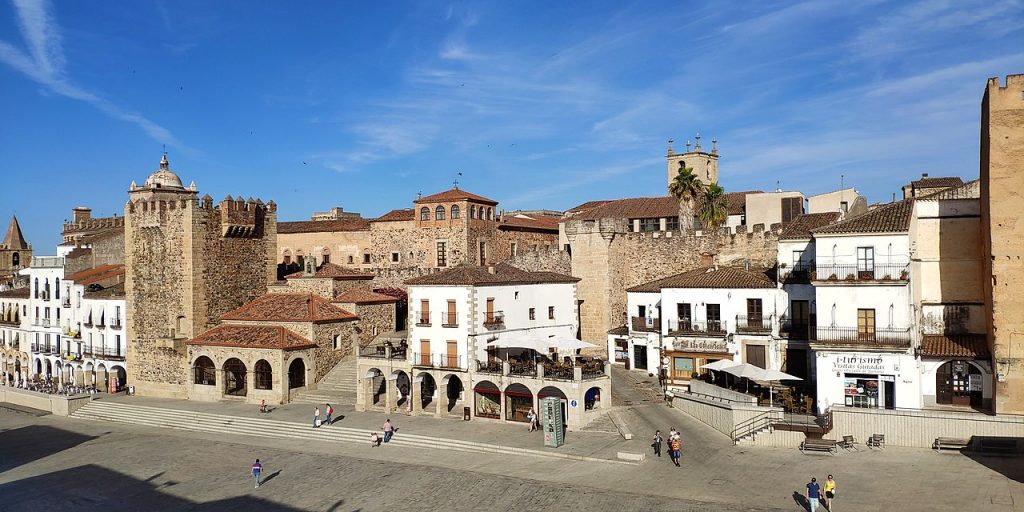
The San Antonio chapel is probably an old synagogue that was transformed. Small, with a porch and single hall, it is built on the traditional synagogue plan.
The chapel, now unused, serves as a conference room for the cultural center housed in the Palacio del Marques de la Isla . It too might once have been a synagogue.
Seville’s Santa Cruz quarter, protected by the Alcazar, was formerly the city’s famous judería.
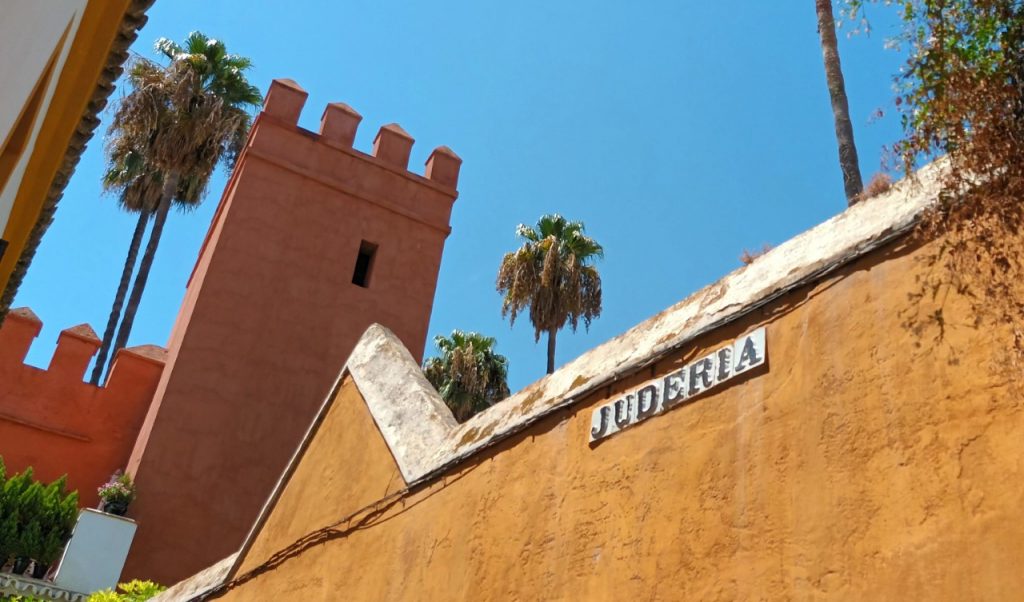
If the English like to dine early compared to the French, they enjoy this meal at Spanish lunchtime. Which continues from tapas to tapas throughout the afternoon. Yes, it’s a bit of a cliché, but that’s the impression you’ll get as you walk through the old quarters of Iberian cities, with tourists and locals mingling and bequeathing to each other the prized spots on the café terraces. On the other hand, when it comes to visiting historical monuments, it’s best to be in bed early. And Seville is no exception to this rule.
The ancient synagogue of Seville is only open for a few hours a day, and then only for a few hours at a time. So it’s best to start your visit with this one. In the summer of 2022, our team went there at 11:15 a.m., Google announced that the place was open until noon, and in the end the synagogue had been closed since 11 a.m., postponing the visit until the next day. Was it a hasty departure of the faithful to anticipate lunch?
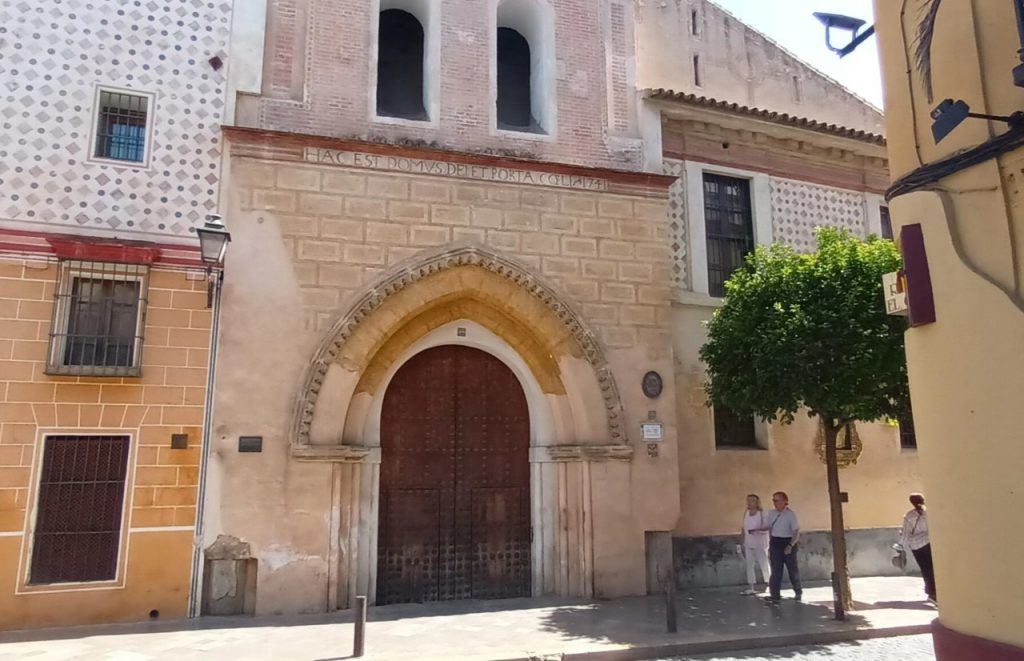
Despite the somewhat ironic tone of this presentation, we must admit that these extended visits to the city’s bistros were very pleasant. Of course, you won’t find places with such aberrant names as Houmous Kafka in Prague, but some establishments, with very tenuous links to the culinary customs of the old Jewish quarter, use the name juderia to attract tourists. The pleasure lies in the loss of time and space in these alleys with their pearly facades, so full of colour and history. And in the courtyards and interior gardens that a few doors allow you to admire.
The maze of streets and their evocative names give a good idea of what it was like in 1492. Be sure to stroll around the Calle de la Judería, Callejón del Agua, Calle des Levis, and the Calle de Santa María, which may have been the main street.
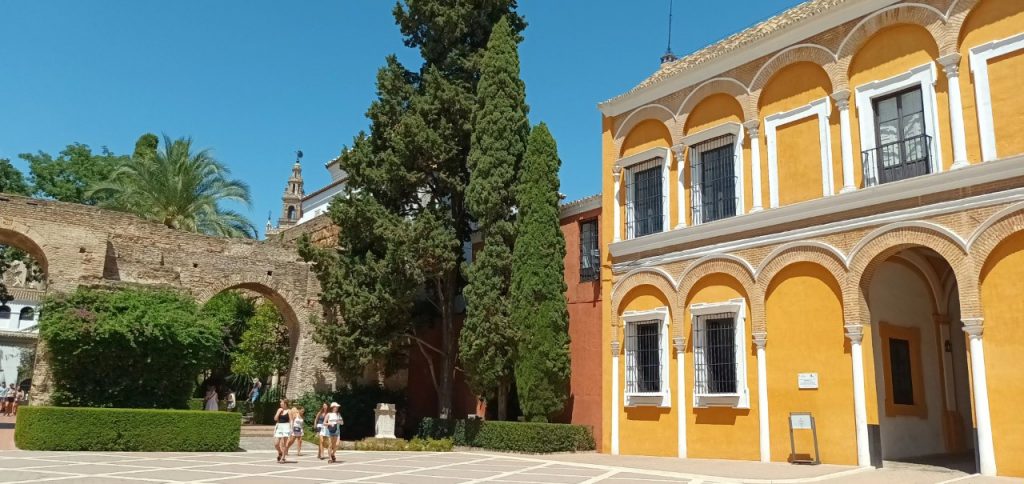
The name of the Calle de la Susona attests to an old legend concerning a converso uprising against the Inquisition led by a woman, La Susona. The whitewashed facades, flowers, and patios make this a charming quarter and give us an idea of daily life in Sepharad. Note, however, that the squares were opened up in the nineteenth century in order to make the quarter more airy.
Inside the cathedral , the pedestal of the Mausoleum built by Alfonso X for his father, Fernando III, has a Hebrew inscription giving the date of the king’s death according to the Hebrew calendar. The cathedral treasury has the silver keys given to King Fernando III by the Jews. They bear two inscriptions in Hebrew announcing that “God will open, the King will enter” and “the King of Kings will open, the King of the whole earth shall enter.”
Three seals belonging to Jewish figures in the twelfth century are on exhibit at the Archaeological Museum , and the Archives of the Indies has a copy of Abraham Zacuto’s perpetual almanac, used by Christopher Colombus and Vasco da Gama.
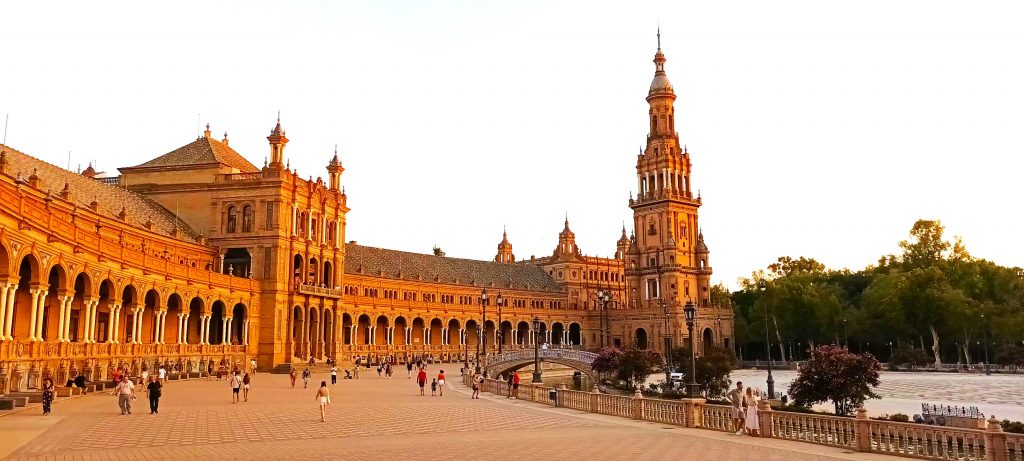
You can extend the visit to its magnificent monuments that defy time and reconcile cultures, neighbours of a few walls and centuries. Starting with the sumptuous Alcázar and its gardens, then along the different palaces and the university, you can spend a very pleasant end of the day at the Plaza de Espana. This monument, designed for the 1929 exhibition, is half-oval in shape and stretches for 200 meters. The artistic works, especially the ceramics, pay tribute to the diversity of the Spanish provinces and their key cities. While the little boat rides in front of the monument will amuse some, our team particularly enjoyed the impromptu shows on the steps, mainly flamenco.
The originality of the Plaza de Espana has inspired many filmmakers, with the location being used as a set for films as different as Lawrence of Arabia, Star Wars, and Sacha Baron Cohen’s The Dictator. The latter film, with its dialogue in Hebrew, brings a humorous Jewish touch to this place and this city, which today are symbols of a harmonious and generous meeting of cultures. Afterwards, take a walk in the park to the pretty little bridge protected by swans. On the way back, along the Paseo de las Delicias, you will come across the Torre del Oro, which once protected the city from invasion.
Homeland of Maimonides, Cordoba was under the Arab Caliphate of Abderahman III the greatest Andalusian juderia. Under the Muslim rule, the Jewish community lived in harmony with the conquerors, who, to save their armies, entrusted to the Jews the administration of Seville and Cordoba.
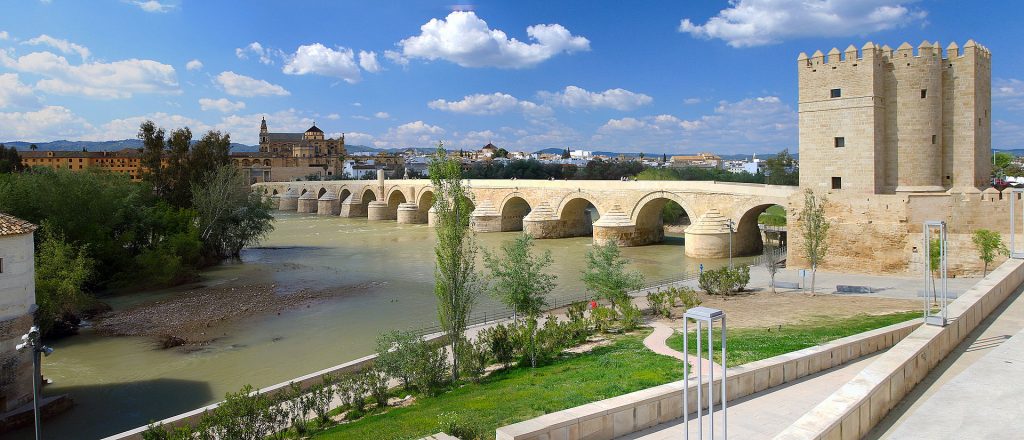
The history of the Jewish community of Cordoba follows that of the Arab occupation and Almohad and Almoravid invasions, which limited the freedom granted to the Jews when they weren’t massacring them, causing the escape of the community towards Granada. Nevertheless, this period from the 10th to the 12th century is the most splendid golden age of Sephardic culture in Spain.
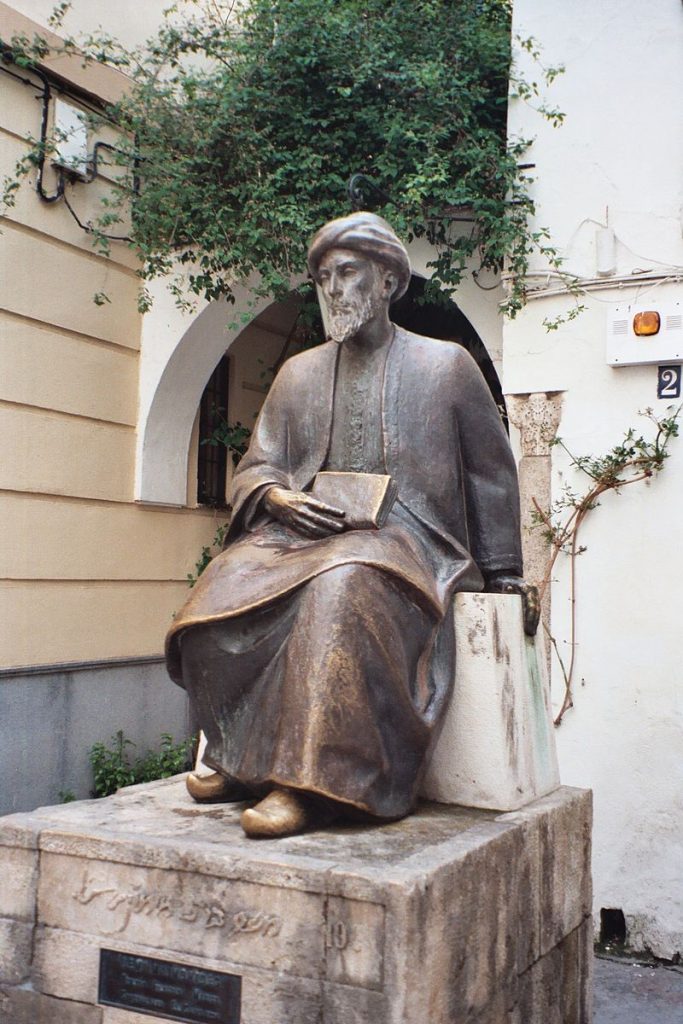
In 1236, Ferdinand III took over the city and granted a number of privileges to the Jews but required a tax of 30 gold coins each year. Under the reign of Ferdinand III, violence began to reach its climax with the sermons of 1391 and the many forced conversions. In 1492, the community complied with the decree of the Catholic Monarchs and emigrated largely to Portugal and North Africa.
Maimonides
Born in Córdoba in 1138, he was also known as RaMBam, an acronym for Rabbi Moses Ben Maimon. Lawyer, philosopher, the most eminent thinker of medieval Judaism, doctor and astronomer. His contribution to the religious literature of judaism, and Jewish thought in general is immense, both in the field of Halakhah and in that of philosophy. The centerpiece of his legal work remains the Michneh Torah (the second Torah). This is the most compelling compilation of Jewish law ever written. The moreh nevukhim “guides the lost”, constitutes a peak of the Jewish aristotelianism of the Middle Ages. The philosophy of Maimonides is also expressed through his works of Halakhah and the responsa he wrote as a decision-making rabbi. He was, indeed, the highest rabbinic authority of his time.
Following the seizure of power by the Muslim dynasty of the Almohads, who were known for their religious fanaticism, the family of Moses was forced to flee in 1148. After a period of wandering, they moved to Fez in Morocco in 1160. It was there that Maimonides was trained as a doctor. In 1165, Maimonides and his people left for Egypt and Palestine. They first stayed in Alexandria, then in Fostat, the old city of Cairo. Maimonides was financially helped by his brother David, a rich merchant who died in 1169 in the Indian Ocean. This allowed the young man to devote himself exclusively to studying. Then he began to practice medicine, and in 1185 he became the doctor appointed to the court of Vizier Saladin Al Fadil. In 1177 he was appointed head of Fostat’s Jewish community until his death in 1294.
Extract from the encyclopedic dictionary of Judaism, Cerf, Paris 1993.
The Jewish quarter extends near the mosque and the episcopal palace. Enter through the Moorish Gate of Almodovar. The names of squares and streets, given in the nineteenth century, allude to this past: the place of Maimonides, Juda Levi and Tiberias, etc. The most important monument is the synagogue miraculously preserved. It was built, or rebuilt, in 1315, according to the inscriptions on the building. After the expulsion, it was turned into a hospital and, in 1588, became the headquarters of the Brotherhood of Shoemakers in the city. Rediscovered by an archaeologist in 1884, it was immediately declared a historic monument and restored. It is reached by a small patio and a modest door underlined by a brick arch. The interior, Mudejar style, has a square shape (6 m by 6, approximately). The decoration based on plant motifs is very rich. It is accompanied by inscriptions, especially around aron ha-Kodesh: quotations from Isaac Moheb ben Efraim, who would have completed this temple in 1315, taken from the Book of Psalms written in red on a blue background. It is, after Toledo, the most spectacular symbol of the Jewish presence in Spain. The building is also a UNESCO World Heritage Site since 1994.
At the archaeological museum of Cordoba you can admire a Jewish tombstone found in 1958 in Lucena. It was embedded in the wall of a house in this city. It reads: “Rabbi Amicos, sleep in peace and rest in peace until the arrival of the consoler announcer of peace at the gate of Salem and who predicts the good news of peace. May your house be at peace.
Finally, you can complete your visit of the Jewish Cordoba with a detour in the cultural center, bookshop and shop Casa de Sefarad which organizes exhibitions, guided tours of the judería, concerts and conferences.
Interview with Marta Puig Quixal, Head of Caminos de Sefarad
Jguideeurope: What is the Caminos de Sefarad’s main mission?
Marta Puig Quixal: A coordinated action among many cities all over Spain to recover the traces of the Sephardic culture. An essential culture within all our different roots, but despite this reality, it remains the most unknown. Therefore, the main mission focuses on the research of our own Spanish history through the history of the families that once lived all around the cities.
Another key mission is to connect physically and emotionally with the Sephardim around the world. Those who maintained this culture and tradition alive during the five centuries, it was originally hidden and forgotten.
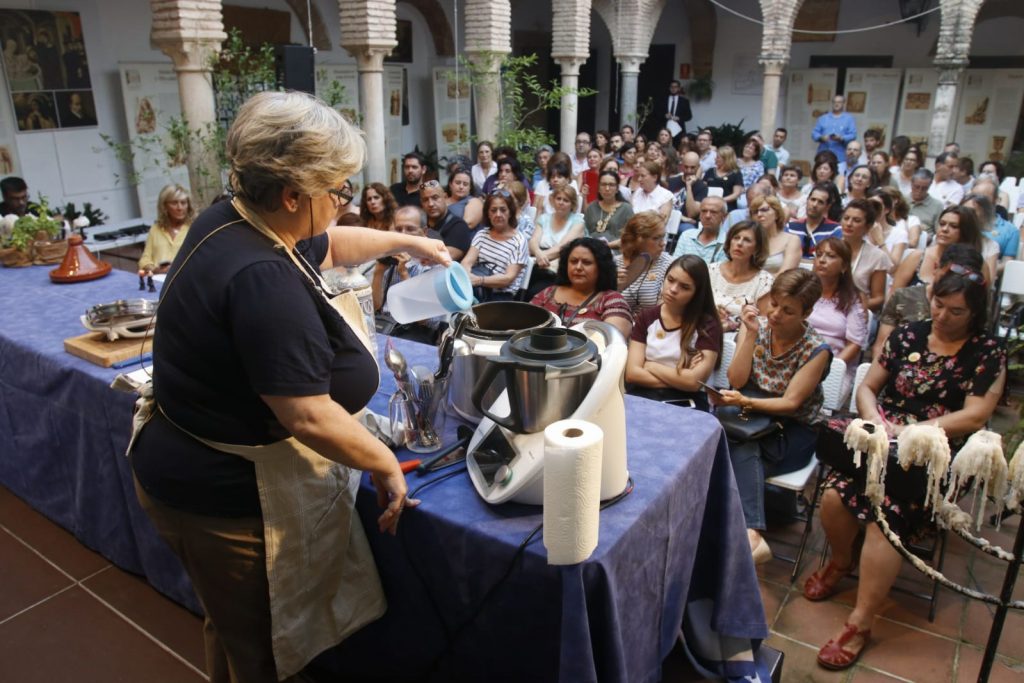
Can you share a personal anecdote about a previous event?
I prefer to highlight how emotional and touching my job is, even for a non-Jewish like me. I go abroad often, spending time and efforts on promotional and cultural activities. I always look forward to the great chance to meet the Sephardic communities wherever it may be. I personally think that Sephardic Diaspora constitutes one of the most incredible historical events of all time. And the feeling of belonging to a place (Spain), that ancient generations left, sorry, were forced to leave centuries ago, is unbelievable.
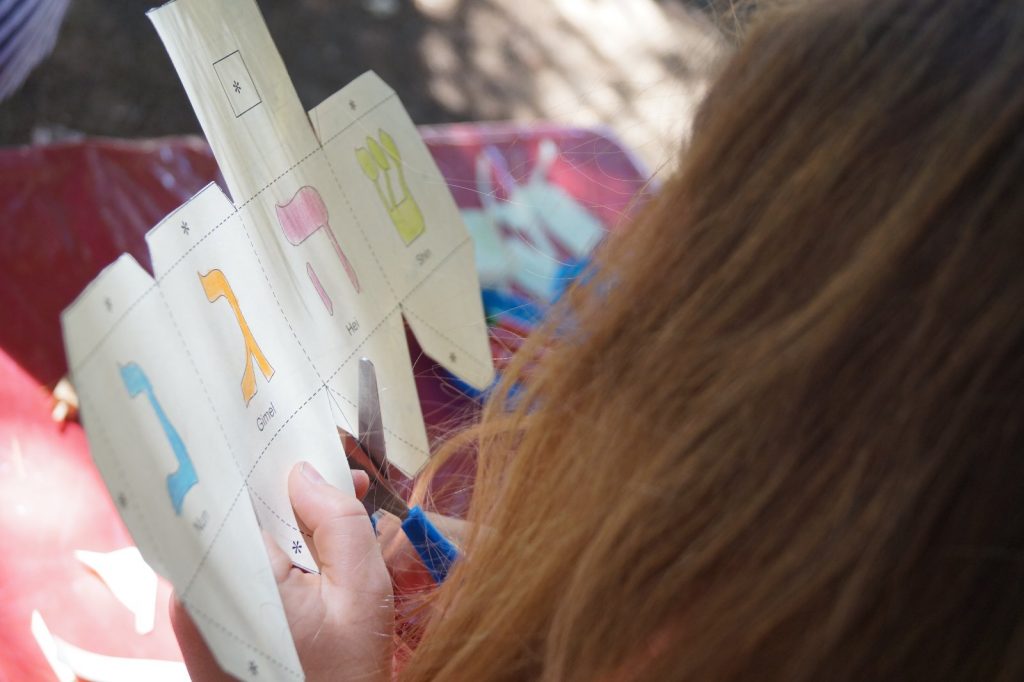
Which particular place related to Spanish Jewish Heritage do you feel should be better known?
It is impressive that more than five centuries of trying to erase every Jewish sign from our heritage and history was not enough to discourage the enthusiasm of rediscovery by Jews. If we all agree the Jewish preserved heritage today is not one of the most impressive from a preservation point of view, we have to admit that the storytelling connecting all our destinations makes it highly emotional, exotic. It all becomes very interesting for both national and foreign visitors. Any of the 21 quarters that we have recovered deserve a visit, and all should be better known.
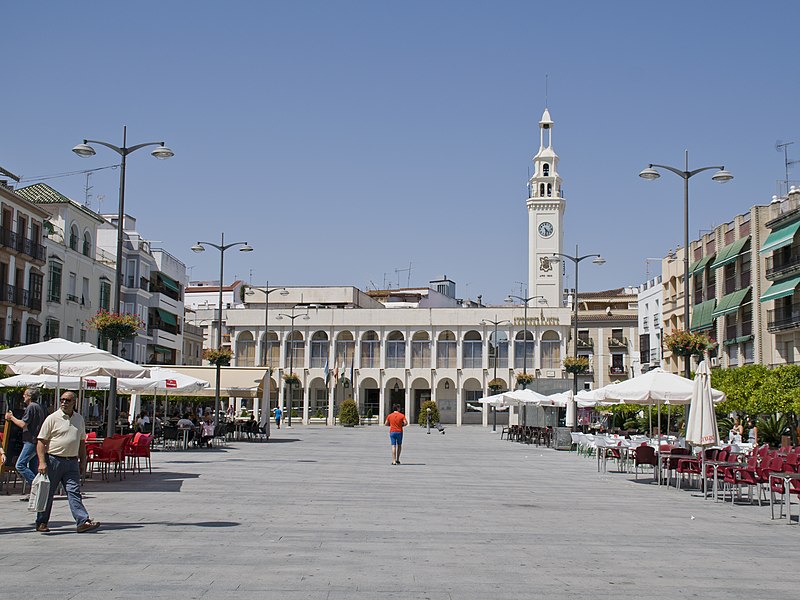
Famed in the eleventh century for the influence of Talmudists such as Isaac ibn Gayata, Isaac Alfasi, and Joseph ibn Migas, who founded the so-called “Lucena School”, Lucena preserves few material signs of its Jewish past. While the site of the Judería is reasonably well established, that of the synagogues is uncertain. However, two popular customs recall the Jewish heritage: the first is giving the house a general clean-up on Saturdays, and the second is white-washing houses a few days before Holy Week. These probably derive from the old tradition of cleaning at Passover.
Granada’s splendor was at its apogee in the eleventh century, when Samuel ha-Nagid and his son Joseph were in charge of the kingdom. The large Jewish population exceeded 5,000 and reached 20,000 by the eve of expulsion. Sadly, the Judería was destroyed by order of the Catholic monarchs.
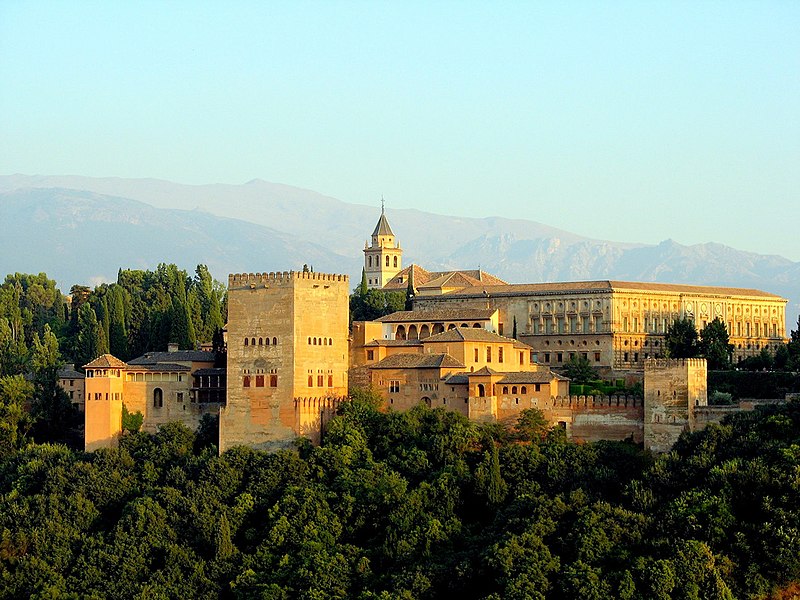
In Granada’s center, Calle Pavaneras , the modern statues of Yehuda ibn Tibbon and the Talmudist and poet Samuel ibn Negrella remind us of the city’s Jewish past.
When visiting the Alhambra, it is worth remembering that the Ambassadors’ Room was where the Catholic monarchs signed the edict expelling Spain’s Jews on 31 March 1492.
The call is clearly defined by a small square and the Carrer de la Call. It is one of Spain’s most important for the quality and richness of its houses, even if urban development work has done away with the smaller streets and blind alleys. The location of its four gates is known, but not that of its many synagogues.

The church of Santa Eulàlia is traditionally the preserve of the chuetas, a community of silver and gold workers who by custom marry endogamously. Historians have recently taken a keen interest in this particular case of marranism.
The Royal Archives of Majorca has two rare parchment ketuboth, and there is a compass at the harbor front recalling the cartographers of the Cresques family.
Documents tell us that there were also Jews at Inca, Felanitx, and Minorca, but all trace of them has disappeared.
The Jewish community was reborn at the turn of the 1970s, and was officially recognised at a ceremony on its premises in 1987. Nearly 1,000 Jews now live in the Balearic Islands.
In 2018, a commemorative plaque was unveiled in the square in Palma, where 37 people were burned alive in 1691 because they were Jewish.
Teruel became important as the supply center for Catalan-Aragónese troops sent out to conquer Valencia. The Jews here became specialized in weaving wool. The Lonja, or produce exchange, was open to both Jewish and Muslim traders.
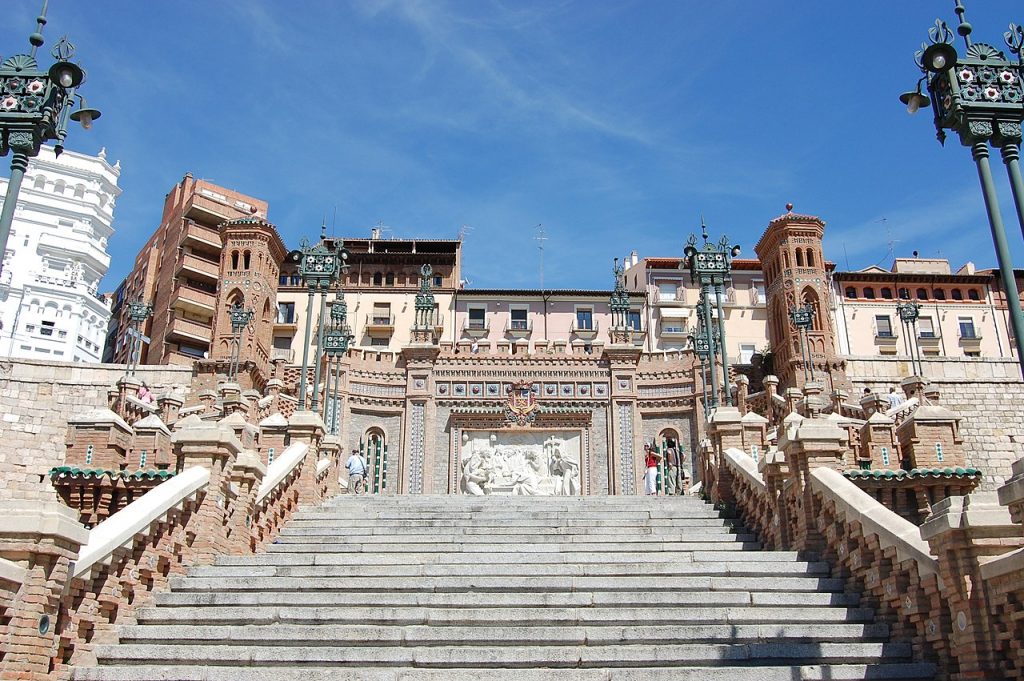
The local museum (Museo Provincial) has an interesting Hanukkah lamp made in the local green ceramic. Discovered in 1977 during an excavation in the old Jewish quarter near Ambeles castle, it has the traditional form, with eight holders for the candles synonymous with this festival commemorating the purification of the temple in Jerusalem in 165 C.E. Note the geometrical drawings and the alternating colors, showing the Jewish community’s adaptation to the region’s artistic techniques and contribution to the town’s prosperity.
Tortosa was home to one of the peninsula’s oldest communities, as attested by a seventh-century headstone discovered in the nineteenth century and now on display in the cathedral cloister. Its incription is in Hebrew, Latin, and Greek and features two stars of David and a candelabra.
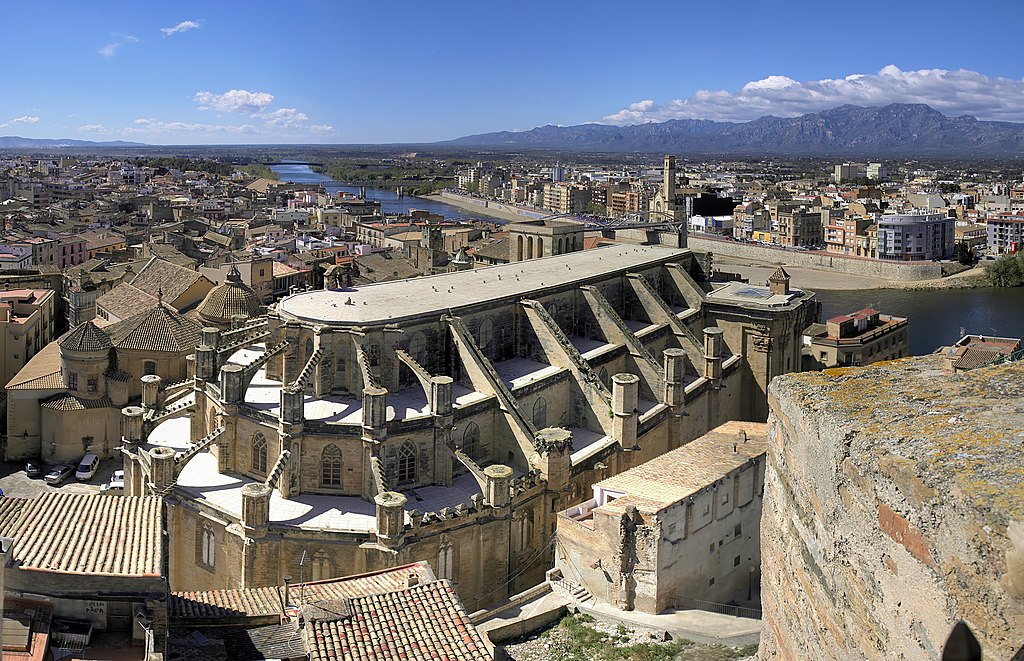
The community thrived under Arab rule, with its illustrious sons including the grammarian Menahem ben Saruq and the poet Levi ben Ishaq ibn Mar. After the town’s reconquest by Berenguer IV in 1148, the Jews obtained fiscal privileges and were granted land to build houses. The community flourished during this century thanks to the trade from the port, and its population rose to 300.
Tortosa was the setting of a debate between Jeronimo of Santa Fé and various rabbis. It was ordered by the antipope Benedict XIII, who hoped to persuade the Jews to convert to Christianity. Visitors can imagine the scene by going to the room where it took place, the chapter house of the Aula Mayor.
The narrow streets around the parador and calles Mayor de Romlins, Jerusalem, Vilanova, Gentildones, and Figuereta still evoke the old call.
Standing on the trading route between Lérida and Tarragona, Valls had a thriving little community that was, however, almost annihilated in the pogroms of 1391, a few Jews remaining after…
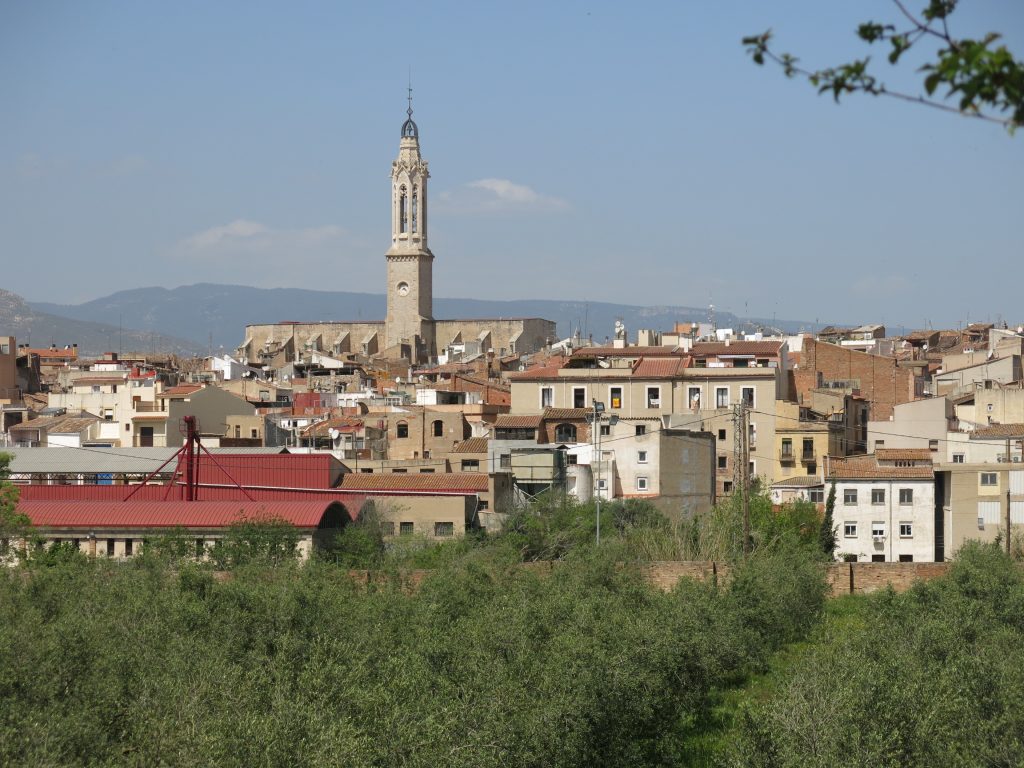
One can nonetheless visit the call, which has kept almost entirely intact its original structure and some of the old names of its streets (Carrer dels Jueus and Carrer du Call). At number 18A on the Carrer dels Jueus the patio could well have belonged to the old synagogue.